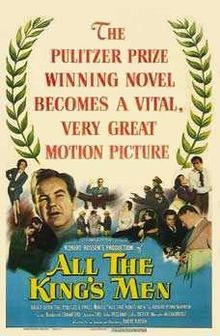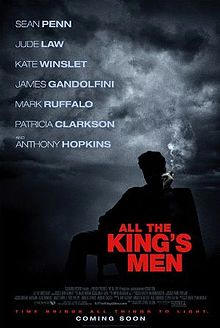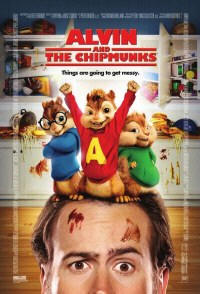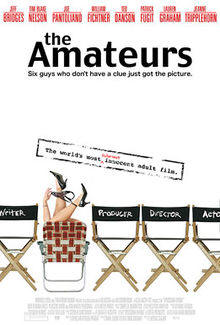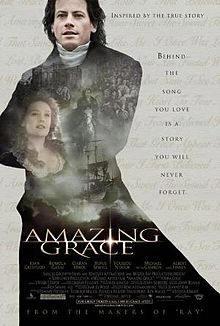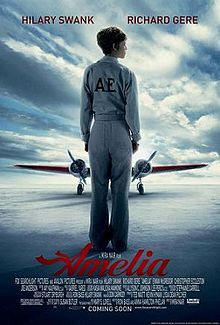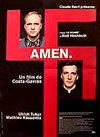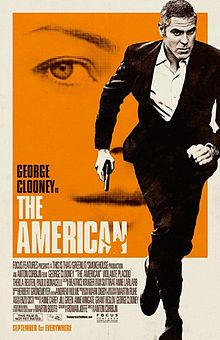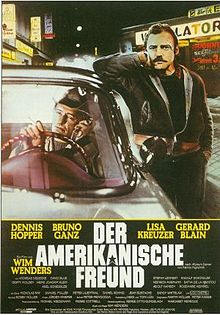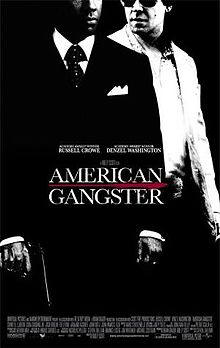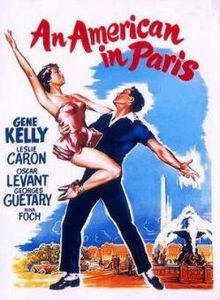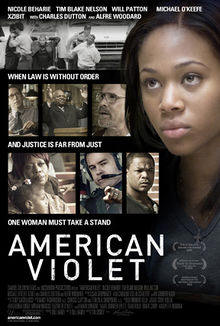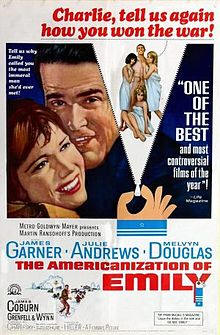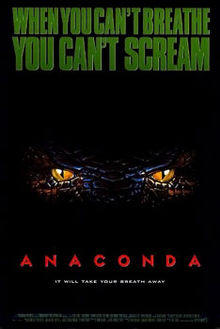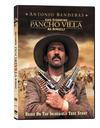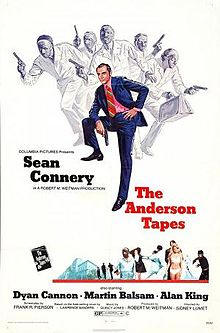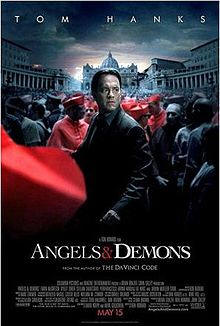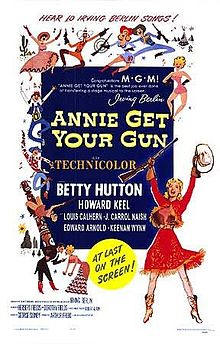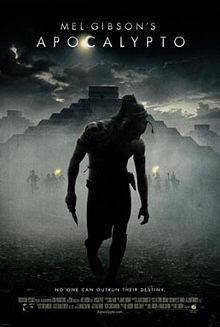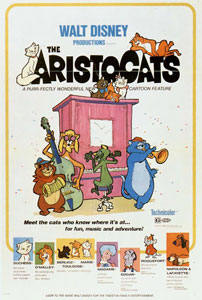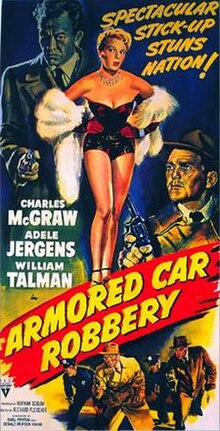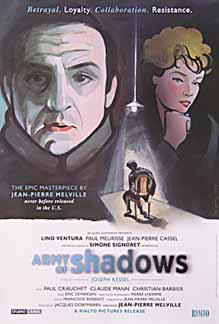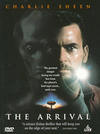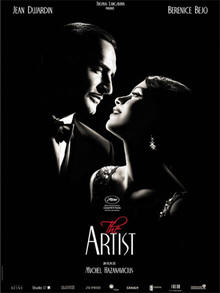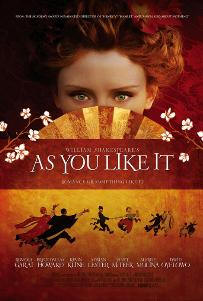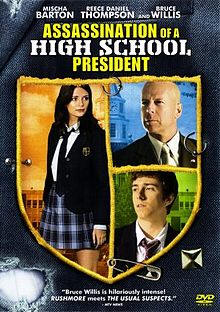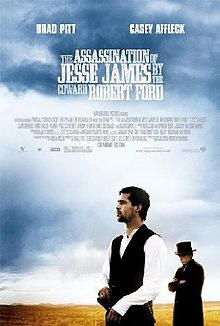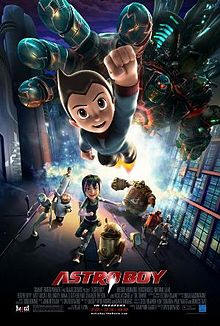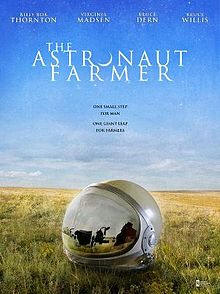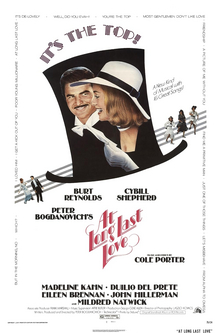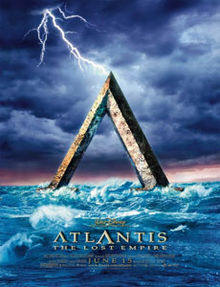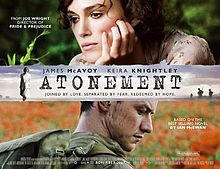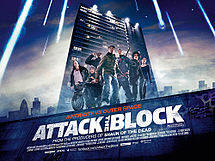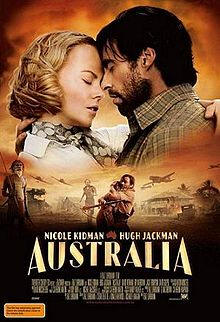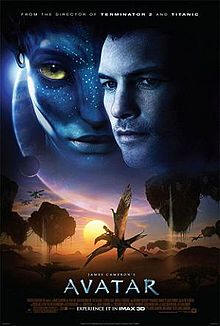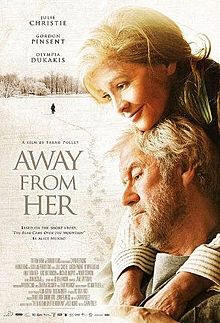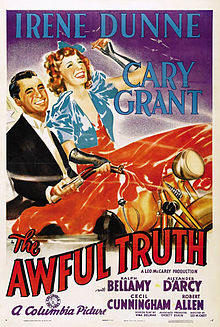|
Movies we've seen © 2004-2013 by John Varley; all rights reserved |
#-A
|
2 Days in Paris (2007) We loved Julie Delpy in Before Sunrise and its nine-years-later sequel, Before Sunset. Here is a film she practically made all by herself. Her parents are played by her real-life parents, and she even did some filming in their real home. I have to quote Roger Ebert here: "In addition to casting her parents, Delpy puts her mark on this film in many other ways: She starred, directed, wrote, edited, co-produced, composed the score and sang a song. When a woman takes that many jobs, we slap her down for vanity. When a man does, we call him the new Orson Welles." Roger that, Roger! This is the story of a relationship that is breaking up, and it’s mostly funny. You may not like either the man or the woman from time to time, but I think you’ll like both of them now and then as well. A lot of it has an improvisational look, and many people, including me, were reminded of Woody Allen’s better comedies about relationships. I hope she writes and directs a lot more films. IMDb.com 3 Women (1977) There's Mildred (Millie) (Shelley Duvall) (Olive Oyl?) and then there's Mildred (Pinky) (Millie) (Sissy Spacek) (Carrie?) and then there's Willie (Janice Rule) and Lillie (uh ... wait a minute, that's 4 women ...). Okay, there's no Lillie. I think. Millie, Millie, and Willie (and maybe Lillie) live in the desert. Millie and Millie work at a place where old people sit in bathtubs and walk in pools. Lillie (or maybe Willie, or Milli Vanilli), who doesn't talk, paints odd murals on the bottoms of swimming pools. She's pregnant. Millie moves in with Millie. Millie is child-like, until she gets a concussion jumping into Millie's swimming pool. (It's full of water, and a mural.) Then she turns into Carrie. Millie is a constant talker, but nobody listens to her. Willie's husband (Billie?) fucks up, and the baby dies. Millie and Millie kill him, and bury him under a pile of old tires. Then it looks like Millie may or may not be Millie's mother. Marie Dressler isn't in the movie (though wasn't she great in Tillie's Punctured Romance and Tugboat Annie?), but Jean-Claude Killy puts in a brief appearance as the bewildered downhill skier from France. And it's all a bit sillie. Believe it or not, the above paragraph makes as much sense as this movie does. Robert Altman was one of the top American directors of all time, but he made his share of boners after his amazing streak beginning with M*A*S*H. He took a lot of chances, skated close to the edge, and when you do that some of it just ain't gonna work. This came during that period, when most critics were writing him off (deservedly, I think), as irrelevant, along with the pretty bad Buffalo Bill and the Indians, or Sitting Bull's History Lesson and the just plain awful Quintet. Luckily for all of us, he got it back together in the decade before his death. IMDb.com 3:10 to Yuma (2007) SPOILERS HERE. This is a considerably pumped-up remake of a 1957 movie based on an Elmore Leonard short story. Outlaw and murderer Ben Wade has been captured because he did a really dumb thing. Now he has to be put on a train to the prison in Yuma, but his gang will try to get to him first. In the original there was only a small-time rancher, played by Van Heflin, and the town drunk involved in transporting and protecting the prisoner. Here, we get half a dozen, who gradually get whittled down until there’s only the rancher, Christian Bale. Everything has to be much bigger these days. Also, his son tags along, which is a new element. The son admires Wade, who is smart, charming and glamorous. He’s in dime novels. Dad is a plodder. So the movie becomes one of a father redeeming himself in the eyes of his son. The shoot-out at the end is much bigger, too. I was enjoying it right up to the last ten minutes. Well, I had a bit of a problem with the stagecoach driver, Peter Fonda, taking a .45 caliber bullet in the gut at point blank range, early on, and then basically shrugging it off. Uh-uh. You get gut-shot, and have the bullet pulled out by a veterinarian with dirty tongs, you do not shrug it off and go about your business. Soon you are one sick puppy, oozing pus from your belly, and soon after that you are dead. They hardly bothered to treat such wounds in the Civil War. But okay, westerns are larger than life, there is a lot of symbolism. And it seemed that Ben Wade was being awfully accommodating. Yeah, he attempted to escape, but once they holed up in the hotel he could have gotten away and saved everybody a lot of trouble. Then we get to the big climax, and it lost me completely. I just couldn’t believe that Wade would gun down his own gang, and then board the train voluntarily. He did board the train in the original, and both the rancher and Wade’s gang survived. Here, everybody dies except Wade and the son. He was repaying the rancher for saving his life. Now, that’s a little hard to swallow, since I really don’t believe in honor among outlaws except to their own gang, but killing his own men was way over the top. I wanted to like it more, and I did, almost all the way to the end. It had a nice, gritty feel. The sets and so forth looked real good, they captured the era well. You might say the set designer had a … dramatic pause … a good sense of Yuma. (God, I’ve wanted to use that line for years now, and there it is!) (And okay, we don’t ever really see Yuma, we see Bisbee and Contention, but it was too good to pass up.) IMDb.com 4 Months, 3 Weeks, 2 Days (4 luni, 3 saptamâni si 2 zile) (2007, Romanian) This is a truly exceptional movie. It got a 97 at Metacritic, an almost unprecedented score. It is set in the 1980s, in the Bucharest of the Ceausescus, two of the more bizarre psychopaths ever to run a communist worker’s paradise. Abortion is illegal, and two friends set out to get one done. Gabita is the pregnant one, and she is completely inept and clueless, one of those women, I assume, who has gotten by in life only because she can beguile men to do things for her. She relies on her friend, Otilia, to handle all the yucky parts except the actual expelling of the fetus itself. It is an unblinking chronicle of 24 hours, during which we see just how degrading, humiliating, and dangerous a back-alley abortion can be. Nothing is candy-coated here. Abortion is never any fun, but when it’s legal at least it can be clean, secure, and between you and your doctor. There’s little danger, except maybe from a murderous pro-life fanatic outside the clinic. You don’t have to decide whether to flush the fetus down the toilet or dump it in a trash can. Here, the abortionist is furtive and afraid. At first, I thought he was just being reasonable, browbeating these women with the knowledge that, if caught, it’s ten years in prison for them all. After all, Gabita has almost succeeded in screwing up everything; without Otilia there to straighten things out, the game would be off. But it soon become clear that the man sadistically enjoys the power he holds over them, and is willing to exercise it in the most unspeakable terms. Again, it is Otilia who pays the price. (My one problem with the movie is understanding why Otilia doesn’t just throw up her hands walk out on the brainless Gabita. I suspect the bond between two female friends over a thing like this transcends the ability of a male to really understand it. But the price Otilia pays to keep the loathsome abortionist on the job is a terrible one.) You expect the absolute worst from a story like this. You expect Gabita in a pool of blood in the bathroom … and I won’t tell you how it comes out, except to say that it’s not that simple. The movie gets off to a slow start, but soon mesmerizes. There are long takes with a static camera, long pauses just to watch Otilia’s face, her reactions to things. The actress who plays her, Anamaria Marinca, is very, very good. Here, she is drab, as colorless as communist Romania. But I looked her up and see that she has a small part in Coppola’s Youth Without Youth, and in the pictures from the premiere she is gorgeous! I’d never have known. She’s got supporting roles in some upcoming American movies that sound interesting, including one directed by Julie Delpy, with co-stars like William Hurt and Liam Neeson, so I’m assuming she speaks English. She could go far in Hollywood. IMDb.com 5 Against the House (1955) TMC was running a day full of films about heists. I love those films, and we caught a couple I hadn’t seen. Here a group of four students at “Midwestern College” are on a toot in Reno. Back on campus one of them comes up with a scheme to rob Harold’s Club. (When my family went west when I was 14, there was a sign for Harold’s Club roughly every three miles, or so it seemed.) They are the usual motley group: the nerdy, skinny dude with no chin (Alvy Moore) whose every line is a wisecrack; the “brain” (Kerwin Matthews), a rich kid who doesn’t actually want the money from the robbery and thinks they’re going to give it back; the skirt chaser and crazy dude (Brian Keith) who has no intention of giving the money back; and the square-jawed heartthrob and decent guy (Guy Madison) who isn’t even aware the others are plotting a robbery when they head west in a tiny trailer with a cart custom-made to look like the cash carts in Harold’s Club, along with his nightclub singer girlfriend (Kim Novak). That’s five. The plan is way beyond stupid, and of course we all knew it would fail, no spoiler warning needed here. Keith basically kidnaps the whole group and forces them to do the robbery. He and his asshole buddy Guy are Korean War vets, and Keith got a head injury that makes him homicidal when he gets angry. The ending did have a little surprise which I will not reveal, but you’ll know it when you see it, because it’s not what you expected. Everything else is exactly what you expected. The main attraction here is, surprisingly, Harold’s Club. I just don’t think a production like this had the budget to construct a truly huge set of the interior, so I’m pretty sure it was actually filmed there. That was damn rare until lately. Casinos didn’t want to allow filming inside because of possible embarrassment to patrons, and of course since they are 24/7/365 operations they would have to shut down for a while and fill the gambling floor with extras. It’s a nice look at a much simpler era in Nevada, when casinos were not such mega-monster operations. They also filmed in a huge 6-story parking structure that featured a moving forklift thing that picked up your car and slotted it into a berth high up in the air. Lastly … boy, do these folks look too old for college! Only Kim Novak was college age, 22. When I realized that two of them were ex-GIs I cut them a little slack, but what about the other two? Their actual ages ranged between 29 and 34. Really slow students. IMDb.com The 5 Obstructions (De Fem benspænd) (Danish, 2003) What an odd little movie. The grand old man of Danish cinema, Jørgen Leth, made a 13-minute experimental film called “The Perfect Human” in 1967. Leth’s student and current bad boy of Danish cinema, Lars von Trier, who professes to love Leth and his film, challenges the master to re-make his film 5 times, each time under conditions, or “obstructions,” dictated by Lars. First obstruction: no sets, no shot longer than 12 frames, and you have to make it in Cuba. Sounds awful. Jørgen ponders it, we get to see him working it out, and eventually delivers his film to Lars. It is astonishingly good. Lars is pissed. Two things eventually become clear. One, Lars wants to somehow, for some reason of his own, make Jørgen produce a bad film. Two, Lars is, not to put too fine a point to it, an asshole. Lars keeps throwing up obstructions, justifying it with increasingly tortured explanations on the order of “I want you to loosen up, you’re too controlled.” Jørgen keeps bringing back wonderful little films. For the fourth obstruction Lars demands that it be a cartoon, which they both profess to hate. Jørgen finds a brilliant animator in Austin, and they turn in a really fantastic bit. At last Lars basically gives up for the fifth one. It’s all a bit like a showdown on a dusty western street, the young punk calling out the old gunslinger. The difference in character and talent is painfully obvious. There are two problems with the film. We see parts of “The Perfect Human,” but we don’t see it in its entirety. Luckily, the DVD includes the whole film. I would advise you to watch it first. It can still be enjoyed the other way (we enjoyed it a lot), but we wished we’d seen the short first. Second, none of the 5 new films are shown in their entirety. I would really like to see them. This is not a film for everybody, but one good measure of a good film is how long it stays with you and what it does to you. By that measure, this one does the trick; Lee and I discussed it compulsively for a long time afterward. I’ve become a big fan of Jørgen Leth, though I’ve never seen one of his films. Sadly, I’m not a fan of Lars von Trier, director of the aggressively awful Dogville. On the other hand, I have to give him credit for releasing a film that makes him look like a pretentious idiot. IMDb.com 7 Faces of Dr. Lao (1964) This is loosely based on The Circus of Dr. Lao by Charles G. Finney, which itself loosely resembles a novel. I read the book in high school, and was fascinated and baffled by it, as I think a great many other people were. It’s a series of episodes around the mysterious Dr Lao and his menagerie of mythical animals and people arriving in the small town of Abalone. MGM and screenwriter Charles Beaumont took this framework and grafted it onto a story about a conniving rancher trying to buy up the town because of his inside knowledge of the railroad coming to town—and lord, how many times have we seen that story? There is also a romance between grieving widow Barbara Eden and newspaper editor John Ericson, determined to win her over. But that’s all window dressing for the real show, which is about the talents of three people: George Pal and his team of stop-motion animators, Tony Randall playing seven parts and being hardly recognizable in any of them, and make-up artist William Tuttle, who was responsible for Randall being unrecognizable. Tony Randall camps it up wonderfully as Dr. Lao, the first of his seven roles (he also appears as himself in the circus audience for a brief moment). He dresses and talks like a comic stage Chinaman, but when he wants to he can speak perfect English, or adopt any accent he likes. He is also Pan, Medusa, the Abominable Snowman, Merlin the senile wizard, a giant serpent, and Apollonius of Tyana, a blind fortune teller condemned to tell the absolute truth about the future. He also has a sea serpent (or the Loch Ness monster, I wasn’t clear on that) that he carries in a goldfish bowl as a tiny little fish. The thing is, if it gets out of the water it doubles in size every ten seconds … and it does this to bagpipe music. It’s all very good SFX for its time, and I thoroughly enjoyed myself. IMDb.com 8½ (Italian, 1963) There has been so much written about this movie that there’s not a lot I can add. The glorious black and white photography, the incredible shot composition, the amazing harem sequence, Mastroianni’s fabulous performance ... But I confess I’m not a huge Fellini fan. I mean, he’s one of the greats, no question, but his metaphors are not mine: The Catholic Church, miracles, circuses. Bob Fosse did essentially the same thing in All That Jazz, and used metaphors that are mine: show business, song and dance, musical comedy. So that film resonated more strongly with me. But for sheer in-your-face wild imagery you can’t beat Federico. In my opinion, 8½ is his best movie since he abandoned his social realism roots. La Dolce Vita is great, but not this great. After that, I didn’t like many of his movies at all, and in fact didn’t bother to see many of them. But this is a must-see for everybody. IMDb.com 9 (2009) A major disappointment. The trailers looked fascinating—and in fact, visually, the movie is wonderful. But that is far from enough these days. Ten years ago I would have been stunned by the CGI animation. Five years ago I might have been impressed. Today, I yawn. I have seen many movies that have inspired video games, and quite a few that were based on video games. This movie is a video game, just one Mario Brothers obstacle course after another, one more monster to slay, one more fireball to dodge. Twenty minutes into it, I was bored. IMDb.com 10 Items or Less (2006) We were so uninterested that after 30 minutes (or less) we abandoned the three items in our cart and didn’t even make it to the check-out line. IMDb.com 11:14 (2003) Here's a little indie gem that's developing a cult following. If you like weird, anything-can-happen movies like After Hours or Into the Night or Miracle Mile, films that don't go where you expect, you will like this. Also, if you like fractured time lines, telling a story from the end back to the beginning, like Memento or Pulp Fiction or Run Lola Run. Or hard-nosed, smart, relentlessly logical stories like Red Rock West and The Last Seduction. You want one more cinematic reference? How about Blood Simple, where characters behave badly under stress, become "simple" and do the worst possible thing, operating on facts they think they knew and are wrong about. The humor here is very, very black. I love humor like that, and I laughed a lot. Litmus test: A couple is making love in a graveyard. The motion dislodges an angel's head, which smashes the guy's head literally flat as a pancake. She doesn't see it, and goes on to climax. I howled with glee. If you don't think that's funny, don't see this. The characters are one-dimensional, mostly, because they are being moved like chess pieces in the director's intricate web. That's okay, none of them are very nice ... but I have to add that Hilary Swank manages to make her character wonderful, unique, and memorable with only a few small scenes. That lady is good. IMDb.com 12 (Russia, 2007) This is billed as the Russian version of 12 Angry Men. I’d rather describe it as “inspired by,” as there are significant differences, not all of them made necessary by transplanting the story into a different culture. The biggest difference is that in the original, we never saw the defendant. Here, we constantly flash back to scenes of the boy’s life. The crime he is accused of doing was committed in Chechnya, in the midst of the ongoing conflict there. One juror views the Chechens as pretty much subhuman. So there is a political element that the first one lacked. This is not in itself a bad thing, but I think it was a big mistake to show us more of the situation than the jurors know. It seemed so much stronger to have him be a totally unseen presence, the 13th man in the room and the only one who won’t go home tonight if the verdict is guilty. I think we could lose all the scenes outside the jury room (deliberations actually take place in an empty gym, which gives the actors something to do other than talk), and it would be a better movie. Also, in the original, the defendant was never proven to be innocent, he was just not guilty beyond a reasonable doubt. Reasonable doubt was the key theme there; here, it’s pretty much certain that he is, in fact, innocent, and I think this is a mistake, too. The writer provided a uniquely Russian ending that I thought was interesting. All in all, this is a pretty good film, and an actor’s bonanza. I’ll bet every actor in Russia wanted to be in it, and the 12 who made the cut are all very good. IMDb.com 12:08 East of Bucharest (A fost sau n-a fost?) (Romania, 2006) December 22, 1989, at 12:08 PM was the exact moment that murdering Romanian fuck Nicolae Ceauşescu and his wife fled Bucharest, just a wee bit too late to save their asses. (They were executed by firing squad three days later. What a great Christmas present for the Romanian people!) Now its 16 years later, and a third-rate TV talk show in a second-rate Romanian town is taking on the topic: “Was there a revolution in our town?” It comes down to, did the big demonstration in the town square start before 12:08, when it was dangerous, or after, when it was just a celebration? One of the guests says he and three friends were there around noon, shouting “Down with Ceauşescu!” and throwing rocks. People start calling in saying he’s a damn liar and a well-known drunk, which we already know. Soon they are splitting hairs, and it gets pretty funny. It seems to me that the further you get from an historical event, the more people were a part of it. All WWII and Vietnam vets were in the thick of combat. 95% of the French people were in the Resistance, and 95% of Germans opposed the Nazis. Nine million people marched with Dr. Martin Luther King in Selma, and most of them got their heads bashed by police batons. Many people have been caught wearing medals they didn’t earn. This movie explores this sort of confabulation in a sly and funny way. IMDb.com 13 Going On 30 (2004) Think big. No, I mean think Big. The movie, with Tom Hanks. This is the same deal, a young person wishing to be a grown-up and getting her wish. The difference is it’s more like amnesia; she’s had a life those 17 years, and seems to have been a conniving cu— ... bitch, the result of bad decisions she made when she was 13. Jennifer Garner is very good, but this didn’t quite work for me. IMDb.com 13 Moons (2002) Not much info was available on this, but I rented it on the strength of Steve Buscemi and Peter Dinklage being in it. What it tries to do is capture the weirdness of Scorsese’s After Hours, one single night of weirdness and coincidence in New York, this time in L.A. Or even of All Night Long, a much lesser effort starring Barbra Streisand. Sadly, it just doesn’t work. IMDb.com 15 Minutes (2001) This movie is a cracking good thriller for about 90 minutes. Unfortunately, it still has 30 minutes to go. IMDb.com 16 Years of Alcohol (UK, 2003) This Scottish film can’t seem to decide what it wants to do. It’s narrated by a dead man, and most of what he says could be on a Zen Hallmark card, and he says it over and over. We see a man with serious issues around violence, not alcohol, and he’s smart enough to realize he’s capable of better things. He gets some help, makes a lot of progress, but then is brought down by his old ways of thinking, and finally is murdered by his old mates. What’s the point here? During his violent days there are many, many references to A Clockwork Orange, and that’s fun for a while ... but I don’t know if it was smart to make one think of one of the most visually stunning movies of all time unless you have something to add to it, and this movie doesn’t. And it was so orange. IMDb.com 20 Million Miles to Earth (1957) A showcase for the stop-motion talents of Ray Harryhausen (still alive this year of 2013, at age 92!), whose name appears quite early in the credits. It was made in Italy, because Ray had never been there, wanted to go, and had the studio foot the bill. Good for you, Ray! I guess the 20 million miles in the title refers to the distance to Venus. (Venus, at its closest approach to Earth, is 26 million miles away, but never mind.) A truly huge spaceship crashes into the sea just off a small Sicilian fishing village. Two fishermen and a truly annoying little boy row out to it and the men rescue two of the crew. Later, the annoying little boy finds a capsule washed ashore with some sort of egg in it. He takes the egg to a handy zoologist who happens to be living in a trailer in the neighborhood with his lovely daughter who is “almost a doctor,” needing a year of medical school to attach the M.D. That night the slimy egg hatches a humanoid dragon thing about a foot high. The next day it is four feet high, though it has eaten nothing. While the spaceship captain (William Hopper, son of Hedda and soon to be well-known as Paul Drake, Perry Mason’s personal private detective), the Italian authorities, and the Pentagon search for the capsule, they set out for Rome. But the still growing creature is now man-sized and breaks out of its cage. It’s finally captured, taken to Rome, where of course it keeps growing and breaks out. It has an epic battle with an elephant (Harryhausen can be seen feeding the pachyderm in one scene), and ends up atop the Coliseum. You won’t be surprised to learn that they have to kill the poor beast. He really wasn’t aggressive, you had to provoke him to get him angry. But such is life, eh? At least in 1950s giant monster movies. IMDb.com 21 Grams (2003) Films aren’t novels, even if they have been made from novels. Each form has its strengths and weaknesses, and particularly in movies, the way is story is told can be as important to me as the story itself. In fact, a different way of telling can rescue what might have been a routine story, if told routinely. Good examples: Forget Paris, which I loved, was unfolded as a series of episodes related in a bar to someone who knew none of the principals. Memento and the musical Merrily We Roll Along began at the end and worked back to the beginning, the first because the main character had anterograde amnesia, the second because Stephen Sondheim just wanted to have fun. 21 Grams is told in fractured time. You see scenes to come, scenes that have already happened, in no particular order, and you have to put it together yourself until the end arrives, not with a surprise, but with some satisfaction, at least on my part. I can see how it would be annoying, though, especially when you put it all together at the end and realize there was really nothing special about the story itself. But then, that’s the point, isn’t it? IMDb.com 28 Days Later (2002) Good SF movie that loses steam toward the end. But there is some fantastic imagery. Worth seeing. IMDb.com 28 Weeks Later (2007) Here’s a sequel that subscribes to the “The last was one pretty bloody, so let’s make this one even bloodier” school of sequel-making. 28 Days Later was pretty good until the last twenty minutes, when it degenerated into a ho-hum bloodbath. So they started this one with a bloodbath, and had another every twenty minutes. You begin to wonder how these virus-crazed rage zombies can bleed so much from every orifice and not keel over dead in ten minutes. Then you stop wondering about anything, except how did this piece of shit manage a 78 score at Metacritic? IMDb.com 36 Hours (1965) James Garner and Eva Marie Saint in a “Mission: Impossible” scenario. Garner is a Allied intelligence agent who knows all the plans for the D-Day invasion. He is captured in Portugal, drugged, and taken to an elaborate Big Con in Germany where an entire veterans hospital has been created, staffed by Germans who speak perfect English. His hair is dyed with gray highlights, drops are put in his eyes so he needs glasses, and they set out to convince him that it is 1950 and that he has been suffering from amnesia. They have paid great attention to detail, with radio broadcasts and phony newspapers. Rod Taylor is the Nazi doctor who runs the camp. He intends to get Garner to “reminisce” about Operation Overlord. And Garner spills the beans, that it’s Normandy and not Calais, where all the Germans think it will happen, names the beaches of Omaha, Utah, Juno, Sword, and Gold, and even troop deployments. Then he realizes what’s happening, and has to convince everyone he was on to them long before he actually was. Quite a good movie. IMDb.com The 40-Year-Old Virgin (2005) Lee said it was maybe a guy thing. Well, the very first scene definitely was, if you've ever awakened with an erection and had to lean over the toilet to piss. Not a girl thing, for sure. I laughed pretty hard. I laughed a lot later, too, but I have to say this movie had the potential to be a real classic, like There's Something About Mary, or Fever Pitch, but didn't quite make it. The first was balls-out over-the-top gross-out popcorn-spraying yuks, and the second was gentler, with a finely-drawn ensemble cast. This one tried to be both, and partly succeeded at each ... but that doesn't make a classic. This is writer Judd Apatow's first feature-length movie as a director, and he is a great joke writer and a good actor, but he needs to learn to tighten it up some. Scenes went on too long, as did the whole film. A one-joke premise can only go 90 minutes, maybe 100 minutes, tops. This one went a tad over 2 hours. You have to learn to kill your favorite children, Judd. But I'll go see your next movie. IMDb.com 42: Forty Two Up (1998) IMDb.com 49-Up (2006) The latest and possibly last of the monumental study of human growth that began in 1964 with Seven-Up! I wrote an extensive essay about the series, which you may read if you wish, so I won't repeat any of my raves here, merely update. ... and there's not a lot of updating to do. The years between 42 and 49, barring catastrophe or a full-blown mid-life crisis, are usually not years of great change. You're formed by 42, and by 49 you haven't yet entered fully into the agonies of aging. The biggest event in most people's lives in these years is the arrival of grandchildren. If they ever do a 56-Up I'd expect to see some more radical changes as you realize that the Big Six Oh is not far away, and you'll soon be old! There are spoilers ahead, but none of it will surprise you too much. Tony: The would-be jockey and long-time cab driver now has a second home in Spain, and laments that England and the East End ain't what it used to be. By he means all the Pakis and other non-white elements. He plans to pack it in and leave England completely, as this corner of Spain is "99% British." Suzy: No change except, like almost everyone else, there are grandchildren. She and Rupert are still together, still profess to be in love, and she still finds the whole Up business a horrible burden which she feels a duty to fulfill. In fact, all the upper class kids dislike being in the series, and all the lower-class kids seem to enjoy it. At least none of them complain. Not surprising. Nick: Divorced, with a new companion. Misses England badly. Symon: Doing okay. Thinks that if he'd applied himself at school he might have been more successful, but doesn't seem to mind too much. You never know for sure, of course, any of these people could be putting up a front. Paul: Not much has changed. The producers bring him from Australia to England again for a brief reunion with Symon, the other "workhouse" boy. Jackie: One of the East End girls. Still plugging away, and a bit hostile to Michael Apted when he questions her happiness. But she always stood up for herself, though she often sounds a bit defensive about it. Lynn: Still a librarian, working with retarded kids. She gets emotional and asks that the camera be turned off at one point. Sue: Basically, no changes. She's still the prettiest of the bunch, though she's put on some weight. Later: Okay, Lee reminded me, Sue had been a single mum and now she's found a new man and they seem very happy with their children, and a little dog that likes to watch "Animal Hospital" on the telly. No kidding. He hears the theme music and comes tearing down the stairs and sits right in front, watching every minute. John: Still snotty after all these years. Does good charity work, but is appalled at the state Britain has fallen into. Well, he's not the only one, but different people have different reasons to think that. Andrew: Left his law firm, and seems happy about it. Charles: The absent documentarian, still absent. Bruce: Has stopped teaching in the inner city and now teaches at an exclusive school. Big surprise. I suspect a case of burn-out. Another significant change: Bruce and his wife have two cute little boys! Peter: Hasn't come back since 28, when he was badly burned by something he said, I believe it might have been about the crusty old bitch Mrs. Thatcher. I don't expect to see him again. Neil: The one who lives on the edge of madness. He's left London and moved to the Northwest, which I know nothing about. Still living in a Council flat, running for another office with chances of winning slim to none. At least it keeps him busy. Michael Apted is now 65. He could certainly do another when he's 72 ... but is it worth it? I really don't know, but I'm so glad we've come this far. We'll have to wait and see. IMDb.com 50/50 (2011) Hey, let’s make a comedy about a young man dying of cancer! Doesn’t that sound like a great idea? Well, of course, it doesn’t, and I was dubious, but I have to say they mostly pulled it off. It’s probably because the writer went through a similar experience himself, and knows what he’s talking about. The scenes ring true, showing the way people react, which can be predictable and funny, and the stages one goes through. Adam has a buddy, Seth Rogan, a loud and hearty fellow who immediately finds a way to profit from the situation by using the pity factor to get girls. (“Hi, I’m Adam, and I’m dying of cancer!”) Joseph Gordon-Levitt is the guy with the 50/50 chance of surviving, and he’s a quiet everyman with the action swirling all around him. He seems sort of cut off from the world, which is probably how it feels in real life. Of course, it has to get serious as we approach the end, and it jerked some tears from me and Lee. In fact, the ending felt a little dishonest, but not enough to spoil the experience. And I must mention Anna Kendrick, who basically reprises her role in Up in the Air, but there’s nothing wrong with that, as she was brilliant in that film. This poor girl, working on her doctorate, seeing only her third patient, and she hasn’t really got a clue how to counsel him except from books. But she is earnest, she’s doing the best she can, and my heart went out to her almost as much as to Adam. IMDb.com 50 First Dates (2004) I really hate Adam Sandler. It’s almost a personal hatred. Almost single-handedly he has lowered the standards of funny movies to a level I’ve never seen before. But from time to time he has tried to do a movie above this shitty level. I hate him so much that I haven’t seen Punch Drunk Love or The Wedding Singer, both of which were reviewed well. But I had to see this one. For one thing, it sounded like a good idea. For another, I was pretty sure it was my idea. I wondered if I might have a lawsuit. In 1989 I wrote and published a short story called "Just Another Perfect Day." It concerned a man who had anterograde amnesia, which means that he can’t form new memories. So far as I know this affliction is really more like it is portrayed in the excellent Memento, where the protagonist will lose all his new memories without warning, so that from one minute to another he never knows when he will be hurled back to square one, memory-wise, to the day he suffered the brain injury that put him in this predicament. But in my story, he lost his new memories every time he went to sleep. After seeing it, I think there is at least a possibility that I could have sued. There were two problems. First, I’d need to show that the author, George Wing, had read my story. However, that would only be if the case came to court. Suits like this are commonly settled before they ever get there, as nuisances. Second, I’d have to have the two stories compared in open court ... and his story is better than mine. Ouch! But I admit it, he made much more of the idea than I did. And I’ll even admit that Sandler was not bad. It would have been a better movie with someone else ... but that’s sour grapes. I liked it. IMDb.com 6ixty-nin9 (Ruang rak noi nid mahasan) (Thai, 1999) I loved this little film! Every once in a while you discover a gem that no one has heard of, and this is one. It is a crazy mixture of Hitchcock, the Coen Brothers, the Marx Brothers, and maybe just a little bit of The Texas Chainsaw Massacre. If there’s any one film it reminds me of it’s Blood Simple. Tum, a secretary in a financial company, is laid off. She goes home and thinks about suicide, then someone drops off a package at her door, and it’s full of money. She’s in Apartment 6, but the numeral is held on with only one screw and sometimes flips over to become a 9. That’s where the package was supposed to go. (The Thai title translates as “A Funny Story About Six and Nine.” Even funnier, when you realize Thais use different symbols for numbers in their language, but not on apartment doors.) Gangsters show up and she kills two of them. Then the bodies start to pile up, to the point Tum is having a real problem disposing of them. Mistaken identities, confusion, mistakes, near misses, good luck and bad luck accumulate, and it is all hilarious. Lee and I were a wee bit disappointed in the ending, but that’s a small complaint. The editing is masterful, the shot composition is imaginative, and the music is dark and haunting. I recommend it. IMDb.com 75th Annual Academy Awards Short Films (2003) Every year if you watch the Oscars, as we do religiously, there comes a time when they give out the awards for short films, and you see a five-second flash of movies which, unless you live in Los Angeles, I can practically guarantee that you have never seen, as they have played in maybe three theaters in the whole world. The winners are some of the most grateful of the evening: this is their 15 minutes before a billion television watchers. It’s a shame, really. I’m old enough to remember when a double feature at the movin’ pitchers included a cartoon or two, and a "short subject," a travel documentary or the like. I even caught the tail end of what used to be a theater staple: the newsreel. These films are too good to be as neglected as they are. Now the Academy has released a DVD of all the nominees for 2003. I can only hope they’ll continue to do so, and maybe start working their way back through the years.
84 Charing Cross Road (1987) Here is a movie for book lovers. If slow pace bothers you, stay away, because there is little action. The pleasures here—and for me and Lee, they are considerable—are in the acting, the writing, and the restraint. It is based on a real story that was told in a book and a play. Anne Bancroft is a rather eccentric woman living in New York, who had need for some books that are hard to find in the US. She strikes up a long-distance relationship with Anthony Hopkins, proprietor of a small bookstore in London. Over the years the relationship grows. It is set recently post-WWII, and trans-Atlantic travel was not cheap nor common yet. You sense early on that they will never meet. But maybe meeting is overrated. The long exchange of letters and the growing respect and affection seem to me to be enough. IMDb.com 101 Dalmatians (1996) I admit I was dubious, and with good reason. Re-makes are a bad idea more than 90% of the time. And remaking a classic animated film as live action? I went in expecting to dislike it, and I ended up enjoying it quite a lot. Glenn Close did a wonderful job of portraying my love, Cruella De Vil. (I just discovered that my darling Cruella was rated by the Disney company in 2005 as the #1 villain of all time! Let’s hear it for the Great Ms. De Vil!) Her outfits are outrageous, and her evil, insane laugh can rank right up there with the best of the Disney Villainesses. The dogs don’t talk, and I think that was a wise decision. There have been several live-action talking dog movies, and I don’t recall liking any of them. It works in pure animation; it stinks with CGI lip-sync. Hugh Laurie is as good as usual as one of the inept dognappers, and I always enjoy Joan Plowright, though I have to wonder how this young couple who appear to be just scraping by can afford a nanny. They don’t even have any kids. Oh, well, never mind. A large source of fascination for me was what must have been the monumental job of training and handling so many dogs and other animals. There were some animatronics, and some puppets from the Jim Henson factory, and I spotted a little bit of CGI, but mostly it was real dogs. The leads, Pongo and Perdy, seem to have each been played by two dogs, which must have been a make-up challenge to match the spots! And the real title could have been 217 Dalmatians, as that is how many hounds they used. These spotted mutts have been a real cash cow for Disney over the years. There was this movie, and a sequel, 102 Dalmatians (which was badly reviewed, but I might want to see it just for Cruella), an animated television series, a video game, and—I could hardly believe this—a Broadway musical. How would they do that? I wondered. Well, it turns out the human characters were on stilts to make them bigger than the humans who were playing the lead dogs. The puppies were played by children, though there were 15 actual trained dogs in the cast, too. I’d like to see that, but I don’t think many local theater groups are likely to tackle it. IMDb.com 300 (2006) VarleyYarn. IMDb.com The 400 Blows (Les Quatre cents coups) (France, 1959). IMDb.com (500) Days of Summer (2009) Summer is the girl he knows he’s going to spend the rest of his life with. But the narrator tells us it won’t turn out that way, right up front. This a smart romantic comedy, cleverly written and presented by hopping back and forth through the 500 days of a relationship. There are many good things here, but the best was what I think of as a “Ferris Bueller” moment, when a happy walk down the street slowly transforms into a full-blown musical number at the LA Civic Center. There is a lot of LA scenery, which Lee and I enjoyed as we have explored most of these places. IMDb.com 1408 (2007) VarleyYarn. IMDb.com 2001: A Space Odyssey (1968) See Top 25 Favorite Movies. IMDb.com 2010 (1984) It seemed appropriate that the first movie we would see in 2010 would be … 2010. I always felt this was a misbegotten project. I can’t say it’s a bad movie, because it is honestly made, not stupid, and is that rare thing, real SF. (Though the director could not stop himself from having things make sounds in vacuum, something we are probably stuck with forever, in serious and stupid movies alike.) This movie’s burden was to be compared to a cinematic masterpiece—I mean what else could we do?—and it was doomed from page one to fail in that regard. The enduring strength of 2001: A Space Odyssey was its stunning ambiguity, its captivating but baffling images that brought even the critics who hated it at first back for a second look, and a third. Everybody has their theory as to what it all meant, that last 20 minutes or so. I have several, but I won’t bore you with them, because I don’t intend to make the mistake 2010 did: It answered all the questions. And the answers were not one thousandth as interesting as the ambiguity. Kubrick allowed us to take what we wanted from those images. Peter Hyams and Arthur C. Clarke couldn’t let it go at that. Clarke was never the nuts-and-bolts guy that Heinlein was, but he wasn’t the ethereal poet Bradbury is, either. His stories always had a sense of awe and wonder to them, but they resolved in one way or another. I wonder if Arthur was secretly bugged by the ending to Kubrick’s film, and yearned to wrap it all up? This movie does that, and fails to awe. Sad example: The appearance of the luminous Starchild at the end of 2001 was a transcendent image, whatever it meant. His brief appearance here, in the prosaic setting of a spaceship interior, is just embarrassing. He looks like a startled fetus caught doing something nasty. This movie was a noble effort in some ways, but it never should have been made. IMDb.com 2012 (2009) What one has to say right up front is that the premises this movie are based on are utter bullshit. The first premise is that because the Mayan calendar seems to end in the year 2012, that something bad is going to happen. Something like the end of the world. This is sort of like saying that, because there are no more January days beyond January 31st, that the world will end. Turn the freakin’ page, idiot! The Mayans carved their calendars in stone, so turn over the freakin’ stone! Honestly, I’ll bet even the modern-day Mayans are busting a gut laughing at this one. I’ve lost count of the number of times the end of the world has been predicted in my 62 years on this small planet. Sometimes it’s just a handful of idiots who believe a prediction by a minor prophet, but sometimes the idiocy is contagious and spreads worldwide, like Y2K. My favorite was way back in the ‘60s, when the asteroid Icarus was making a close approach (close in astronomical terms; 4 million miles, 16 times the distance from the Earth to the Moon). Some guru or other decided the government was lying to us, and we were about to be smacked real hard. (Hey, it was the ‘60s, we were all stoned.) Me and a bunch of friends drove to the top of Mount Tamalpais in Marin County to join an end-of-the-world celebration. Everybody figured the best seats would be up high. We all had a great time, drinking, smoking, roistering around a big bonfire. When the sun came up—damn!—we went home. Let me assure you I didn’t believe a word of it even back then. I just figured it would be a good party, and it was. But the use of the 2012 malarkey is really just a device to hang an end-of-the-world story on. Not much is made of it. Only Woody Harrelson believes it in the movie, and you know Woody. He’ll believe anything. Second premise: In the muddled build-up to the special effects we all came to see, “scientists” fret that a shitstorm of neutrinos is disturbing the core of the Earth, or something like that. Continents are going to shift, thousands of miles. Whew! That’s some shift, by golly! Trust me, there is not a coherent, meaningful word uttered by any of these “scientists.” If anything, this explanation of what’s about to happen is loonier than the Mayan calendar proposition. In fact, there is not a single scientific “fact” in this movie that bears the slightest resemblance to the real world. As for the rest … oh, my. Where to begin? This movie has earned several superlatives, not all of them ones to be proud of. I think it’s safe to say that it is the most spectacular motion picture thus far made since Edison began grinding them out in New Jersey with his kinetograph. It’s hard to imagine a film that would have more spectacle, unless it was just one continuous action scene. First Los Angeles is destroyed, then Yellowstone Park explodes, then Las Vegas craps out, then an aircraft carrier lands on the White House, then … well, on and on and on. A sequence like the capsizing of an ocean liner is tossed off casually, where only five years ago it would have been the centerpiece of any film that could afford to film it. I’ve complained about roller-coaster films before, but I’m not against them, per se, and this one is a humdinger. I’ve never seen so many awesome scenes strung together in one movie, and the level of realism is incredible. Remember how awed we were at the long, moving shot of the Titanic, 12 years ago? Where you could see hundreds of people on the deck, moving around? Only … if you looked closely on a big screen, they looked like little robots. They lacked detail. Well, here we get literally thousands of CGI people being tossed around like grains of sand in the wind, and they look pretty real. If you froze a frame and looked real close, I’ll bet you could distinguish faces. Glass in skyscrapers shatters and it looks real, cars tumble out of parking garages and it looks real. Pretty much all of it looks real. Then the action/destruction stops … And we get into scenes so goofy, so off-the-shelf, so uninspired … well, they are just awful. It struck me how old-fashioned those parts of this movie are. Just like The Towering Inferno, just like Earthquake, when things stop shaking, nothing much is going on, and what is, is stupid. And in fact, those “character establishment” scenes even look primitive, with bad lighting and color, uninspired camera work, the production values of a Bollywood grinder, as if the director couldn’t be bothered to bring his A team to such stuff, as if it was spliced in with stock footage from another movie. It’s a quandary. You can’t just make a movie that strings together one disaster after another (though this one comes close); you have to have people trying to survive it, and it helps if you care, at least a little, if they survive. So 2012 devotes most of the first hour to setting it all up, and it’s a snooze. John Cusack works hard, and he’s never been bad, as far as I can remember, but he’s not given much to work with. Woody Harrelson delivers another of his patented loonies; good for a few laughs. That’s about it for rooting interest. Back in the White House, things are much worse. We have the Concerned Scientist (Chiwetel Ejiofor) and the Ruthless Pragmatist (Oliver Platt), and they face off endlessly over the morality of what they’re doing to save a small core of humanity, including an interminable, totally dreadful scene near the end with the clock counting down to the final disaster, where they seem to have all the time in the world to make their respective cases to the fleeing presidents of the G8 (no third-world nations need apply for berths in the Arks). Oh, god, it goes on and on and on … I was in real danger of falling asleep as the giant tsunami scaled the peaks of the Himalayas outside. As for the action scenes … I expected this movie to be many things—the level of action didn’t surprise me, nor did the inanity of the cause of the end of the world, nor the kindergarten level of characterization. What I hadn’t expected was that much of the movie is flat-out hilarious. Not because of witty dialogue, nor pratfalls, nor jokes. It is just that the sheer number of hair-breadth escapes is so insanely overdone, so gigantically exaggerated, so … I dunno, dumb … that I just burst out laughing. It began as the Cusack family was escaping a crumbling Los Angeles in a stretch limo. For the entire extended sequence the ground is literally crumbling away beneath their tires. The opening cracks in the Earth are actually chasing them. John whips the car this way and that, and every choice turns out to be the right one! He’s the luckiest son-of-a-bitch who ever lived, by far. And that’s just the beginning. Shortly after that they’re flying through skyscrapers (most of which I don’t recall seeing in LA), with debris missing them by inches. … only to escape to Yellowstone Park—the largest volcano in the world, by the way, and only semi-dormant; real smart place to go during a geological catastrophe, don’t you think?—where once again the ground is falling away beneath the rear wheels of an RV John is driving. And I realized, all these scenes are basically the same scene: It’s Eliza crossing the icy Ohio in Uncle Tom’s Cabin. It’s Lillian Gish drifting down the river on a chunk of ice in Way Down East. The more things change, the more they stay the same. Only the technology is different. Once more you gotta laugh. I’m not complaining, really I’m not; I didn’t come to this movie expecting plausibility. And boy, I sure didn’t get it. I had a good time, laughing. The only thing to do is sit back and enjoy the ride … … until you get to the moral core of the film, which is argued mostly at the most critical points, when things are about to go to hell, bringing the action to a most unwelcome screeching halt, and you just want to scream “Talk about it later, you idiots! The tidal wave is sweeping you toward Mount freakin’ Everest!!!” See, a secret conspiracy of world leaders has decided to build these massive arks, and they plan to save about 400,000 people. Naturally, the first question is, who goes? And naturally (this part rings true), it is mostly the cowardly cocksucker world leaders themselves, and the richest scum of the Earth, and their friends and families. I have no doubt whatever that people like that would shoot a thousand infants and children if that’s what was standing between them and the ark. And of course their staterooms are spacious and well-appointed. But they also are taking along the world’s great art works. And in the movie’s most ludicrous scene (in a movie teeming with ludicrous scenes), they are also stocking the arks, Noah-like, with all the world’s animals. I ask you, what use is a giraffe going to be in the brave new world, scoured clean of most plant life? But we see one, dangling beneath a helicopter, along with elephants. The people already on the arks spend a lot of time debating whether or not to board the angry hordes of workers who have built these arks high in the mountains, but nobody asks whether saving artwork and animals is a good thing, at the price of leaving human beings to die in the catastrophe. I will let you decide on your own whether it would be a good idea to take exotic animals on the ark (myself, I say take horses, cattle, sheep, dogs, chickens, and not much else). But I submit to you that taking art works is a crime against humanity. In the final analysis, the Mona Lisa is garbage. Gutenberg Bibles are garbage. The US Constitution and the Magna Carta are garbage. The Pieta, the Sistine Chapel ceiling, the complete manuscripts of Beethoven, the Wright Brothers Flyer, the Library of Congress, the contents of all the world’s museums … all garbage. Throw it all on the bonfire to keep warm. I’m speaking of the originals, of course. The Mona Lisa, the Constitution, and all the world’s art and literature can now be put into a shoeboxful of DVDs; to bring the bulky originals is nothing less than a crime. With the end of the world coming, Van Gogh’s “Irises” is not worth $50,000,000, it is worth nothing. It’s a piece of canvas with paint daubs on it. You want to see “Irises” after the Apocalypse, bring it up on your computer screen. Idle thought: Why is it that they can make a convincing sequence showing a tidal wave carrying an aircraft carrier smashing down on people huddled in the snow near the White House, and they can’t make the snow covering the people look real? It’s as phony as soap flakes drifting down from the fly loft in a kindergarten play, as phony as shaving cream, or a flocked Xmas tree. With CGI they have finally mastered those three unscalable bugaboos of the SFX modelmaker’s art—smoke, water, and fire—and they can’t make convincing studio snow. Weird, huh? Oh, almost forgot … I swore I’d not get into a listing of the sheer impossibilities in this story—I’d need twenty pages—but there is one howler I just have to mention. They have two years from their first warning until the giant arks, at least ten times the size of the largest ship afloat, must be ready to launch. When we see the installation, it is so massive it could not possibly have been built in less than 30 years. It would have taken a lot more than two years just to excavate the place, much less build three ships. One person says, I didn’t think it was possible in that amount of time, but just give the job to those Chinese … Oh, really? China, where manufacturing is so corrupt they can’t even keep the poison out of the toothpaste and baby food? I wouldn’t want to break a bottle of champagne over the bows of those arks. The hull would probably shatter like a stomped-on fortune cookie. As for getting aboard, I’d rather take my chances on the top of Mount Everest. IMDb.com 2012 Tropfest New York (2012) We had never heard of Tropfest. It seems it is the world’s largest festival for short films. When I say short, I mean short. The maximum running time is seven minutes, credits included. It began small in Sydney in 1993 and gradually expanded, sort of like Sundance. Now it’s a pretty big deal, having had festivals in Abu Dhabi, London, Berlin, Toronto, Bangkok, and New York. Wow! This is for real beginners. Many submissions are first films by these aspiring directors. It’s a chance to be seen, to possibly get noticed and move on to bigger things. At this festival, for instance, there were a fair number of important people from both sides of the camera as judges, and Hugh Jackman was the host. Aside from the length, the film has to have been made in the previous year. The way they enforce that is to announce a Tropfest Signature Item (TSI) early in the year. This year it was a bagel. Your film has to have a bagel in it somewhere. This is to ensure that no one digs an old effort out of the trunk. It doesn’t have to be about bagels, we just have to see one. They can be shot on anything, from the finest pro equipment to a cell phone. From 200 entries, the field was winnowed to 8, and unlike other award ceremonies, they were all shown in their entirety, with the directors present. And the winners were: First Place: “Emptys” A first-time effort by a mortgage broker from Portland, Oregon. He interviews three men and one woman who wander the streets looking for redeemable bottles and cans. All four have a pretty bright outlook on life, considering their circumstances. It’s very professionally done, with what is obviously a good camera. I can see this director might have a future in documentaries. Second Place: “The Break-up Tour” This one was hilarious. It was shot in one day with six actors on the streets of New York. The idea is this guy is hustling tours, telling tourists that for $40 he will show them around the Village, taking them to the high points. It soon turns out that this is a man with a broken heart, and he’s re-visiting all the places that were important to him in his relationship to his lost love. He gets sadder and sadder … and I won’t reveal the payoff, but it is absolutely terrific. All the actors are good, and the writer could definitely go places. Third Place: “Elvis: The Lonely Hunter of Circle Beach” My personal favorite, though it was a close thing with the one just above. Elvis is a little mutt dog, roaming around the beach where bagels are lurking in the sand. Bagels turn out to be actually living things, like clams or other crustaceans. They usually don’t move around much, but when they have to they can roll pretty fast. Elvis finds them and eats them. It’s all done like a nature documentary, showing how the bagels live, even shows how they spawn. Their offspring? Cheerios! I loved that. The director claims his total budget was $1.59, for two bagels. I think he used a few more than that, but it’s possible he’s telling the truth. This is another guy who find a career in the movies. Also Rans: “I’m Happy” Probably my least favorite. A man is running, falls over from a heart attack, and a narrator delivers some Zen platitudes about life and living it to the fullest. Meh. “Elevator” A mini-drama about an office cleaner who brings her toddler to work, leaves him on the 6th floor in his stroller, goes downstairs to toss out some trash and then can’t get back to the floor because the elevator malfunctions. The director says it was a recreation of a personal experience. “Killer Bagels From Outer Space” The shortest of the short. Basically a one-joke animation, no doubt created on her iMac. “Thanks, Dad” The most emotionally involving entry. A man confronts his piece-of-shit father about the time he emptied a gun into the kitchen walls while his wife was cowering on the floor. The man tells his father that he learned to be a man by watching what his father did, and then doing everything exactly the opposite. I was surprised this didn’t get into the top three. “Mingo” The director might have a career in music videos, because that’s what this is. It is wonderfully shot and edited, following a girl around the more colorful and kinetic locations of San Francisco with a very active camera. It was great to look at, just a riot of color and motion. I’ll be keeping an eye out for Tropfest in the future. In the meantime, there are tons of them available on YouTube, and some of them are even better than these. 2046 (China, Hong Kong, France, Italy, Germany, 2004) The director, Wong Kar-wai, is a well-respected auteur with a big international following. We thought we’d give him a try, and we did, for about 40 minutes. It was too slow, too obscure, and not at all interesting, though some of the photography was beautiful. IMDb.com 10,000 Black Men Named George (2002) George Pullman seems to have been a bit of a progressive, at least at first, for his day. (Never mind that Pullman strike nastiness in 1894.) The country was filled with ex-slaves with no jobs, so he decided to hire Negroes, and only Negroes, as porters on his Pullman cars. He figured they’d work hard, and they already had subservience down cold. And they did. But by 1925 there was a lot of dissatisfaction with poor working conditions, low pay, and lack of respect. A union was organized to go up against the company union. There were labor laws by then, though they’d never done Negroes any good, but sending in large numbers of goons or troops was not a real option. Still, there was a lot of nastiness against the top union men, like Philip Randolph, and the rank and file. But you know they will prevail, and they do. This movie was originally on Showtime. It’s competent, earnest, has its heart in the right place, and is pretty dull. About the most interesting thing about it is a supporting role by Brock Peters, who I thought was dead. Turns out he is. He only lived three years after making this. Bemused aside: There is a scene when Randolph is in Chicago and gets a phone call from his wife, in New York. His mother has died. He is in a room full of people talking, she is at their apartment. They talk quietly for a while, almost whispering. There are long silences. They take their time. Wrong, wrong, wrong! Almost everything about the scene is wrong. I’m sure a lot of screenwriters in this age when some countries have more cell phones than population (many folks have two) don’t recall the days as recently as the 1960s when a call across the country was a big deal! I remember people would lean out the back door and shout “Long distance!” and the person called would come running. For one thing, it was very likely bad news, so Randolph would have already suspected the worst. Plus, it cost real money! Person-to-person cost even more than station-to-station, if any of you are young enough to remember those terms. Only guys like Rockefeller got long-distance calls every day, and kept others waiting on the line. When those magic words were yelled, the room would have fallen silent. And a good thing, too, because there would be a good chance that Randolph would be barely able to hear his wife on the other end. People shouted into the phone when the call was coming from across the country. They shouted even when they didn’t have to, reflexively. And they got their business over fast, because there was a good chance the caller didn’t have any more change. So I doubt Mrs. Randolph would have been placing the call from her apartment in the first place. It had been made clear they were nearly penniless. I see her down at the drugstore waiting for the operator to put her through, anxiously counting her nickels to see how many seconds she has. Ah, phone nostalgia. I guess today’s generation will look back in wonder at how they managed to carry around these huge, heavy, non-implantable phones with no 3D projection. For me, it’s remembering when area codes first arrived. And prefixes. Any of you remember those? PEnnsylvania 6-5000? Our was RAndolph. I can’t remember our own number, but my best friend’s was RA 2-8591. In my grandparent’s town you didn’t even need 7 digits, 5 would do you. Granddaddy’s was 48512. Uncle Billy’s was … but wait, better not write that one down, he probably still has the same number, 50 years later! And rotary dials, some of you may remember those. And no, I do not recall having to hold the mouthpiece in one hand and the earpiece in the other. How old do you think I am? But I do recall the introduction of the Princess phone, which came in colors other than black … IMDb.com A (1965) I saw this animated short in film history class at Michigan State in about 1966. A writer is tormented by a giant letter A. After battling it in various ingenious ways for 10 minutes, he defeats it. Then a giant B appears. Cute. IMDb.com The Internet Movie Database lists movies with the titles A, B, D, E, F, G, H, I, J, K, L, M, O, P, Q, S, U, V, W, X, Y, and Z. There is also a film titled Pi, which I haven’t seen. I’ve only seen A, M, and Z. The movie O is available on video; I think I’ll check it out. None of the others are available, or if they are, they’d be terribly hard to find. Oddly, there are no movies entitled C, N, R, or T. Something should be done about that. Somebody alert the Directors Guild. IMDb.com Absolut Warhola (2001) A few German filmmakers go to Andy Warhol’s ancestral home in Ruthenia, which is a part of Slovenia close to Ukraine. Warhol is the local boy who made good. Everybody knows of him, or is part of his family, though they only learned of him in 1987; decadent western art, I guess. The government has built a museum to Warhol in his home town. It looks like a bunker with two huge tomato soup cans out front, and it leaks. Buckets all over the place. This is the perfect illustration of Andy’s notorious “15 minutes of fame.” All the people in the film are getting their quarter of an hour, and seem to be enjoying it. We see his aunts, uncles, and cousins. They have different ideas on his art, but all agree that he wasn’t a “you-know-what.” One cousin is sure that no “you-know-what” ever came out of the town. It’s all very amusing, if a little patronizing at times, especially when it comes to the clueless staff at the empty museum, which doesn’t admit gypsies. “We would,” says the director, “if they’d clean themselves up. They smell.” IMDb.com Ace in the Hole (1951) Billy Wilder co-wrote and directed this examination of press excesses when confronted by the “big story.” The media circuses we see these days are of course a lot higher tech, and assemble faster, but don’t think they’re anything new. There have been things like the Scopes Trial and other sensationalistic stories for a long time, and a favorite is the “trapped in a hole” story. We saw a long-playing one recently from a remote corner of the globe with the rescue of the miners in Chile. The story is even better if it’s a child stuck in a well. In this case, it’s one man caught in a cave-in. Disgraced “journalist” Kirk Douglas is desperate for a big story to get him out of Scorpion Shit, New Mexico and back in the big time, when he stumbles on this one. From that moment on he manipulates it shamelessly, cynically, and despicably, even to the point of bribing the local sheriff and the man brought in to rescue the trapped man. The contractor tells him he can have the dude out in 16 hours by going in and bracing. Kirk needs it to go much longer than that, and so they start drilling from above, which will take at least a week. Before long there is a literal circus, with thousands of people, outdoor stages where bands sing songs about the guy, even actual carnival rides. Only the guy in the hole ups and dies on us. Kirk repented when the doctor told him the man was dying, but it was too late to go in the front door. Jan Sterling plays the sleazy wife who was planning to bug out for greener pastures, but sticks around to make what money she can. Somehow this is portrayed as being worse than what Kirk is doing. You know, you can tell by the musical cues when a woman comes on the scene in noir movies of this era. If you hear certain notes on a clarinet, you know she’s a tramp. But if it’s played on a saxophone, she’s a slut. Count on it. Her theme is played on the clarinet. This is a damn good movie. IMDb.com Across the Universe (2007) You don’t so much watch this movie as you drop it, like a tab of Owsley’s Finest Acid back in the ‘60s. Roger Ebert said in his review that in the ‘60s, there was The Beatles, and there was everybody else. Some of those everybody elses were damn good, and played a big part, but he’s right. This movie contains 33 songs by The Beatles. Think of that. It also takes the opportunity to reference dozens of Beatlebilia things, such as the concert on the roof at Abbey Road, coming in through the bathroom window, Maxwell’s silver hammer, and hundreds of other things from that crazy decade, from Janis Joplin to Ken Kesey’s Magic Bus. Some of the songs are performed by familiar faces, such as Bono doing “I Am the Walrus.” Joe Cocker is particularly good in “Come Together.” But most of them are done by kids who weren’t even born when this music was new, and they do a terrific job. Many of the songs are completely re-interpreted, but not messed with in any way. “I Want to Hold Your Hand,” for instance, is entirely new when sung sorrowfully by a lesbian who knows she will never hold the hand of the woman she loves. Can you imagine Janis doing “Why Don’t We Do It in the Road”? Well, you don’t have to, Dana Fuchs positively channels the Pearl. The project was conceived and executed by Julie Taymor, a real genius at choreography and production design. Time after time it knocked my socks off. Stunned me. I found myself in tears three times, once for a sad scene, once for a scene that was so incredibly beautiful there was no way else to respond, and once for … sheer nostalgia, I guess. Everything was possible back then. This movie is my life, from about 15 to 30. Oh, not literally. It’s mostly in Greenwich Village, and I was in the Haight. I didn’t go to Nam, but spent a lot of my life avoiding it. I never got politically active, though I marched. But the riots, the assassinations, the protests, the descent into political stupidity, all those icons and benchmarks and good and bad events now so far in the past… I was there. I wouldn’t have missed it for anything. I made some bad mistakes (did any of you get through those ages and not?), but there was magic in the air. I feel so sorry for those who missed most of it by being good and responsible, or all of it by not being born yet, but if you did miss it, you can get a glimpse of what it was like in this movie. My friend Spider says it’s better than any documentary, and he’s right. The people who don’t like it (and there are some) mostly didn’t like how the plot was sometimes stretched in an obvious way to accommodate the songs. I can see it; a few times I thought they were straining a bit. But it didn’t matter. In a conventional musical the songs are written to advance the plot. Cool. But here it’s been reversed. These songs were written (though not consciously) to define the world, and it seems right that they should now define the direction of a work of art that breaks all the molds. Don’t apply your usual standards to this, they won’t fit. Though it is a love story, it’s not really about the characters, except as they reflect all of us in that time. Everyboy, Everygirl, Everyhippie, Everysoldier. And the music. It was an age driven by the music, and the kings of the music were The Beatles. This is the only movie I’ve ever seen where I walked into the theater singing the songs. (Once more, I thank Roger E. for that insight.) I knew every word to every song, every chord change, every harmony. It doesn’t get much better than that. Is love all you need? Sigh. Probably not … but we never really got to try it, did we? Not all the way. We were screwed, and we screwed ourselves. John Lennon was assassinated. I guess that’s what you get when you ask people to come together, over you. But maybe if we’d tried a little harder … IMDb.com Act of Violence (1948) Pretty interesting noir film. Van Heflin is a successful businessman in California with a young wife and son. Robert Ryan is an obsessed man with a grudge. He intends to kill Van, and he is relentless, but has enough bad luck that Van learns of his intentions, and flees. I won’t reveal what it is Van did, but it was in a POW camp in Germany, and it’s pretty reprehensible. You can see why Ryan would want to kill him. Van’s wife, Janet Leigh, has no idea of her hubby’s past. In Van’s defense, he says he thought he was doing the right thing and it went wrong. Hard to swallow, and he admits that he benefited from his actions in the form of extra rations. I won’t be the first to throw stones at him; I understand that a starving person will do pretty much anything for food. Concentration camp survivors usually don’t talk about that, it’s too shameful to them. But going strongly against Van, making him impossible for me to like, is his cowardice when his nemesis shows up. He abandons his family—okay, he says Ryan won’t harm them, but does he know?—and goes to Los Angeles to get drunk at a rowdy convention. A brave man would have stayed. It takes Van quite a while to man up, and the ending is pretty contrived, but there’s good writing and acting all around. And it makes you think about revenge and the consequences of one’s actions. IMDb.com Adaptation (2002) Simply one of the best movies I’ve ever seen, written by the most imaginative screenwriter working today: Charlie Kaufman, who wrote Being John Malkovich. I laughed my head off, even though it’s not primarily a comedy, especially when Kaufman’s fictional twin brother took over the project and turned it into an action/chase potboiler in the best Hollywood tradition. It deals with the agonies and insecurities of the screenwriter himself, in the writing of the very movie we’re watching. I wonder now what the author of the source material, a simple little book called The Orchid Thief, thought of what Kaufman did here. Chris Cooper richly deserved his Supporting Actor Oscar. IMDb.com The Adjustment Bureau (2011) Philip K. Dick was the Vincent van Gogh of science fiction. Vincent painted these weird things that no one understood, and never sold a canvas. Phil wrote these weird stories in pulp magazines no one read and books on trashy paperback racks and never had two dimes to rub together. Now Vincent’s works sell for 8 or 9 figures, and Phil’s novels and short stories (even “ideas!” See upcoming Nebulous) have made billions for Hollywood producers and stars. He also reminds me of Kurt Vonnegut’s fictional Kilgore Trout. He had these crazy ideas, and nobody listened to him. Frankly, Dick was a not a great writer, in most senses of that term. He was prolific—you had to be, to make a living in those days—he really cranked them out, he didn’t have time, or maybe even the inclination, to polish. But he was way ahead of his time in exploring ideas that few in SF or outside it were tackling, but are now all the rage. He wasn’t interested in spaceships, or in gadgets, except in the story vehicle sense: This gadget does this because I say it does. His themes (among others) were paranoia, reality v. illusion, and free will v. predestination. All of them appear in this film. It also imparts a valuable bit of information. How do you identify an alien who looks, on the surface, to be just like us? Easy. He’s wearing a hat. Usually a fedora, though we are told any hat will do, from a John Deere gimme to a yarmulke. (Are there Jewish aliens?) Actually, alien is too specific a term, as we never learn anything about where these “adjusters” come from or what they really are, except that they have advanced science and longer lives than we do. Maybe they are a superior Earthborn race, or enhanced human beings. We never know. What they look like are men in dark suits and ties and overcoats. One of them is black. Negro? Who can say? Something that bothered me at first was that the whatevers were all men. Upon reflection, though, the question arose … are they? Who knows what alien horrors lurks under those Fruit-of-the-Looms? Maybe they can shape-shift. If the circumstances call for it, maybe they can look female. Maybe they don’t have sexes at all. Maybe they have four sexes. Well, that’s all irrelevant to the story, I just thought I’d mention it. These people have a Plan, some large idea of guiding humanity. They say they stopped doing it twice, to see how we stupid humans handle real free will. What we came up with on our own was the Dark Ages, and all that unpleasantness associated with two World Wars. So they are benign … for the race. For individuals, not so much. If you are an Important Person, destined for Greater Things like the presidency (and Matt Damon, as an upcoming Senator, is such a one) and randomness enters their plan, like you suddenly meet a lovely woman dancer like Emily Blunt in the men’s room and, as they say, fall in love at first sight … well, then they will seriously fuck you up. Individuals aren’t allowed free will, not in the big decisions of life, anyway. They will engineer disasters, “accidents,” throw obstacles in your way and, if all else fails, wipe your brain. They can reprogram us in small ways, to forget things. Can’t make an omelet without breaking eggs. Sounds good, unless you’re an egg and not all that into omelets. It’s all pretty ingenious. They have a method of warping space so that they can go through certain doors and end up miles away, ahead of you physically and five steps ahead of you mentally. It is a thoughtful story on free will, and on ends and means, and also on the idea of a fascistic shadow group like those beloved of conspiracy theorists. It’s got Phil Dick’s fingerprints all over it. But what it mostly is is a romance, and that lifts it above the common crowd, for me. These two are immensely appealing people, and I hurt for them. Hell, we all yearn for star-crossed lovers, don’t we? And don’t they usually end badly? In this world, there is no room for stars to cross. The ending felt a little dishonest to me, but that was my only complaint … and hell, the sentimentalist in me was satisfied. IMDb.com The Adventures of Baron Munchausen (1989) Nobody has had as much trouble getting a film made and distributed as Terry Gilliam. His Don Quixote project was destroyed by a deluge right out of Noah’s Ark. But his biggest troubles have come not from God, but from insane studio heads. They almost succeeded in burying Brazil. With this one, studio heads changed, and the new folks (mostly Dawn Steel) did everything they could to sabotage it, including making only 100 prints and opening it almost nowhere. The first thing a male lion does when he takes over another male’s lionesses is to kill all his offspring. I guess it makes some evolutionary sense, but you’d think humans would be smarter than to kill a project that had already become horribly expensive ($48 million, huge for 1989). But you’d be wrong. It is a business imperative, I guess, that the films already in the pipeline that were green-lighted by your predecessor be killed, at the pre-production stage, or even at the pre-release stage. No wide release, no advertising; they will do anything, including badmouthing it to reviewers. This is so you will look good and the old guard will look bad. Insane, just insane. So even though this picture got pretty good notices, it sank almost instantly, the second weekend. Which is a real shame, as it contains some of the best imagery that crazed genius has ever produced. And it was all largely done without the magic of CGI. The story is a bit muddled, but I didn’t really care, I was just floated from one fantastic scene to another. John Neville is great as the Baron, both as a young and an old man. Sarah Polley (who later went on to write and direct her own movies, and revealed as an adult that she was terrified during much of the shooting) is much less annoying than most movie children in a situation like this. And the Baron’s sidekicks, Eric Idle as the world’s fastest man (he wears leg irons, or else he wouldn’t be able to stop running) and his other henchmen and very good. Oliver Reed puts in an appearance as a hilariously jealous Vulcan. And what is he jealous of? Why, his lovely wife, Venus (Uma Thurman, in only her fourth movie role), who arrives naked in a giant clamshell. The whole movie would be worth it just for that. IMDb.com The Adventures of Ichabod and Mr. Toad (1949) Saturday Night at the Toons! IMDb.com The Adventures of Tintin (2011) Computer-animated movies really can’t continue getting better and better, because there’s simply not much more they can do. (I’m speaking of technically; the stories can still be dumb.) I suppose that eventually I’ll be jaded to the incredible levels of complexity we can see these days, and I suppose a lot of people who see more of these animated extravaganzas than I do already are, because this didn’t do very good business in the US. It did wonderfully well overseas, though, probably because they are more familiar with the character there, whereas the little guy with the cowlick never really caught on here. There will be a sequel, something they blatantly set up in the last minute. And the look of it is just awesome. The use of light, shadow, transparency, distortion, flames, water, momentum … the attention to the tiniest detail simply overwhelms you. It would take a dozen viewings to appreciate a significant fraction of what’s on display here. It swept me along quite nicely. Story? Well … okay. Fun. Kinetic. Not as much humor as I might have liked; this is no Shrek franchise. And maybe that’s a good thing, because the bar is not set quite so high for the follow-ups. The funniest stuff comes from a pair of supporting players: identical inept Scotland Yard detectives, both named Thompson, played by Nick Frost and Simon Pegg. That Pegg dude is really on a roll. Not only does he write and direct his own funny movies, like Shaun of the Dead and Paul, he’s added much-needed humor to things like Mission Impossible: Ghost Protocol. IMDb.com Adventureland (2009) Sometimes it just doesn’t work. For me, I mean. This film was well-reviewed (75% at Metacritic), and I read some of the best ones, and kept nodding. Yes, they’re all pretty much right. The writing was good, the acting was good, this was not your run-of-the-mill coming-of-age film … and yet it never engaged me. Jesse Eisenberg is getting almost as tiresome as Hugh Grant with his awkward, hesitant, inept-with-women schtick. Worked for me in Zombieland, didn’t work in Adventureland (and what’s with the –land stuff? What’s next? Jesseland?). I hope I don’t have to see the schtick again, I hope he finds a new schtick. There was a lot of music which I found mostly intrusive. I kept comparing it to another coming-of-age film with a lot of music, The Graduate, and it kept coming up short. Way short. Now, you can feel free to chalk all this up to a grumpy old 62-year-old unable to appreciate the attractions of a film about young people … and you may very well be right. IMDb.com Advise and Consent (1962) What a different world it was. There is a scene where the Junior Senator from Utah boards an airplane (tourist class, no less) in Boston, and who should be getting aboard right behind him but the Vice-President (of the United States!) and his little wife. Just the two of them! Now, the IMDb has a note under GOOFS that notes the VP was entitled to Secret Service protection starting in 1954, and points out that it was highly unlikely that the Veep would travel that way, or hail a taxi on the street, as he does in another scene. Probably not. And yet … this scenario was presented as plausible, and I’ll bet nobody in the audience thought a thing of it. And it could have happened. Neither the Prez or the Veep were the total prisoners of security that they are today. They could go for walks. This is the last political movie of the 1950s. I say that because I don’t believe the ‘60s began until November 22, 1963. (It’s not really a decade, it’s a state of mind, and everything changed on that day, as it did on September 11, 2001.) Now, of course, Dick Cheney never travels to even a kindergarten without 12 armored SUVs and having the 82nd Airborne descend on it first to line those little fuckers up against the wall and perform a body cavity search. At the annual White House Easter Egg Roll, the diapers of babes in arms are searched for bombs before they are allowed into The Presidential Presence. (I’m not making this up.) God, I hate the police state. I suppose it’s necessary—much of it, anyway. Of course, I wouldn’t have minded if somebody had turned out Bush’s lights eight years ago—better yet, twenty years ago—and yet I want about 1000 steely-eyed storm troopers facing outwards with Uzis locked and loaded every time President Obama and his family appear in public … I never claimed to be consistent, just angry and frustrated … Oh, right, I’m supposed to be reviewing the movie. It’s slow. Oddly enough, we had just seen a documentary, The Cutting Edge: The Magic of Movie Editing. There was a part of it that showed the old “factory” system of editing that prevailed from the early days of sound to the end of the studio system. It was pretty cut and dried (so to speak), and didn’t credit the audience with much in the way of imagination. Funny, because as early as Edwin S. Porter’s The Great Train Robbery (1903), generally thought to be the first narrative film, audiences showed they could understand pretty much all the film language that exists even today, and D.W. Griffith refined those story-telling techniques. But the studios were adamant. Here’s how you cut a scene: Establishing shot, two shot, then the close-ups of the characters. If someone went from Place A to Place B, you must show them boarding the airplane or getting into the car. You must show the car arriving or the plane landing at Place B, show the character getting out. There is so much of this stuff in films of this era, and usually you let it slide if you love old movies … unless the film is too slow. I suppose Frank Capra used the same formula, but he made it snappy. Otto Preminger was a rather ponderous director, and when you start to snooze, well, you notice that this is the eighth friggin’ time somebody has driven up to a house, parked, got out, walked up the path, and knocked on the door. Or other similar time-wasters. Make it move! you want to shout. “Moving picture” doesn’t mean we want to spend a lot of time seeing people walk, or drive, or punch elevator buttons, unless something else is going on. So I’ve digressed again, but the reason is that the movie was slow enough that I had time to think about these things. So … one more try … it’s star-studded, some of it is actually filmed in the U.S. Capital building, it’s fairly intelligent. (Idle thought: I wonder how many times Hollywood has constructed the U.S. Senate Chamber since Frank Capra did it in Mr. Smith Goes to Washington?) It’s about the confirmation hearings for a controversial Secretary of State, played by Henry Fonda, but he’s actually not around all that much. The film really belongs to Walter Pidgeon and Charles Laughton (his last role, and he looks like death). But about the best I can say for it is that it’s of its time, as opposed to timeless. IMDb.com Aeon Flux (2005) VarleyYarn. IMDb.com After the Sunset (2004) Lee asked me several times what the second feature was going to be as we planned a night at the drive-in to see Ocean’s Twelve. I could never quite remember. Was it Before Sunrise? Just After Dark? Dusky Twilight? I could never remember, just something to do with the time of day, and if you ask me a month from now I’m sure it won’t spring to mind. It started out promising. Maybe we’ll have a neat little caper movie here. Then it seemed to forget what it was about and wallowed in clichés. But it was obvious why it was made. If you were an actor, would you turn down getting paid for a few months shooting at the fabulous Atlantis Resort in the Bahamas? IMDb.com Against the Ropes (2004) Meg Ryan hasn’t made a very good film for some time now. She seems to be trying to stretch herself, as in In the Cut, which turned out to be simply dumb, in spite of being directed by the acclaimed Jane Campion. She tries again here, in what begins as a fairly standard woman-in-a-man’s-world success story, briefly shows promise as Jackie Kallen, the only female boxing manager in the world, falls afoul of her own celebrity and loses focus on her fighter, then falls apart into a standard underdog-victory sports movie. It’s hard to sell a boxing movie to me in the first place, since I hate the “sport,” and this fell far short. Heart Like a Wheel, about Shirley “Cha-cha” Muldowney, was much better. I see Meg Ryan is going to be in The Tortilla Curtain, based on an excellent novel by T. Coraghessan Boyle. I hope it works for her, because I find her tremendously appealing. IMDb.com The Agronomist (2003) Haiti is a little country shaped like a crab claw on the western side of Hispaniola. In 1804 Toussaint L'Ouverture led a slave rebellion, the only successful one I know of. From there on, everything was pretty much downhill. (The Haitians had to pay the former slave owners, and it took them 100 years, and the economy never recovered.) This is the story of Jean Dominique, who trained as an agronomist so he could help Haitian peasants grow better crops, but who gained fame as a radio owner and personality who stood up to the Duvaliers and later to the military juntas. He was a moral, gentle, intense man who spoke the truth, so naturally he had to be killed. He is profiled wonderfully in this little documentary by Jonathan Demme. He’s one of those guys whose eyes can bore right through you, whose passion is always right out there on the surface. What a shame. Idle observation: Dominique was a light-skinned man. So was his wife. So was everyone in a position of power that I saw in the black nation of Haiti, except maybe Papa Doc. Most of the peasants were black as ink. It’s that way pretty much throughout Latin America. You think slavery hasn’t left a legacy? IMDb.com Aguirre, the Wrath of God (Aguirre, der Zorn Gottes) (1972) So far, November 2006 has been the month of big let-downs for me, movie-wise. First there was Rebel Without a Cause, which even most critics would agree that, though iconic, was not a very good movie. Then there was L'Avventura, which all the discerning people love, and I pretty much hated. Now this. Not only beloved by critics, but placing #227 on the IMDb Top 250, with an 8.1 rating by the viewers. And I thought it was pretentious and pretty dull. Sure, there are arresting visuals, including hundreds of tiny monkeys on a raft at the very end, but it's one of those movies where you know the ending, and it's just a matter of slogging through all the moves until you get there. I am sure it is crammed full of metaphors about savagery vs. civilization, and the folly of colonialism, but I can only watch so much slogging through swamps carrying aristocratic women in sedan chairs, or drifting pointlessly down a river searching for a phantasmal El Dorado. IMDb.com Aimée & Jaguar (Germany, 1999) In 1943 in Berlin, there was apparently an underground resistance of Jewish lesbians ... I know it sounds unlikely, but this story was based on an autobiographical book that was a major bestseller in Germany. This is the third German film about the war we’ve seen recently, after the rather odd Rosenstrasse and the critically acclaimed Downfall, which dealt with Hitler’s last days in the bunker. Those two films each have one of the stars of this one; Juliane Köhler plays Eva Braun in the latter, and Jaguar in this one. The other star is the radiantly beautiful Maria Schrader. Schrader is a lesbian and a Jew, Köhler is the mother of four, married to a German soldier at the Eastern Front who somehow manages to get leave and pop up in Berlin at inconvenient times. They fall in love. With a WWII movie, you always find yourself noting the date, knowing what is coming up. When the radio announces Hitler is dead, you know it’s 1944 and it’s a false report. When someone says the war will be lost in 5 weeks, you know it still has 11 months to drag on. You know Berlin is in for a much worse pasting than it’s already getting. And ... truth or fiction, you know it will end badly. This takes something away from the story for me. The only question is how and when the Jewish girl will be shuffled off to a concentration camp. The movie is well done and acted wonderfully, but I can’t say I liked it very much. What I did like, a lot, was Maria Schrader. She writes screenplays and directs as well, and maybe she doesn’t speak English, because all her credits are in German films. But if she ever wants to come to Hollywood she could have them eating out of her hand She is as appealing as Audrey Tautou, without the little-girl innocence, and our little Audrey has landed the plum role of the decade, alongside Tom Hanks in the mega-bestseller The Da Vinci Code. I think Schrader could easily do as well. IMDb.com Air America (1990) Mel Gibson gets the shit kicked out of him in Vietnam. IMDb.com Airplane! (1980) This may be the only movie I’ve ever seen that should have been preceded by a warning: THE PHRASE “DIE LAUGHING” MAY BE TAKEN LITERALLY HERE. WATCH AT YOUR OWN RISK. The first time I saw it I really felt I was in danger of death from laughter. It’s not so much that any particular joke was lethal, it was the combination, the sheer balls-out willingness to do anything, no matter how corny, ridiculous, sophomoric, to get a laugh. Remember, this was the first, the granddaddy of all the movie genre spoofs and send-ups that followed. We’d never seen anything like it before. The sheer stroke of genius was having all those stiff movie heroes like Lloyd Bridges and Peter Graves and Robert Stack gleefully and with totally straight faces lampooning their screen images. Graves as Captain Oveur: “You ever been in a cockpit before?” Joey: “No sir, I've never been up in a plane before.” Captain Oveur: “You ever seen a grown man naked?” Or when the inflatable autopilot takes over, and Elaine gives him a blowjob. There are hundreds of classic lines and situations, you probably have your own favorites … unless, that is, you are cursed with good taste, and didn’t find this movie funny at all. IMDb.com Akahige (Red Beard) (1965) Between 1948 and 1965 Toshirô Mifune made 16 films with Akira Kurosawa. They were the Japanese equivalent of John Wayne and John Ford, though the Japanese pair had more range than the two Johns. (This is not a put-down, but a simple observation; I love the Wayne/Ford movies.) Red Beard was their last collaboration. The split seems to have come about because Kurosawa, a perfectionist to rival Kubrick, insisted Mifune have a real beard for the two years it took to shoot this movie, and that meant Mifune couldn't take another part in all that time. It almost ruined him financially, and though Red Beard was a great success, it marked the beginning of a long and terrible career decline for both men. Kurosawa might never have made another movie—he made an unsuccessful suicide attempt—if not for foreign admirers and investors like George Lucas and Francis Ford Coppola. What an idea, to think the world might have missed Kagemusha and Ran. Thank you, George and Francis. You learn so many interesting facts researching these movies at the IMDb and elsewhere online! I didn't know Mifune was born and raised in China. He was a fluent speaker of Mandarin, and although he was pure Japanese, he never set foot in Japan until he was 21. And this quote: Of Akira Kurosawa: "I am proud of nothing I have done other than with him." In my personal ranking, I'd put Red Beard somewhere in the upper middle of Kurosawa films. I think it's a bit long for its subject matter, which is of a young, cocky doctor forced to work in a charity hospital run by a cranky older and wiser man, near the end of the Tokugawa shogunate, early 1800s. Bit of a cliché story, actually, but as always there is much more to a Kurosawa film, including the delights of his long-lens photography and superb lighting, great performances by Mifune and Yuzo Kayama and Terumi Niki, and his willingness to let a scene play much longer than is usually possible in Hollywood, to get at the real emotion. (Okay, I take back that crack about it being too long.) This is a very bleak-looking film, I can hardly recall seeing a growing thing in it and most of the people in it are dying. But the message is of service to a greater good, and of hope. IMDb.com Akeelah and the Bee (2006) Yes, it's the classic underdog story so beloved of Hollywood, and yes, you can tell just about everywhere it's going to go after the first ten minutes ... and yet, sometimes that just works. It could have been about football, or chess, or swimming, or just about any competitive human activity (or horse racing), but it's about spelling, and it manages to pull a rabbit out of the hat at the end, reminding us that it isn't all about winning, and that, in some contests, there is an alternative to winning or losing ... think about it, you'll come up with the answer. Hint: Win, lose, or ... The movie works best because it is set in Compton in the African-American community, and it knows that just about the only thing that can be as frightening as fear of failure can be ... fear of success. The underprivileged, black or white, begin with a sense of failure, and most of them never achieve anything because they never even get started. Add to that the certainty that, unless you're an athlete, any accomplishment will be disparaged by your peers who aren't trying and hate you and are jealous of the possibility that you might succeed. "Good student" is an epithet among the brainless in their endless attempts to bring you down to their level. I know from personal experience, being a life-long nerd and "brainiac" ... and proud of it! IMDb.com The Alamo (2004) In Texas, when I went to school, the entire 7th grade history class was devoted to The Great and Glorious Lone Star State. It was taught from a silly little comic book that, for all I know, is still in use in the 7th grade, because when I visited the San Jacinto Monument in Houston with my dad a few years back we saw a copy of it in a display case, and Dad said they used the same book when he was in the 7th grade. So I know a little about Texas history. Actually, I doubt that little book is still used. It was biased, no question. So now, in 2004, I was far from sure about the accuracy of the history I was taught. I mean, the Battle of the Alamo has been hotly debated since the day it ended, and there’s been some revisionism. It wasn’t emphasized to us, for instance, that one of the things the Texians were fighting for was the right to own slaves, outlawed in Mexico. There are historians who argue loudly that David Crockett tried to surrender there at the end. Estimates of Mexican dead range from no more than 200 right up to 1600. What with Hispanics gaining recognition and political clout in Texas, the Mexican side has been told much more sympathetically, as I discovered on my last visit to the Alamo, earlier this year. That’s all well and good. There have even been attempts to rehabilitate that murderous poltroon, General Antonio Lopez de Santa Anna, and that’s where I draw the line in the sand. Remember the friggin’ Alamo! sez I. Anyway, I did a little reading of the best current thinking on the subject after I saw this movie, to check my memory. Sure enough, nobody has suggested that Crockett survived the battle long enough to figuratively spit in Santa Anna’s eye and get bayoneted for his insolence. Gee, where do I begin? First, calling this movie The Alamo is not really accurate. It begins roughly with the formation of the Republic of Texas, and ends with the Battle of San Jacinto. The Alamo is the centerpiece, sure, but more accurately one might call it ... oh, say The Birth of a Nation, maybe. Uh ... well, that title’s been taken, and the associations are not pleasant. Maybe Texas! Or The Texians. But, taken as an account of how a handful of former Americans and rebellious Mexicans wrested Mexico’s largest province from the sort of strutting dictator all of the Americas below the Rio Grande has been burdened with for hundreds of years, this movie falls miserably short. A multi-part TV series might have handled the story better. And it should have begun with the siege of Bexar, when the Texians took the Alamo and sent the Mexicans packing. As it is, events are too compressed to make sense. The scenes of the legislative meetings seem detached from everything else. There is lots of declamation, lots of heat, lots of screenwriterly pomposity. It’s too bad, because this movie’s intentions are good. They spent $90 million, and made one of the largest and most historically accurate outdoor sets ever built, including not only the Alamo compound itself (correctly showing it without the hump that was added later), but the nearby town of San Antonio de Bexar. They wanted to get it all right this time, according to the director. But historically speaking, they screwed the pooch. The temptation to hype the material was too strong. It is true that Bowie and Travis didn’t like each other, true that there were conflicts as to who would command, true that Travis was young and inexperienced ... but if the two men had said the things the screenwriter has them saying to each other in this film, in 1836, it would have ended with pistols at dawn. Bowie loved to duel. No way the Mexicans “crept up” on the Alamo before dawn while all the sentries were sleeping. I watched these scenes, of row after row of troops stepping off as a unit, soundlessly, with no commands whatsoever, and I just sighed. Plain stupid. Also, the Mexicans weren’t waiting at their barricades as the Texians charged across the fields of San Jacinto. They were sleeping in their tents: Siesta time, 3 PM. Sam Houston took a huge chance, attacked before Santa Anna was ready, and 18 minutes later it was over and Buffalo Bayou ran red with blood, almost none of it Texian. And the whole movie is too damn solemn. Sure, they were facing certain death, but few of the scenes played true to me. In this movie, nobody in the Alamo ever smiles. 13 days, and not one smile. Crockett tells a story of an Indian massacre he was involved in, and the young troops look solemn. Not a racist among them. Not one shout of “Yeeee-haw!!! Serves ‘em right, damn redskins!” which is how most of them would have reacted in that day and age. I didn’t buy Jim Bowie as a brooding, muttering Marlon Brando type. I frankly liked Laurence Harvey as Colonel Travis in John Wayne’s hokey 1960 The Alamo better than this mope they got to play him this time. I just hate it when movies insist on putting characters with modern sensibilities into historical settings. People thought fighting was glorious back then. Most white men didn’t like Indians; most of the men at the Alamo had certainly fought with Caddo and Comanche, no quarter given, awful atrocities on both sides. The best I can say about Billy Bob Thornton as Crockett is that he was interesting. This portrayal is a far cry from the coon-skin cap hillbilly of my youth, and is certainly more accurate, but not convincing. Like everybody else, he broods a lot. One thing I did like, and a lot of critics didn’t, was his first reaction when arriving at the Alamo. Looking puzzled, he says, “I thought the fighting was over.” And why shouldn’t he? Mexico had surrendered the town and the compound a few months earlier. It was winter, and Santa Anna was not expected for quite a while, certainly not until Houston and Fannin could bring up troops from Goliad and other places. And while we’re at it, if we’re going to cover the whole early history of Texas, which seems to be the intent here, why leave out Goliad? Nobody outside of Texas has ever heard of it, but more men died there than at the Alamo, 400 prisoners of war executed after surrendering honorably, on Santa Anna’s orders. If anything, the fighters at San Jacinto were more pissed off about Goliad than about the Alamo. The Alamo defenders knew they were going to be killed to the last man. James Fannin’s men expected to be treated according to the rules of warfare of the day, which did not include killing prisoners. It was a disgrace. IMDb.com Albert Nobbs (2011) I’m going to start out with a minor SPOILER WARNING. Minor, because I suspect most moviegoers knew this going in. But Lee didn’t, so I’ll be careful. If you want to be surprised, stop here, and come back when you’ve seen the movie. Albert Nobbs is a woman who has passed for a man for many years, in order to be able to get jobs. (This isn’t the surprise, since “he” is played by Glenn Close. You had to have known that.) To her shock, a man, one Hubert Page, is assigned to bunk with her for one night. Hubert discovers that Albert is female, and … reveals that she is a woman, too! (What are the chances? Slim and none, I figure, but it’s okay as a plot device.) This imposter is played by Janet McTeer, who in real life is a hell of a good-looking woman (as is Glenn Close), but both have some subtle make-up to render them more masculine. Hubert is living with—actually, married to—another woman, played by Bronagh Gallagher, who we have loved since her part in The Commitments. This sets poor Albert’s mind abuzz, and he dreams of marrying a trashy maid who works in the same hotel. They would open a tobacconist’s shop and live happily ever after. She/he never gets around to asking Albert how she/he proposed, and did the wife learn of her sex before or after marriage? Are they actually lesbians, or is it an arrangement of convenience? I’d like to have known this, too, but we never learn, and I’m okay with it. What’s not in doubt is that they love each other, which is something that seems strange to Albert. He courts the maid, and seems puzzled when she asks him if he is in love with her. I don’t think he really has that capacity. Life has forced her to be more practical than that. The maid also has a scheming boyfriend who only wants to milk Albert of all his money. So you know this is all going to end badly, and the only question is, how badly? It’s a damn good film, made so mostly by the performances of the two cross-dressers. Both actresses got Oscar nominations, both lost, to Meryl Streep and Octavia Spencer. I won’t argue, though both performances were certainly Oscar caliber. They are so good, in fact, that in a scene where they get together and finally go out wearing dresses in public for the first time in many years, they look like bad female impersonators. The movie was a labor of love that took Glenn Close 30 years to get made, from a stage play she starred in back in 1982. Perseverance can pay off, even in Hollywood. IMDb.com Alexander (2004) It had to happen, after Gladiator (the most overrated film since that piece of crap Braveheart, in my opinion) won the Best Picture Oscar. The lemmings of Hollywood immediately put a series of sword, sandal, ‘n’ toga pictures into production. Even HBO got the fever, recently opening a new series called “Rome.” I looked at the first episode, decided it was basically “Deadwood” in drag, and haven’t bothered since. I admit I’m a little prejudiced. When I was growing up there were tons of these turkeys: Quo Vadis, The Robe, Samson and Delilah, The Ten Commandments, Cleopatra, culminating in The Fall of the Roman Empire. Of them all, only Spartacus and the chariot race in Ben-Hur were worth a damn. So we got Troy, which didn’t break even, and then Oliver Stone gave it a shot with this turkey, which totally tanked at the BO. I mean, the battle scenes are enormous, just like in Troy and the Lord of the Rings trilogy ... and who gives a Phoenician fart? Big battles are meaningless unless you care about somebody in the picture, unless you have someone to root for. They worked in LOTR; they don’t work here, simple as that. At the one-hour point I gave up, but I’d seen a fascinating battle with elephants in the trailers, so I skipped ahead. Started out fine. All these guys on foot and on horses, and here come the battle pachyderms. Whoa! Can you imagine? They’re plenty scared, but bold Alex charges ahead. Trusty horse Bucephalus is hit by a spear, and Alex catches an arrow in the chest ... and Oliver Stone resorts to the most horrid cliché of action movies, slow motion. It takes him twenty minutes to fall off the goddam horse. And it gets worse. The whole slomo scene gets red. That’s right, monochrome and slomo at once. Lord, it’s awful. I kept hitting the NEXT button, and kept getting dancing girls, vast palaces, subtitles like TEN YEARS PREVIOUSLY ... $150,000,000 worth of overblown crap. Sure, Babylon looks great, sweeping CGI vistas, but what doesn’t look great these days? It’s not enough, people. Take a look at Intolerance. To me, those scenes in the B&W silent Babylon are infinitely more impressive than this baloney, because old D.W. Griffith built the place ... What was Stone thinking? The very first battle he seems to be attempting to show the troop movements, the ebb and flow of the actual fight. I remember Stanley Kubrick tried for years to make a film about Napoleon. He wanted to show this kind of stuff, how it all went down at Austerlitz, Borodino, Leipzig, and Waterloo, but back then you couldn’t order up 100,000 CGI extras, the cost was prohibitive. I’d like to have seen that picture; I’ll bet Kubrick could have pulled it off, like Kurosawa did in Kagemusha and Ran. Stone just doesn’t have the chops for it. IMDb.com Alfie (1966) Anticipating that Alfie, The Remake might leave something to be desired, we rented both of them and watched the new one first. This review will refer to both of them, as after watching the new one I was inspired only to a jape, below. I’d forgotten just how good this movie is. Alfie Elkins is one of the most fully-realized and complex characters ever to appear on the screen. At first he seems a likeable rogue, who “never means to hurt anybody.” His treatment of women is a mixture of gentleness and depersonalization; he often refers to them with the pronoun “it.” In spite of this, you can’t help liking his wry cockney observations on life in general and on birds in particular. In fact, I’m ashamed to admit that when I first saw the movie I was pretty much in complete agreement with his outlook. What can I tell you? I was 19. I’d read the Playboy Philosophy, I wasn’t all that interested in seeing women as people. Neither is Alfie ... yet he sees them that way when he least expects it, and sometimes even seems to realize that his outlook is stunted and will lead only to an empty life. He travels a long way down that road in the course of the movie. He has the capacity for love, but will only allow himself to become that vulnerable with his illegitimate child, who he loses. He can feel empathy, as during the absolutely harrowing abortion scene, and by the end, he certainly knows regret. What’s it all about, Alfie? Alfie in 2004 hasn’t got a clue. By that, I mean the movie, the actor, and the character. They’ve tried for a softer, cuter Alfie, and ended up totally cutting off his balls and turning him into a cipher I wouldn’t want to spend ten minutes with, much less two hours. And how very, very odd that, in 2004, the girlfriend fakes an abortion, apparently just so the screenwriter can wring a little phony emotion from a scene late in the movie. Come to think of it, we hardly ever see a movie or TV show these days where a woman gets an abortion. Too politically charged, I guess, though it’s legal now and wasn’t in 1966. Michael Caine lost the Oscar that year to Paul Scofield, in a very good but standard portrayal in A Man For All Seasons. Caine should have won. I mean, the movie lives or dies with whether or not we buy him talking directly to us, and from his very first lines I do buy it. It’s a proposition Jude Law never sold me on. But I can’t end without mentioning two Oscar-worthy supporting roles: Vivian Merchant tore my soul to shreds with her agony, and Denholm Eliot somehow managed to create one of the most horrid characters I’ve ever seen on the screen, the back-alley abortionist, without me ever knowing quite how he did it. Amazing. IMDb.com Alfie (2004) This movie just makes me want to ... break into song, like a movie musical! Pretend I’m Howard Keel. First a song to the writer/director, Charles Shyer, and then to the star, Jude Law. Ahem ... do re mi fa sol la ti do! Mi mi mi mi mi mi ... IMDb.com ♪♫♪♪♫♫♫♪♫
Sooooooooooooooo ........ ♪♫♪♪♫♫♫♪♫ (musical segue ... )
Alice in Wonderland (1951) Saturday Night at the Toons! IMDb.com Alice in Wonderland (2010) Second feature At the Drive In with How to Train Your Dragon. IMDb.com Alien (1979) On this site I have a list of my 25 favorite films of all time (plus two more that I added later). It’s agonizing to make a list like this—I started out to pick my Top Ten—because there are always so many films that ought to be on the list, but there’s just not room! However, if I expanded this list to the Top 50, or maybe even the Top 30, Alien would be on it. There are only three movies in my lifetime that have either made me jump in my seat and cry aloud, or scared me so much that I was literally looking through my fingers, or both: this one, Psycho (I was 13, okay?) and Jaws. (I have a phobia of being underwater, and sharks scare the pee out of me.) This is by far the best haunted house movie ever made, and the starship Nostromo is by far the spookiest haunted house. It’s all dark corners, dripping water, creaking chains swaying in the air, and a kajillion metallic places for a metallic bogeyman to hide. Ridley Scott adhered to the principle that what you don’t see is scarier than what you do see … sort of. I mean, we saw the eggs and the first stage clearly enough, but that was just act one. And we saw the second stage emerge from John Hurt’s chest clearly enough, though just for a moment, in the most famous and most startling gory scene of all time. But the Big Mutha (designed by that crazy man, H.R. Giger), the final stage, is only glimpsed, seen in pieces—a mouth with extendable teeth, a long-fingered hand, spines along the back—until the very end when Ripley confronts it in the shuttle. And by then it wasn’t so scary. The scene was horribly tense, but when I saw it all it became something I could deal with. On the DVD there are some deleted scenes, all but one of them deserving to be on the cutting room floor, and the worst was one that showed the whole creature in a long shot, facing Harry Dean Stanton. I’m so glad Scott decided to shitcan that one. (To this day my mind is divided on whether he should have left in the famous scene of Tom Skerritt wrapped up in a cocoon, pleading with Ripley to kill him. Maybe so, maybe not.) This is the movie that made Sigourney Weaver a star, and it’s easy to see why. At 5’ 11” she dominates every scene she is in with quiet intensity, but it’s more than that. Her screen test was shown to a dozen women at the studio, and they unanimously chose her over much bigger names. She is just one of those people with a great screen presence. She made three more movies in the Alien universe, of gradually diminishing quality, but luckily for us she refused to get typecast as Ripley. She has developed into one of our best actresses, seldom in the lead role, but always delivering a powerful third billing, improving most movies she is in. It’s been 33 years now, and the special effects here still hold up very well, not looking primitive at all. It’s mostly ingenious model work and old-fashioned visual tricks done to great effect. You do not have to have sophisticated CGI to make this stuff work. The thing that strikes me most, though, is the totally primitive nature of the computer. “Mother,” the Big Brain on the ship, communicates telegraphically on green-screen monitors. She actually says “DOES NOT COMPUTE,” something no computer outside of a motion picture has ever said. But in 1979 no one but ultra-geeks had a computer, they were utterly mysterious to most of us. It made me reflect on the computers we see in movies like Avatar today: transparent touch screens floating in the air. And I realized that, though we may soon see things very like that, the one sure thing is that, 33 years from now, computers will look nothing like that. Like all SF, movies are doomed to eternally get things wrong, wrong, wrong when we go beyond, say, ten years in the future. Nothing to be done about it, anymore than you could put a cell phone in the hands of Jimmy Stewart in 1946. IMDb.com Alien Nation (1988) What a promising idea, and what a mess. What if the first aliens we meet are interstellar Okies, sort of trash that nobody else wants (Morons From Outer Space handles the same basic idea comically) ... and it is utterly destroyed by the sheer stupidity of the idea that they can’t stand contact with ... water! (See Signs.) IMDb.com Alien Trespass (2009) The idea here is that this is a movie made in 1957 and lost for over 50 years. And that’s exactly what it looks like. Every detail is right, from the lovely, saturated Technicolor, to the deliberately bad back projection shots when people are driving around in cars. (It’s supposed to be happening in the Mojave Desert—where all the more discerning monsters from outer space landed in the 1950s—but it was shot entirely on sets in British Columbia.) Everything in it is spot on. The “outdoor” sets are just phony enough without being ridiculous. All the clothes, hair, cars, and props are exactly right. The story is an amalgam of all the bad monster pictures you are trying to forget, but can’t. There’s the teenagers who nobody believes, the pipe-smoking scientist, the stupid cops. They have everything exactly right, and I kept asking myself … why? (I sampled a few reviews, and they pretty much all felt exactly as I did.) A labor of love, but not very entertaining. The sad fact is, we don’t really need another monster movie from 1957, unless you can put some sort of edge on it. What point do you make by playing it almost totally straight, as if it really had come out of a time capsule? The obvious approach here would have been to make a spoof, but that’s been done, too. (If you want a pretty good example of that, see The Lost Skeleton of Cadavra.) So I don’t really know where they should have gone with all this effort, except to know that what they did do, didn’t really make it. The best moment was in a movie theater where they were screening The Blob, which, of course, is best-known for its brilliant scene where the blob oozes out of the projection booth and sends the teenagers screaming into the street. That scene is repeated here. There should have been more of this stuff. IMDb.com Alien vs. Predator (2004) One of the worst movies we’ve ever seen. What a crapulous, brain-dead, festering hemorrhoid of a movie. If Hollywood had a great big pimple on its face, and you squeezed it, this is the movie that would come out. I’d hate to have to pay the Vaseline budget for this atrocity. Slime city! Thirty or forty people (who’s counting? not even the SFX and stunt people who will be killing them like ducks in a shooting gallery) set off across the Antarctic ice to find some sort of giant Rubik’s Cube 2000 feet down. They are led (hah!) by Sanaa Lathan, who everyone ignores. I’ve seen Raggedy Ann dolls who can act better than Lathan. No "character" is distinguishable from any other "character," except for Lance Henriksen, who looks dead before he’s even killed, and a cartoon Scotsman. Boy, was I glad when that sucker was killed.
The Rubik’s Cube begins to shift around for
no purpose other than to split people up. The movie was so dark I seldom
had any idea who was doing what to whom ... and I never cared. I’d
compare this movie to a video game, but that’s an insult to video game
writers. It’s a sad commentary on the wretched state of the action film in America today that this waste of celluloid and electricity took in $40M its first weekend. They seem to think we’ll go see anything ... and apparently they’re right. (By the way, I’d never have seen it myself, except it was the first feature I had to suffer through, for 101 minutes that seemed much longer, at a drive-in with Collateral. So I only wasted half my admission.) IMDb.com Aliens in the Attic (2009) First feature At the Drive In with Ice Age: Dawn of the Dinosaurs. IMDb.com All About Eve (1950) This movie consistently makes the Top 100 lists, and is often in the Top 10. It was nominated for 14 Oscars, a total never beaten and only matched by Titanic, 47 years later. It won six, probably would have won seven if the two female leads hadn’t split the vote. It is wonderfully written, and very well acted by Bette Davis and Ann Baxter. It is one of Lee’s favorites. For myself, I have tremendous respect for this movie, but little affection. Eve is a sort of female Uriah Heep, a self-effacing, modest, ‘umble exterior concealing a poisonous snake. She will do just about anything to get her name in lights. I watch her, and I think … so? It’s not like that’s a rarity in show business. Not many people make it to the top on sheer niceness. Then I look at Margo Channing, and it seems obvious to me that, back in her day, she probably made Eve look like Julie Andrews. This is pointed up by the ending, where the third generation of back-stabbing wannabes arrives and attaches herself to the newly-successful Eve like a tick. The real piece of work here is the George Sanders character, the narrator, Mr. Addison DeWitt. He sets out to “own” Eve for no better reason than that it amuses him to do so. I’d much prefer the fiery passion of Eve or Margo to the cold, degenerate games played by DeWitt, who is in that most parasitic of all professions: a critic. IMDb.com All About My Mother (Todo sobre mi madre) (Spain/France, 1999) Pedro Almodóvar is a Spanish homosexual, and that couldn't have been a lot of fun, growing up in Franco's Spain. His movies, of which I've seen only a few, tend to feature transvestites, transsexuals, lesbians, and what you might call persons of ambiguous sexuality. We saw his Bad Education and liked it quite a bit. I believe I saw Talk to Her ... but aside from the basic situation of two men and their comatose girlfriends, I can't remember a thing about it. Long ago I saw Woman on the Verge of a Nervous Breakdown and I liked it. There has been much controversy over Tie Me Up! Tie Me Down! I probably should rent it. And his newest, Volver, has been reviewed very well. This one just didn't connect with me, though. There were some very good moments, and some interesting characters, and the colors of the sets were wonderful, but it just seemed to meander for a while, and then end without much having been done. Not a bad movie by any means, but just not to my taste. IMDb.com All of Me (1984) Carl Reiner directed Steve Martin in four films in a row: The Jerk, Dead Men Don’t Wear Plaid, The Man With Two Brains, and this one. (In between Steve made Pennies From Heaven and The Lonely Guy without Reiner.) Those first three were flat-out wacko, you weren’t intended to believe a moment of them, nor to have any interest in the characters other than as vehicles for the jokes. I have no problem with this, I found them all incredibly funny. But this film takes Martin’s comedy genius to a new level. It begins with a wacky premise, that Lily Tomlin is a rich and bitchy invalid who intends for an Indian guru to transfer her mind into a young woman volunteer (Victoria Tennant, who was married to Martin for eight years). An accident transfers her into Martin instead, and the comic genius really shows itself here in a series of scenes where he is battling her for control of the body they share. This is some of the best physical comedy since Chaplin and Keaton, sheer genius. But as the film goes along, though it remains funny, the script begins to concern itself with character, to its benefit. By the end these are real people battling an evil woman through circumstances we can actually believe in, in a science-fictional way. It’s quite an accomplishment, and paves the way for more realistic comedies Martin would do later in his career. Highly recommended. IMDb.com All That Jazz (1979) See Top 25 Favorite Movies. IMDb.com All the King’s Men (1949) I had completely forgotten that I had a copy of this … on LaserDisc, of all things! (Remember those? They were wonderful! Also doomed, alas, but for a few years there I had better picture and sound quality than anybody I knew.) There’s really not much point in reviewing this version, though. Just scroll down to the review of the terrible, painfully awful re-make; I stand behind everything I said there, and even more, now that this one is fresh in my memory. Broderick Crawford! What a performance! Sean Penn! What a schmuck! IMDb.com All the King’s Men (2006) I read the book in college, and remember very little of it. I saw the 1949 version with Broderick Crawford, and was greatly impressed. My understanding of this version is that Steven Zaillian (who has some very impressive writing credits) thought that movie was not sufficiently faithful to the book, and decided to remake it with an all-star cast. It’s a southern tale, so he chose Sean Penn (from Santa Monica), and … get this … Jude Law, Kate Winslet, and Anthony Hopkins. Two Brits and a Welshman. Now, I’m the first to admit that many Brits are damn good at doing American accents; much better than their American counterparts are at pretending to be British, of which there are too many awful examples to name here (stand up, Julia Roberts, and take a bow!). Cate Blanchett, an Aussie, can do accents better than anyone but Meryl Streep. However, there are many American actors who cannot do a credible southern accent without making me wince. Sean Penn is one. And of these Brits, none of them were convincing. Anthony Hopkins didn’t even try. I was asking myself what the wonderful Patricia Clarkson (from N’Awlins) was doing in this piece of shit. For shit it is. And it’s not just the bad accents, that’s just the flies circling the cow flop. Every once in a great while a book is improved by the changes Hollywood works on it. I’m not saying the book wasn’t good, I remember being moved by it, but what works in a book doesn’t always work in a movie. This story was being told by a cynical journalist whose own story often eclipsed what I think was really going on there, in cinematic terms, and that 1949 writer/director, Robert Rossen, greatly de-emphasized the journalist’s story and concentrated on the red meat: Willie Stark, as played so powerfully by Broderick Crawford. (Won the Oscar for it, and well-deserved. It also won Best Picture and Supporting Actress, and was nominated for 4 others.) This is probably Sean Penn’s worst performance. He flails around like a puppet with an epileptic Geppetto holding his strings, his arms don’t seem to have a clue about what his mouth is doing, all the while talking like he’s got a mouthful of cold grits. And the whole journalist/narrator stuff just flat doesn’t work. I began to think I’d fallen by mistake into Tennessee Williams at his most turgid. This should be a story about political power and how it corrupts, perhaps inevitably, even a populist man. Sean Penn isn’t that man. It makes you long for the days when movies weren’t afraid of being a bit bombastic, even operatic, to get a point across. I would have voted for Broderick Crawford, when he started out. Hell, maybe he can do what he says he can do, and anyway, he sure knows how to talk to me. Maybe it’s bullshit, but he forks it well. I would never vote for Sean Penn’s Willie, wouldn’t follow him through the Pearly Gates. He’s wimpy, no other word for it. One thing Willie Stark/Huey “Kingfish” Long never was, was wimpy. This movie went into the toilet in its first week, and deserved to. IMDb.com Alvin and the Chipmunks (December 14, 2007, if we’re all really, really, really bad) I know it’s not strictly kosher to review a movie you haven’t seen, that hasn’t even been released yet, and that you would prefer to have all 32 teeth extracted without novocaine than see. But while suffering through 12 trailers for upcoming bad “family” movies while waiting for Enchanted to start, we were subjected to this one. My feeling: They have scraped through the bottom of the Xmas movie barrel for this one. It’s based on the most annoying Xmas song ever recorded, one that proved that America’s tolerance for cutesiness has no lower limit, and spawned sequels, TV series, and now this. All based on the accidental discovery by one Ross Bagdasarian (and when his name is mentioned, I’m almost ready to re-think my position on Armenian genocide), one dark day in 1958, when the drive belt on his tape recorder broke, that if you speeded up a recording of your voice the result was … well, annoying, but maybe people would listen to this shit, anyway. Sadly, he was right. Here in LA most of the buses have been plastered with posters that simply say: ALVIN!!!!!! This movie is what that’s all about. You’ve been warned. Let me conclude by saying: ALVIN!!!!!!!!!!!!!!!! SHUT THE FUCK UP!!!!!!!!!!!! IMDb.com Amandla: A Revolution in Four Part Harmony (Documentary, 2002) Tells of the role music played in the fight against apartheid. The best-known musicians here are Miriam Makeba and Hugh Masekela. But all the music is good. IMDb.com The Amateurs (2005) I almost couldn’t find this at the IMDb. Turns out the original title was The Moguls. Jeff Bridges, a loveable small-town loser (very much like his performance in The Big Lebowski) joins with his quirky, loveable small-town lower friends to get rich by making a porn movie. This is very much in the mold of The Full Monty, but like all imitators so far, doesn’t quite manage to capture the fun of that one. It’s a sweet movie, maybe too sweet. Maybe we could have used a few more belly laughs, a bit of a harder edge. The supporting cast is some of the best character actors around these days. Too bad it doesn’t quite work. Must mention … Valerie Perrine is in it. Remember her? She was really big in the early ‘70s, but then her career petered out into guest shots on TV. She’s 64, and doesn’t look it. IMDb.com Amazing Grace (2006) This is a fairly routine biopic. Not anything to dislike, unless you are a student of history, and I understand there are the usual elisions and compressions and little facts changed for dramatic purposes. But there’s really not a lot to like, either. Like I said, routine, nothing new. It’s a good story, of how one man (of course, it was really a lot more than that in the abolitionist movement in England, but William Wilberforce was the spearhead in Parliament) fought to end the slave trade. And he did, in England. It went on for another half century in America. The director, Michael Apted, was taken to task because he didn’t show the actual, horrible suffering of the peculiar institution, only told about it; this was basically a story of a bunch of outraged white men. But he points out that’s been done, in Amistad and Roots, and the story he had to tell was of legal and ethical maneuvering. I think he’s right. IMDb.com Amelia (2009) This movie pissed me off. The life of Amelia Earhart really cries out for a good movie, but this one just manages to be boring. I know there are problems to be solved, but I don’t think the screenwriter solved any of them. For one thing, there’s the problem that everyone knows exactly how she died. I think the decision to tell the story in flashback as she is on her fateful round-the-world trip was a bad way to deal with that. For another, her life was not really wildly exciting in terms of conflict, so they artificially pumped it up. We spend more time with her boring romantic life than in the air with her. I don’t think they ever really got into her head. Hilary Swank sure looks like Amelia, but she never really made her come alive. I don’t know what the solution might have been—it’s so hard to avoid clichés when making a biopic like this—but I wanted to see her learning to fly, getting her wings, I wanted to feel her elation at breaking free of the ground, and I never really got it. Ironically, there is a minor character here who was actually even more interesting than Amelia, but who never got the press because the reporters were eternally fascinated by Amelia, the first woman to cross the Atlantic. (Her fame came from crossing as a passenger. She later became the first woman to solo across.) This person was Elinor Smith. You want a spunky female flyer, you couldn’t go wrong with Elinor. Just read about some of the things this lady did. She was crazy! What a movie her story would make, and it would all be true. IMDb.com Amelie (Le Fabuleux destin d’Amelie Poulain) (French, 2001) One of the best films of 2001. Audrey Tautou is the most charming actress working now, and in this film she sets out to do good and right wrongs, in her own idiosyncratic way. It was written and directed by Jean-Pierre Jeunet, who created the extremely odd City of Lost Children. IMDb.com Amen (French, 2001) From Costa-Gavras, the Greek director who specializes in political thrillers. In this one, set during WWII, a German chemical engineer is drafted into the SS (I thought you had to volunteer to be one of those cocksuckers, but never mind) to devise a way to make safe drinking water for troops in the field. He ends up being in charge of deliveries of Zyklon-B gas to the concentration camps. He is horrified at what he sees, and tries with the help of a priest with good connections to the Vatican to get the Pope to speak out. Problem: we already know he will fail utterly. You can still make that work in a movie, as in The Day of the Jackal (the original, not the abomination with Bruce Willis), but it doesn’t here. There are some affecting scenes, but when dealing with the Holocaust it’s hard not to be affected, right? I’d have to say this is a failure. IMDb.com The American (2010) I guess it’s not all that unlikely that you could have an intelligent, tense, spy movie with a major box-office star and be only moderately successful. This one made its money back, but wasn’t the hit it ought to have been. In fact, I barely heard of it until I saw the DVD listed. George Clooney plays an enigmatic man who, in the first five minutes, does something that makes him very difficult to like. He may not be an actual assassin, but he makes weapons for assassins, to order. This movie reminded me of The Day of the Jackal, (original version, of course) except the Jackal was cool and emotionless right to the end. Clooney begins outwardly stoic, but his paranoia begins to get the best of him. And he’s right, people really are out to get him. This is not a slam-bang James Bond piece of stupidity. There are scenes of violent action, but they are believable. It is very restrained, very quiet, slow-paced, but I was never bored. IMDb.com The American Friend (Der amerikanische freund) (1977) The last of the four Ripley movies we set out to see (Ripley Under Ground was filmed in 2005 with Barry Pepper, but it’s not available on video). Directed by Wim Wenders, who’s usually pretty good, but this one is a mess. For one thing, Ripley is barely in it until the last 45 minutes. For another, I smell Dennis Hopper all over it. He wears a cowboy hat and boots, and that is so not Ripley. I’d wager it was Hopper’s idea. The plot of the book, Ripley’s Game, is here, sort of, but they’ve also dragged in plot elements from the previous book, Ripley Under Ground, which involves art forgeries, for no good reason that I can see. The plot involves scamming a man into thinking he’s dying so some people can pay him to assassinate somebody and thus leave money to his family. Damn unlikely, I think you’ll agree (nobody ever explained to me why not hire a real assassin instead of this incompetent), but I think Patricia Highsmith pulled it off. This film doesn’t. It’s embarrassingly bad in places, and the good stuff doesn’t make up for it. IMDb.com American Gangster (2007) Second feature At the Drive In with Walk Hard: The Dewey Cox Story. IMDb.com An American in Paris (1950) Leslie Caron got her very tardy and long-deserved star on Hollywood Boulevard today (12/8/09), so we were inspired to watch her debut film again. I don’t know how many times I’ve seen it, but it’s a bunch. In many respects it could qualify as the best Hollywood musical ever made. But so could Singin’ in the Rain. I sometimes argue with myself as to which is best. An American in Paris suffers a little from a pedestrian plot and a few dance numbers that aren’t particularly distinguished, but it has all those glorious Gershwin songs. Singin’ in the Rain is unquestionably better in plot, with a great sense of humor and some wicked satire, and every dance number is outstanding. The supporting cast of Debbie Reynolds and Donald O’Connor with Gene Kelly is terrific. And the centerpiece number of “The Broadway Melody” is a knockout. So I would have to say that Singin’ in the Rain is the most consistently excellent musical of all time. But then there’s the “American in Paris” ballet, which trumps everything. It simply explodes the sensorium, 18 minutes of brilliant motion and color and light, performed on 44 huge sets that it took six weeks to build and paint. The ballet alone cost the studio $500,000, which was real money in those days. The costumes, the flowers, the swirling mirrors, the fog, the incredible use of light to bathe Kelly and Caron in the fountain, and most of all, the stroke of genius to base the dance sets on the works of the French impressionists—Dufy, Utrillo, Manet, Rousseau, Toulouse-Lautrec, and Van Gogh … it all overwhelms me every time I see it. Bottom line: I’ve decided that the greatest musical ever made is whichever one of these two films I’ve just seen, so right now An American in Paris is the champ. Ask me again after I’ve seen Singin’ in the Rain for the 10th time. Interesting facts: They wanted Maurice Chevalier for the part of the French singer, but he was doing something else. Just as well; I think he’s vastly overrated. And Gene Kelly wanted Cyd Charisse, which would have been damn interesting, but she was pregnant and couldn’t do it. Lee suggested that Leslie Caron should have sent Cyd a real nice baby gift. IMDb.com American Movie (1999) This is the chronicle of the creation of what might be the worst film ever made: Coven, by Mark Borchardt. (Pronounced COVE-en, so it won’t rhyme with oven, for reasons known only to the director.) Borchardt is a loser in almost every way you can possibly name, but you will seldom see anyone so determined. As his brother says, "His main asset is his mouth," and he is able to cobble together a cast and crew from his friends and acquaintances, including his best friend who admits his brain is pretty much blown out from drugs. Alas, you need more than determination, and though Borchardt has something of a camera eye and is able to edit a bit, he is otherwise devoid of talent. But you can’t help rooting for him, and we liked this movie a lot. IMDb.com American Splendor (2003) The quite amusing story of Harvey Pekar, the file clerk whose life was turned into a comic book by a series of underground artists, among them R. Crumb. It’s as unlikely as a story can get, and it’s all true. Recommended. Not by me. Harvey Pekar is an obnoxious jerk. Robert Crumb is a jerk, too. Watching him with his daughter in Crumb really creeped me out. Give me the Fabulous Furry Freak Brothers any day. IMDb.com American Violet (2008) If there is still a thinking being out there somewhere who believes the so-called “War on Drugs” is a good idea, this movie should disabuse them of that silly notion. As The Onion pointed out years ago, the war is over. Drugs won. Far beyond their ability to destroy lives and families—and I don’t deny that they do, except for marijuana—the war on drugs has so corrupted our society that it has become almost unrecognizable … and its effects here are trivial compared to what it has done to the countries south of our borders. The billions upon billions of dollars created by making drugs illegal has bought off entire police departments. It has corrupted district attorneys and judges, and I’m not speaking just of the obvious corruption of the payoff. Our very legal system has been repeatedly raped by drug warriors and their enablers in Congress. Prosecutors can sue a house or a boat or a car where drugs are found, impounding it until you can prove … I don’t know what, because as far as I can tell nobody has ever been able to get anything back. Your property is guilty until proven innocent. Any stuff they confiscate, they can keep. Would you call that an incentive to steal? I sure would. So all the pressure is to find people using dope, find them guilty of a crime, and steal everything they possess. This sort of outrage was aimed at the big guys, but you and I know the big guys hardly ever get caught. The ones who are prosecuted are the usual suspects: the poor. This movie tells the based-on-fact story (and I never vouch for the absolute veracity of details in a story like this, but I know the broad strokes are right) of a small town in Texas (and I’ll name real names, not the fictional ones in the film; it was a little shithole called Hearne, in Robertson County) whose DA delighted in rounding up every black person he could get his hands on, based on the testimony of an “undercover source,” in this case a mental patient. The cops beat the shit out of him and dictated a list of names he was to accuse—all black—and then they were rounded up. Some of them, I’m sure, were guilty as charged. Most of them took a plea bargain (another disgrace of our legal system; over 90% of all criminal cases in this country are resolved without trial, by a plea bargain, and in some cases the accused was innocent but could not afford years in jail waiting for trial), and at least one was completely innocent. Probably a lot more, but this movie tells the story of the one who dug in her heels and fought. It is terribly hard to fight a case like this. When you are arrested, your life stops. There is time for nothing else but the case, which can stretch out for years. If you are poor—and almost all defendants in this country are—you will get a public defender. Now, some PDs are dedicated souls, but even they (with a drink or two in them) will admit that almost all their clients are guilty. So why bother? It’s much easier to plead them out than to go to trial. PD offices are universally underfunded, nowhere worse than in Texas, where the scum of the bar are usually selected and paid a pittance. This movie has a more or less happy ending (though the corrupt DA, a piece of shit called John Paschall, is still in office, re-elected by his grateful white constituents), but if it doesn’t make you mad, there is something deeply wrong with you. IMDb.com American Wedding (2003) This has to qualify as a guilty pleasure. I decided I wanted to see what all the fuss was about, but wanted to start with the first in the series, American Pie. One of the wisest decisions I ever made, because Wedding is the weakest of the series, not really much good at all. But though I would never recommend these movies to anyone, I have to report that Lee and I were in hysterics, literally hurting, at two scenes in Pie and one in Pie 2. IMDb.com The Americanization of Emily (1964) This is one of those movies that made a great impression on me when it was new. I was a senior in high school and hadn’t really thought much about military service. I was going to be a student, I’d have a deferment, and surely the war in Southeast Asia couldn’t go on much longer. (I didn’t know it but I’d spend the next eight years of my life fighting the draft board.) I had seen as many gung-ho war movies as any other boy, and I’m sure I found them exciting, but I had only begun to think about war itself, the morality and horror of it, about a year before, when I read the book that has had the single largest influence on my life of any book I ever read: Joseph Heller’s masterpiece, Catch-22. Yossarian was a self-described coward. He knew people were dying, and many more were going to die, and he was determined that he wouldn’t be one of them. “What if everybody thought the way you do?” Appleby asked him at one point. “Then I’d be a damn fool to think any different,” Yossarian replied. I had never considered bravery or cowardice in myself. Which would I show under fire? And did I want to find out? The answer was a resounding no. Yossarian was a coward, and I liked him very much. This movie tells the story of another coward, Charlie Madison (James Garner). I like that about him. He is a “dog-robber,” and I don’t like that about him, but given the opportunity, I probably would have become one, too. (I always felt that if I had to go into the Army, I could be the best goldarn clerk/typist stationed in Germany the goldarn Army ever had. Hell, I could be practically anything, so long as it was Stateside.) What’s a dog-robber? A procurer and pimp, basically. His job is to make sure his general or admiral is always supplied with the best liquor and food. He deals in chocolate bars and stockings, and supplies women when the officers get together. In short, he is scum, but not quite as scummy as the senior officers themselves. (I think all generals should survive on nothing but K-rations during wartime. Yeah, like that’s gonna happen.) Emily (Julie Andrews) is a driver (a WREN?) in London, and she observes the conspicuous consumption and is quite naturally angry about it. These Yanks are eating things Brits haven’t seen in four years. “You Americans are really enjoying this war, aren’t you?” Charlie listens, and puts her in her place by pointing out that Americans are here to straighten out problems caused by 2000 years of European idiocy. They both have a point, and I think they both know it. Charlie saw combat briefly in the Pacific and decided it wasn’t for him. He has lost a brother, and his younger brother is reaching draft age. Emily has lost a father, a brother, and a husband. They become lovers, “for the duration.” Naturally, it quickly becomes something deeper than that. Meanwhile, Charlie’s admiral (Melvyn Douglas) suffers a mental collapse and becomes obsessed with the idea that “The first dead man on Omaha Beach must be a sailor!” Through various plot machinations, Charlie ends up in the first wave of LSTs, ordered to make a movie of the Navy demolition teams blowing up mines. But before that, he tries everything he knows to get out of it, and this offends Emily, who breaks up with him. She seems to realize the fool’s errand he is being sent on (he doesn’t even know how to operate a camera), but that idiotic old British stiff upper lip that led 600 poor saps in the Light Brigade to obey the orders of an idiot commander and charge directly into Russian cannons in the Crimea … and then to write a poem glorifying this epic fuckup!—trips her up. (“Half a league, half a league,/ half a league onward,/ Into the valley of Death/ Rode the six hundred.” Where they were promptly slaughtered as Lord Cardigan looked on.) Charlie is reported dead, and a picture of him becomes a sensation. He’s a hero! Only he’s not dead, just wounded (by his own superior, wonderfully played by James Coburn), and he’s back and intends to tell the truth about what happened. But Emily points out that would be a brave thing to do, because you’d go to gaol. Why don’t you remain a coward? There are so many things to think about in this movie. It moved me deeply at the time, and I still debate with myself about the ending. This is one of the great Paddy Chayefsky’s best scripts, and that’s saying a lot. It wasn’t until 1967 and Richard Lester’s How I Won the War that I saw another film as deeply cynical about war. In that movie, Michael Crawford and John Lennon and others were assigned to build a cricket pitch behind enemy lines. All die except Crawford, the commander. IMDb.com Amores Perros (2000) Translated, roughly, “Love’s a Bitch.” I don’t mean it as a putdown in any way when I say this is a sort of Mexican Pulp Fiction. The director is a fan of Tarantino, but not a slavish imitator. He takes the elements of interconnected stories, fracturing of time, and mixing hard and ugly action with off-the-wall elements and makes them his own. It is the first feature for Alejandro González Iñárritu, who later did 21 Grams and is now at work on something called Babel, which I will eagerly await. P.S. They assure us no dogs were harmed in the making of this movie, and it’s a good thing the warning was right up front, because the dogfights look gory as hell. All done with buckets of red dye, trained animals, tranquilizers, and clever cutting, folks. IMDb.com Anaconda (1997) We were both in the mood for a brainless action movie, and this was on. We could hardly have done better. The brainless part, I mean. It stars Jennifer Lopez before she was J Lo, and Jon Voight, who follows in the tradition of Captain Ahab in Moby Dick and Quint in Jaws. He's hunting a giant anaconda, intends to bring it back alive, and doesn't care who gets in his way. It is jaw-droppingly stupid. Both women on the riverboat going into the Amazonian jungle are real babes. Everyone sleeps under mosquito netting, but they run around in skimpy, snug outfits baring shoulders, legs, arms, tummies. The monster snake keeps hunting people even after it has eaten a few. Very un-snakelike behavior, but then there's nothing really snakelike about this critter but the scales. He does show good taste at one point, though. He vomits up the slimy corpse of Jon Voight. I guess these days a diet of Republicans is too much for even a reptile to stomach. IMDb.com Anand (1970, India) I'd better do two reviews here: If you are Indian, and a fan of "Bollywood" movies ... GO SEE THIS MOVIE! If you are not ... AVOID IT LIKE LEPROSY! We managed precisely 37 minutes before we had to shut it down. ... and yet, at the IMDb it scores an astonishing 8.8 out of 10 from the viewers, who I assume are almost all Indian. Is it a culture thing? It's hard for me to credit that, and yet it must be. Lee and I have seen movies from many small countries in Africa, from Iran and Iraq, from Egypt, from many South American countries, from Mexico and Salvador, even a couple of Kurdish movies, and loved them. Sure, they're made on the cheap, but if you have a good story and know how to direct actors to make them seem reasonably human, even non-professionals can make a movie with universal appeal. And okay, it can take a few movies before you are in tune with, say, a Japanese sensibility. Many people complain that Kurosawa's films are too slow, but if you try a few, you'll adjust. But this thing is just way, way, way beyond godawful. From the very first scene we cringed at acting that wouldn't have made the cut in a junior high play. The writing was terrible. The cutting was rudimentary. People talked and laughed, and nothing was funny. Every point was driven home gracelessly. Anand is a guy who is dying ... but he's cheerful! How about that! He's played by Rajesh Khanna, who was the first Indian superstar, sort of on a par with Elvis ... and by golly, the film even reminded me of those putrid potboilers that Elvis starred in. The production quality was on a par with those unbelievably lame films from the ‘60s by Russ Meyer and Doris Wishman that now have a cult following because they are so bad. The shut-off point came for us when Rajesh sat down at a little chord organ and began to sing ... to full twangy Indian orchestral accompaniment. It was just so dumb, so bland, so jaw-droppingly stupid ... I realize that the film industries of every country turn out a lot of crap, and one reason many Americans think foreign films are better than ours is that we never see the crap. It isn't exported. The Japanese are entertained by some stuff that would gag a maggot with its sentimentality, that a three-year-old would not watch. And Bollywood is the biggest producer of movies in the world, by far, and most of it sucks nine ways from Sunday, it's shown in traveling tents at a nickel a seat ... but this was touted as an Indian masterpiece, as the forerunner of many actual good films from India, many of which I've seen ... there's something cultural going on here and I guess I'll never understand it's appeal. So go by my dual reviews above. IMDb.com Anchorman: The Legend of Ron Burgundy (2004) I was looking forward to this. The reviews were good. After 30 minutes, my breaking point for comedy, I’d laughed once, smiled a couple of times. Hit the eject button, thought it over, and tried the bloopers. Not even the bloopers were funny. This could have been wickedly amusing if it weren’t so cartoonish, if it had been just a little smarter. Instead it goes for broad humor, overacting, mugging, and has no intelligence at all. Really, really, really bad. IMDb.com And Starring Pancho Villa as Himself (2003) In 1914 a movie studio (in Fort Lee, New Jersey, the movie capital of the world!) contracted with Pancho Villa to film his revolution. Unfortunately (according to this movie, which is based on fact but probably takes some liberties) the real stuff wasn’t exciting, the audience laughed. So Pancho, with a rather prescient understanding of modern media, agreed to stage parts of his revolution for the cameras, though much of the blood was real. However accurate or not, this is an interesting movie but doesn’t really go anywhere. IMDb.com And the Ship Sails On (E la nave va) (Italian, 1983) Federico Fellini was incapable of composing an uninteresting scene, framing a dull shot, shooting a single frame of film that wasn’t fascinating to look at. But he sure could make some stinkers. Beautiful, ravishing stinkers, but stinkers nonetheless. Satyricon, Roma, Casanova; all amazing to look at and, for me, empty of significance. I guess they mean something to Federico, and to a lot of pretentious film critics, but not to me. In fact, after Amarcord in 1973, he didn’t make a single film I liked. And he lived and worked another 20 years! This film was made entirely on sound stages at the Cinecitta Studios in Rome. Big sound stages! Fellini deliberately went for a phony, stagy look, but on a massive scale. The “ocean” was a vast sheet of plastic manipulated by stagehands. The deck of the ship, big enough to play a baseball game on, is a huge platform mounted on hydraulic jacks. It gets off to a damn good start, as a silent film in sepia tones, and it looks real. Then sounds begin to mix with the title cards, music begins to be heard, then a little dialogue, and finally it fades into color. And there were a few more interesting scenes, but only a few. The film drags horribly, I cared for none of the characters. The dubbing is bad even for an Italian movie, and that’s pretty bad. And I don’t mean dubbing into English; this is Italian dubbing. And you can see by their names and by reading their lips that at least three of the actors are actually speaking English. (Including one named Sarah-Jane Varley!) It’s really too bad, all that technical artistry squandered on so little content. IMDb.com An Andalusian Dog (Un chien Andalou) (1929) In 1928 Luis Buñuel and Salvador Dalí made this 16-minute film, and it rocked the world. It has recently come out on DVD, along with all sort of documentaries and commentaries by experts on Surrealism. We didn’t watch any of those extras. What’s the point? The creators expressed purpose was, any time there was even a hint that the film would start to make any sort of sense, they would immediately change course at random. So the idea of a story is nonsense, and as for the symbolism, my feeling is that symbolism is in the eye of the beholder. Speaking of eyes ... there is one of the most disturbing images ever put on film here, and it’s only the first of many. I first saw it almost 40 years ago, and the images have never left me. Anybody serious about cinema must see this. I’m not saying you’ll like it, but you will be amazed. IMDb.com The Anderson Tapes (1971) This movie shouldn’t be as obscure as it is. I loved it when it was new, and not only does it hold up, it turns out to be amazingly prescient. Sean Connery is a thief who decides to take down this entire apartment building in one operation, six luxury flats filled with treasure. But from his very first move he is recorded and filmed by the IRS, the SEC, the FBI, and maybe even the CIA, I lost track. Each of these agencies is looking for something entirely different, and they don’t even notice the big heist being planned right under their noses! It’s a brilliant conceit, and we see it unfolding like clockwork. Looking at the technology of the day—the FBI is hiding across the street using 16mm film cameras!—it is sobering to realize that this is stone age tech, and to understand just how thoroughly they can watch us now. This was Christopher Walken’s first major film role, and good old reliable Martin Balsam shines in a departure role for him, as a gay interior decorator. Sidney Lumet directed from a book by Lawrence Saunders. Highly recommended. IMDb.com Angel Face (1952) It sometimes seems to me that every B&W movie made between about 1938 and 1958 that wasn’t a comedy, musical, western, or war story is classified as film noir by somebody. This is one, but my definition is a little stricter. I think a noir film should have some connection with sleaziness, the streets, the underworld, the underclass. Here, we have a working-class guy caught up in a reluctant romance with an heiress. Sure, the plot is dark, the woman is obsessed, and Robert Mitchum with his sleepy eyes almost makes a movie noir just by showing up. But he’s not real smart here, being manipulated by Jean Simmons, playing against type as a very evil woman … or at least a very crazy one. He wants to make and repair and drive race cars, and she has a Jaguar XK roadster and the money he would need to open his own racing shop. He’s a philanderer with a sweet girlfriend (Mona Freeman) who immediately sees through the rich girl’s schemes. It’s all nicely done, with a good courtroom scene. The heartbreaking thing was to see that Jag driven off a cliff. Ouch! IMDb.com Angels & Demons (2009) First feature at the Drive-In with Obsessed. IMDb.com Angels in America (2003, DVD) A two-parter from HBO, 6 hours long in total. This is the acclaimed saga about AIDS, set in Reagan America 1985. It’s an acting extravaganza, with Al Pacino, Meryl Streep, Mary-Louise Parker, and Jeffrey Wright sweeping the acting Emmy awards. Pacino was at his scenery-chewing best, but Wright was the best in the show, for my money. It was always fascinating to watch, had some great writing in it, and even a lot of humor, but in the end was a bit too over-wrought for my tastes. I’m not big on allegory and symbolism, and this was chock full of it. However, it was worthwhile just for the chance to see Roy Cohn die in extended agony. I was standing right beside Ethel Rosenberg at his bedside, hoping he could hold on just a little bit longer, feel his guts twist just a few more times ... laughing. Okay, so I’m not a very nice guy. IMDb.com The Animation Show, Volume 1 (DVD).
Anna Karenina (2012) I was a little surprised to realize that, of the 29 versions of this story listed at the IMDb, I had seen approximately … none of them. Not being much of a reader of classic Russian novels, I don’t even know the story. So I came to this with no preconceptions, except I knew the costumes would be gorgeous. And they are, probably well over a thousand of them (Oscar for Costume sign: Jacqueline Durran). But the first question I asked myself when thinking about seeing this movie was not would the costumes be any good. That sort of went without saying. No, the question was, why would anyone want to make Anna Karenina a 30th time? The answer soon became abundantly clear. It was because the director, Joe Wright (Pride & Prejudice, also with Keira Knightley, Atonement, Hanna) felt he could do it in a new way. Now, I love that sort of thing, whether it is a new setting for Shakespeare, a new imagining like Baz Luhrmann’s Romeo + Juliet, or Tolstoy. I know some people hate it, and if you do, stay away from this. But what we have here is a uniquely cinematic way of telling the old story … which ironically, is also uniquely theatrical. How can that be? Well, remember the “Dance at the Gym” in West Side Story? One of the best dance numbers ever performed, IMHO. It starts with straight dance, then Maria and Tony spot each other across the gym, and things go blurry except for them. They start toward each other, and the lights dim except for spots on them. The other dancers freeze facing each other. And now we're in a dark space and a new dance. It has transitioned from something very lively to something quiet and personal, without a cut. That’s the word: Cut. Movie-making is an entirely unique way of telling a story. Completely different from the written word, obviously, which needs no big budget to create fabulous sets and action. Akin to the stage, in that action is shown and words are spoken, but different in so many ways. In movies there are ways we accept, without even thinking about it, of changing a scene. The most commonly used is the cut. We are in one place, and then in a 24th of a second we’re somewhere else. A few seconds might have passed, a few hours, a few days, or three million years, as in the bone cutting to the spaceship in 2001. There is also the dissolve, the wipe (seldom used anymore) the fade, a few others. Cinema has its roots on the stage, of course, and early movies were filmed much like stage plays, with the big difference that directors soon came to appreciate that you didn’t need a curtain to change the scene. Or you didn’t need to dim the lights in back while a scene played upstage and stage hands moved furniture and dropped scenery from the fly loft. Nope, you played your scene and pop, a 24th of a second later you were somewhere else. This is the greatest strength of the flickers, I think. And here Joe Wright largely abandons it in favor of something a lot harder and quite stunning in its effect. Each scene flows into the next as if it was performed on a large stage ... which it was, a soundstage at Pinewood. They built a theater there, where most of the action takes place. Characters move from scene to scene by going under the stage, or over it, or staying on it while scenery is cleverly moved to appear around them, or to transform the scene from one room to another. Reality is heightened or stopped entirely, as in one gorgeous scene of dancing, which is what reminded me of the gym in West Side Story. Or someone will be in a room and huge doors will open behind him to … Siberia, or some place with a hell of a lot of snow and ice. A full-sized train, almost invisible beneath a layer of ice, steams into a station that seems to be just off to the side of another set entirely. This is all very fascinating to me. I’m sure some of it was CGI, but I think the great majority was old-fashioned stagecraft, with grips and other hands moving walls, setting things up just out of sight. Tricks like that. In addition, you could almost view the entire movie as an extended dance. Servants whirl in precise patterns waiting on the incredibly pampered, indulged, coddled, super-rich nobility. The stunner of them all is the big “horse race.” I put it in quotes, because it is almost all done in the theater. The rich people sit in the theater floor and a big balcony, motionless, looking at the empty stage, and we hear the thunder of hooves, but see no horses. And then the horses burst on the scene, appearing at stage left and thundering across to stage right. Count Vronsky is in last place on his magnificent white horse! We CUT to exterior at night, hardly anything but the horses visible, then we CUT back to the theater, where the horses appear again. The big white stumbles, and falls off the stage, breaking her back. It was eye-popping. So … about the story? Well, as Billy May once said to Stan Freberg after performing a sweet opening verse to “Cocktails For Two,” when asked why there was no chorus … “No, man, everybody knows the chorus to this turkey.” They tell the story, okay? It’s the same old story, well-acted, well-mounted, but really the same old story. It all looks grand, and Knightley is one of the most beautiful women in the world. I couldn’t ask for more … … but many could. It’s a divisive movie; just take a look at the message boards at the IMDb. Many people hated it. I loved it. Your enjoyment will depend on whether or not you like an innovative approach. Some complained that it was all too clever, too aware of itself. I say, damn right. That was its strength. You can get a traditional staging of Anna Karenina with Vivien Leigh and Ralph Richardson from 1948, or Greta Garbo and Fredric March from 1935. If you want a straight story, rent those. IMDb.com Annie Get Your Gun (1950) The star of this show bears little resemblance to the real Annie Oakley, who was a remarkable woman, but what musical comedy has ever striven for accuracy? I think we can all be thankful that Ethel Merman didn’t repeat her stage role (I’ve got nothing against Ethel, would have loved to have seen her on stage, but she was way too large for the movies), but Betty Hutton overplays it outrageously. The part was originally to go to Judy Garland, and that would have been interesting, but you know Judy. She was already pretty unreliable. They said she was ill, but who knows? She is joined by good old Howard Keel, who had one hell of a career in the 1950s, doing some of the best Broadway roles that came up. The man could sing, but his teeth really should have had top billing here. Huge white capped choppers that must have glowed in the dark. They almost seem to be jostling to get out. J. Carrol Naish plays Sitting Bull, who is the savviest person in the cast. Here was a dude who played pretty much every “exotic” ethnic group there was, except his own, which was Irish! It features some of Irving Berlin’s best songs, and the scenes of Buffalo Bill’s Wild West Show are really great. It’s certainly dated, and some might find the portrayal of Indians offensive, but it’s really all in fun, I think. IMDb.com Annie Hall (1977) See Top 25 Favorite Movies. IMDb.com The Anniversary Party (2001) Jennifer Jason Leigh and Alan Cumming co-wrote and co-directed this multi-character study of people in the film business, and they seem to have enlisted most of their friends. It’s a fabulous cast, including Kevin Kline, John C. Reilly, Parker Posey, Phoebe Cates, Gwyneth Paltrow and Jennifer Beals, as well as themselves. Cumming has been in many, many movies but I remember him most vividly for a performance at the Tony Awards, where he starred as the Emcee, the Joel Grey role, in the “re-imagining” of Cabaret some years back. Instead of the coldness and tuxedo of Grey, he dressed as an in-your-face Goth-punk, and made it work. I’d like to have seen the whole show. Leigh, well, I’ve loved her from the first time I saw her in Miami Blues, though I haven’t loved all her movies since then. She was very good in The Hudsucker Proxy. All these people gather, arriving a few at a time, for a party being thrown by Leigh and Cumming. There’s at least twenty of them, and we only get a few minutes to—sometimes—learn who they are, but they’re pretty much all self-obsessed and not very interesting. Cumming is a writer and first-time movie director. Leigh is his partner, and the woman his new screenplay is based on … but she’s too old now, so guess who also shows up? Paltrow, as the 4-million-dollar ingénue hired for that part. She’s gushingly embarrassing in her adulation for Leigh—“I watched all your movies when I was a little girl! I can’t believe I’m in the same room with you!” Also present are the non-industry next-door neighbors whose only previous contact has been making irate phone calls about their incessantly barking dog. And their business manager, and an old friend and new helicopter mom who is well on her way to becoming a speed freak. The house is fabulous, the interior decorating is fabulous, the artwork on the walls is fabulous. About the only thing out of place is the dog, who isn’t exotic at all. These people would own an Egyptian Pharaoh Hound, or a Komondor or something equally unusual. I soon found them all pretty boring. Not Hollywood phonies, that’s a common misconception. These are smart people, but I just couldn’t get very concerned with their problems. I gave up trying about halfway through. I will say that, if you like this sort of Woody-Allen-on-the-West Coast thing, it’s well-acted and written (and I suspect a lot of improvisation), and probably was done on a tiny budget. Just didn’t grab me, though. IMDb.com Another Fine Mess (1930) Stan Laurel had not quite put the finishing touches on his child-like personality in this two-reeler. The boys, fleeing the police, enter the mansion of one Colonel Wilberforce Buckshot (James Finlayson, master of the "double-take and fade away") who is off to South Africa to shoot big game. Oliver impersonates him, and Stan acts as both the butler and the maid. He is not as resourceless as he would be later on; he stands up for himself more. The editing is very choppy, I don't know whether because this is cobbled together from bad prints or simply from the haste with which these Hal Roach comedies were assembled. Not one of their very best. Incidentally, despite the title, it is "another nice mess" that Ollie always accused Stan of getting him into. IMDb.com Antonia’s Line (Dutch, 1995) Best Foreign Language Film 1995. This is one of our favorite movies. We watched it again, and it was even better than we remembered. There’s not a lot I can say about it. A woman and her daughter return to the mother’s village in Holland right after the war. There are births, there are a lot of deaths. Bad things happen, good things happen. We continue right into the modern day, to the end of Antonia’s life. A movie like this stands or falls on the writing, and on the performances, and both are excellent here. Somebody used the term “magical realism.” You aren’t expected to believe everything you see, though the movie is deeply grounded in the real world. Amelie is such a picture, and so is Like Water For Chocolate. You either like this sort of thing or you don’t, so take your pick. IMDb.com Antwone Fisher (2002) Fairly routine drama. Denzel Washington has never turned in a bad performance, though I find it ironic that he won his second Oscar for one of his least interesting pictures. IMDb.com The Apartment (1960) It’s hard to believe this movie was controversial, but it was. It dealt with adultery and fornication without really disapproving of them. Most critics loved it, but a stupid few dismissed it as a “dirty movie.” My, my, how far we have come. It still holds up pretty well, despite being quite dated by the revolution in mores that got started shortly after it was made. Jack Lemmon turns in his usual brilliant comic performance, as a schnook (as everyone calls him) who loans his apartment to the executives above him at a gigantic insurance company, who are predatory philanderers to a man, so they can rendezvous with their various girlfriends without the indignity and expense of a hotel room. Naturally they all take advantage of him until he grows a pair, quits his job, and lives happily ever after with Shirley MacLaine. I’ve got a lot of respect for Shirley MacLaine, despite her being a whacko in her personal life. None of my business, right? It was interesting to watch this, five years into her long career, having just seen her latest movie, Bernie, just a few nights before. She was so young! Now, over fifty years later, she doesn’t look so good, but what I like is that she’s like Bette Davis, she’s not worried about not looking good. She’s happy to take the old lady parts, she just likes to work. She doesn’t mind not having top billing, she just looks for juicy parts, even supporting roles. She has no less than seven movies in pre-, post-, or actual production for 2012 and 2013. IMDb.com Apocalypto (2006) VarleyYarn. IMDb.com Arabesque (1966) I saw this when it was new with my great good friend Calvin Stanley. Not very far into it we began to notice something. In every shot where he could possibly justify it—and in many where he had to reach way into his cinematographer’s bag of tricks—director Stanley Donen would frame things so that we would see things in a mirror, through a lens, behind glass, or with something projected on it. Distortions were everywhere. Shots would be up through a glass table, a car moving through the street would be seen only in passing shop windows, Gregory Peck and Sophia Loren would crouch behind a car with the rearview mirror in the foreground, and we would see the action reflected in the mirror. It got to where we were laughing at it, but happily, delighted at his determination and ingenuity. In one shot there are a dozen concave lenses set out on black velvet, each with a small reflection, and in one is Peck’s face and in the other, Loren’s, both very tiny. It was clear he was having fun. The fun continued through the plot and the incidents, none of them meant to be taken real seriously. This was Donen’s next film after the very successful Charade, with Cary Grant and Audrey Hepburn, and he was clearly going for the same romantic thriller magic. But he didn’t quite get it. In fact, Cary Grant had been originally cast to play the lead, but couldn’t do it. That was probably the worst problem. Gregory Peck was a fine actor, but couldn’t “Cary” off this sort of light romance very well. He was too stiff, without that indescribable ease and good looks that made every straight woman who ever saw Cary Grant fall in love with him. (Hell, I fell in love with him the one time I saw him, in the MGM commissary as he swept through one day, and so did everyone else in the room, male and female, gay and straight. He had that effect.) And the chemistry between Greg and Sophia was off. She is certainly in the Top Ten most beautiful women who have ever lived, but with her sophisticated patrician British accent and uncaring attitude and almost too perfect make-up, she seems cool and distanced from the action. Which is all outrageous. At one point a bad guy tries to kill them by swinging a wrecking ball all over the place. This is the sort of pointless excursion into silliness that, if you think about it for only a moment, screams out how stupid it is. Why not just shoot them? Guns aren’t that hard to find in London, not for a very bad man. So you’re not supposed to think about that. Trouble was, I did. There are pleasures to be had here, if you want nothing more than a slick, colorful romp with two attractive people … but if that’s what you want, you’d do a lot better to watch Charade again. This is the B-team. IMDb.com Arbitrage (2012) Gee whiz, what kind of country is it where a businessman can’t “borrow” 418 million dollars from one of his companies (off the books, of course) and use it to temporarily plug a huge hole in another of his companies caused by a bad investment in Russian copper mines? It’s my money, isn’t it? (Well, not actually, it belongs to the stockholders, but when you handle it long enough it feels like it’s yours.) And as if that wasn’t bad enough, what’s the big deal about rolling a car six times, killing my girlfriend, and running away into the night? It was an accident, and I was only trying to avoid a scandal in the news that could have affected the big sale I was trying to close so I could replace the 418 million. She was dead, so get over it, you damn persistent cops! It wasn’t my fault. And jeez, why are you making such a big deal out of the fact that I didn’t let my lawyer and Chief Investment Officer daughter know about my shenanigans, thereby making her an unwitting but eminently prosecutable partner in my financial felonies? And now my wife finds out about some of this, and she’s leaving me? What an unfair world! This is just skimming the surface of the slime-covered soul of the man Richard Gere plays in this movie. The real ugliness concerns an innocent young black man who owes the tycoon big-time, helps him cover up his presence at the accident, and then finds himself in deep shit. He’s going to stand up, not be a snitch, and only gets off through a stroke of luck and a dirty cop. But I just know, deep in my heart, that if that luck hadn’t have happened, Gere would have thrown him under the bus, let him go to prison for 15 years … and have had a perfectly rational explanation why he had to do it for the greater good. He wasn’t doing any of this for himself. It’s impossible for me to feel any sympathy for a character like this. He has his opulent building in Manhattan, his four-story condo, his lovely family, more money than he could spend in ten lifetimes, and it’s not enough. He has to keep making more. The arbitrageurs, the hedge funders, the money churners, bankers, brokers, inventors of derivatives, they all exist as leeches on the backs of the rest of us. They produce nothing but air, drain trillions of dollars from the rest of us, and feel like Masters of the Universe. If there was a button right here whereby I could blow them all up, and their yachts and their mansions and their lovely children and all, I wouldn’t hesitate to push it. (Okay, not the children, though I’m afraid that if I let them live, they would just breed more lawyers and brokers.) And I was pretty sure he would get off scot-free at the end. I won’t tell you whether or not he does, but I guarantee you won’t be surprised at the ending. IMDb.com L’Argent (French, 1983) The title means “money.” The story starts out interesting enough, adapted from a work by Tolstoy. Some kids pass a counterfeit banknote, and after a while an innocent man is charged with a crime because of it. He loses his job, gets involved in a bank robbery, goes to jail ... and ends up as a mass murderer. So ... what? Money has somehow tainted this man? So that he slaughters a whole family? It just doesn’t make sense. Film school types seem to love this movie, because it was the last by an icon, Robert Bresson. But frankly, it’s a piece of shit. He apparently grabbed his actors off the street; none had a previous screen credit, and few had any afterwards. Worked in The Bicycle Thief, doesn’t work here. I’ve seen better performances from household appliances. Much better performances from R2D2 and friends. Lee and I remarked that there was a lot of walking, and a lot of opening and closing of doors. You know what a Foley artist is? It’s fascinating work, involving putting in sound effects after shooting, with an emphasis on footsteps. This film was so boring I was highly aware of the Foley work, and had the time to notice that it really sucked. Clunk, clunk, clunk, clunk, clunk. Just about sums up the film. IMDb.com L'Argent de poche (French, 1976) The IMDb lists the English translation as Small Change, but the title on the DVD was Pocket Money, which looks, to my extremely small knowledge of French, to be the more literal translation. This movie didn't quite work for me. It has no plot—not a problem in itself—but it didn't deeply involve me in the lives of the characters, who are schoolchildren and their parents and teachers. We follow them for a brief time, and there are some nice moments, but it didn't add up to much. At the end is a long polemic about the abuse, exploitation, and general neglect of children which I'm sure is heartfelt but just sort of sat there like a lump. The teacher, probably speaking for Truffaut considering that he wrote it, suggests that children be given the vote, so politicians would pay them more attention. Roger Ebert's review, though loving (he worships Truffaut, and so do I, up to a point) makes a funny point about that. Truffaut thinks that if kids had the vote, the world would be a better and safer place. Roger points out they quite likely would vote for war because it looks like so much fun on television. Votes for children is a silly idea, which in a way undercuts Truffaut's real and important points. Maybe it was the opening scene with the children running down all those wonderful flights of stairs ... but I'm with Roger; I love this movie! IMDb.com Argo (2012) First of all, I really liked this movie. It’s all a movie should be: frightening, funny, well-written and well-acted, skin-of-your-teeth excitement, even though you know how it all comes out. This is so, so hard. The best ever at this tough dramatic challenge was the original The Day of the Jackal, but this one can stand beside it with its head held high. We know de Gaulle will not be assassinated, we know the fugitives will escape without injury, and still we’re on the edge of our seats. I love the way it looks, the camera and processing tricks Ben Affleck used to make it look like it really was shot in 1979, grainier than we are used to these days, different color temperatures, matching the real newsreel footage of the events. I loved the attention to details, getting it real. The mob outside the embassy was terrifying. I suspect it was a lot of CGI but you couldn’t see it. During the end credits they matched the real pictures to the sets they created, and there were wonderfully accurate. They even went so far as to cast actors (all good actors, BTW) who even resembled the real people. However … I’ve always had a lot of trouble with movies that claim to be factual in one way or another. I seem to recall that, at the beginning, it said something like “Based on true events.” That’s cool, and it absolves them from accusations that they played with the story, pumped it up. Of course they pumped it up, it’s standard procedure. We came to be entertained, not to get a history lesson. And yet still, it bothers me. There is one egregious inaccuracy that really shouldn’t have been there. They say the fugitives were turned away by the British and the New Zealand embassies. Not true. They were sheltered by the Brits for a while, then moved to the Canadian ambassador’s house for a very good reason: Their accents would have given them away. They were obviously not Brits. All an American has to do to sound Canadian is bone up on a few words like SHED-yule instead of SKED-yule, and add “eh” at the end of a lot of sentences. And the Kiwis helped out in the deception. Then there is the matter of narrow escapes. Yes, I understand and even agree that the action in this story had to be exaggerated to make it work. But it got to be too much. First the escape at the bazaar. They never went to the bazaar in real life. Then the maid deciding not to squeal on them, a hanging offense if she was caught. Don’t know if that happened or not. Then the airport, where they are detained while the suspicious Revolutionary Guard calls the office in Hollywood, and the phone rings and rings and rings, feeling like twenty times, before it is picked up, confirming their identities. Never happened. They boarded without incident. And the business of the plane tickets which were cancelled, only being re-authorized by Carter at the last second, after Ben’s reservations had been refused three times. Never happened. But I was still okay with it until the cops drove out onto the runway and started chasing the 747. First, a stupid thing to do. Second, the Iranians were not stupid enough to do it, and besides, they had no idea the people were on that plane. Never happened. And at this point there was just too much “never happened” for me. I didn’t like that scene at all. But again, I liked the film. The most delightful thing was that the Hollywood stuff, the faking of a movie project, all the really funny stuff John Goodman and Alan Arkin got to say. Priceless. Golden. Arkin was a composite character, and that’s fine with me. Goodman portrayed a real man, John Chambers. He was the one who came up with the title. (The script they used in real life was a dead-in-the-water project in development hell, Lord of Light, from a Hugo-winning novel by the great Roger Zelazny!) It was renamed Argo because Chambers liked knock-knock jokes. So the running gag in the movie was “Knock-knock.” “Who’s there?” “Argo.” Argo who?” “Argo fuck yourself.” IMDb.com The AristoCats (1970) Saturday Night at the Toons! IMDb.com The Aristocrats (2005) Hold on! Stop! You're about to make a terrible mistake! The DVD you're holding isn't the 1970 Disney feature-length cartoon, The Aristocats. That one is full of talking animals. This one is full of ... well, shit, plus every horribly ugly thing you have ever imagined in your darkest moment, and then ten, a hundred, a thousand times more than that. Be very, very careful if you rent this film. If there is ANY possibility that you can be offended by ANYTHING, this film will offend you deeply. If, like me, you cannot be offended by discussion about anything, you will laugh your ass off. But even I had to keep reminding myself, from time to time, that they were just describing these horrors, not doing them. Here's the set-up: There's this joke that comedians tell each other but seldom tell anyone outside the trade. It goes like this, as condensed to its most basic form by Roger Ebert:
Not much of a joke, everyone agrees. But apparently it was first told by Henny Youngopopolis as part of his opening monologue for Aristophanes' "The Frogs" in Athens in around 450 BC, and comics have been elaborating on it ever since. The elaboration comes in the third line, and has been stretched by some as long as 90 minutes. The thing is, you throw in every disgusting thing you can think of any family could possibly do. The more awful the better. So by 2005 we have this family swimming in shit, vomiting on each other, engaging in incest and the most vile cruelty with any props, animals, and/or children that come to hand. It was never meant for "public" consumption, it was just funny people seeing if they could gross each other out. But Penn Jillette, who with Teller had been pushing the boundaries of bad taste almost as long as George Carlin has, and the actor Paul Provenza (whose next directing gig is listed in the IMDb as Everyone Poops, so you know where he's coming from) decided to make this 90-minute examination of one disgusting joke. The reviews were all over the map. Hilarious. Disgusting. Way, way, WAY beyond disgusting. EXTREMELY hilarious. I was intrigued. At the 20-minute point I was ready to go with disgusting. It's funny, in a second-grade eeeuw, yuck! sort of way to listen to George Carlin elaborate on the joke the first time, talking about kissing hemorrhoids and similar delights. It's something else to listen to Comedian #50 ringing the 5000th change on the theme of fucking your brother until his head explodes. It was here the movie inspired Lee into the first of our night's insights into the nature of humor. Something that might be funny in a group of people, or even better, when you're all pretty drunk or stoned, just ain't funny when you're sitting in a movie theater or on your couch at home. I was about ready to give up at that point, but I'm glad I didn't. (And no, I wasn't offended, not once. I was repulsed, but that's not the same. The reason I was ready to bail out was because it wasn't funny.) Because now they began to examine the joke itself, to deconstruct it, to ring variations on it. A mime told the joke, and it was side-splitting. Somebody turned the joke on its head: The act is wholesome as apple pie, but the NAME of the act is "The Cocksucking Motherfuckers." Eric Idle claimed he had never told a joke well in his life, proceeded to prove it, and showed that blowing a punch line can be a lot funnier than the joke itself. He also claimed that the joke didn't work for Brits, because they had always assumed their aristocrats were capable of absolutely anything. He suggested the act be called "The Sophisticates." Sarah Silverman (a woman you should look out for, she may be the next Lily Tomlin) revealed that she used to BE one of the Aristocrats, that was her family. ("I don't put it on my resume anymore.") She explains with wide-eyed innocence what they did and how much fun it all was ... and the subtext is that it was NOT fun, but she hasn't realized it yet. Very edgy, very funny stuff. There are only two black comics in the movie. Chris Rock says black folks never used to worry about working dirty, because they knew nobody was going to put them on the TV anyway. And the amazin' Whoopi says most of the comics find it too easy to just go for the vile and disgusting, whereas with a little imagination you can come up with something bizarre, physically impossible, sexual, dirty and yet not disgusting, and the funniest bit in the whole picture. There really IS seriousness behind this movie. If you pay attention you can learn some things, about comedy, about yourself and your limits, or at least have some food for thought. Someone points out that jokes exist in a world of their own, without rules of logic. Why didn't the agent throw them out instantly? Why didn't he call the police when the father started fucking his daughter? Because there wouldn't have been a joke. A priest, a preacher, and a rabbi are in a boat. (Huh? What are they doing in the boat? Well, they're there because the joke demands it.) George W. Bush, Jimmy Carter, and Bill Clinton are stranded on a desert island. (What? How did they get there? Don't ask, I got a joke to tell.) An Irishman walks past a bar. (Well ... it COULD happen.) Somebody points out that, in today's world, the agent would watch the act, no matter what it was, and immediately sign them and put them on a reality show called "The Osbornes." There is a deep truth in this. In Stranger in a Strange Land, Robert A. Heinlein asks why it is that human beings laugh. So far as we know, we're the only species that does, and in my book it may be laughter that is the thing that most distinguishes us from the other beasts. Not intelligence, not engineering, not fire nor writing nor speech. Laughter. (Sure, whales may have a terrific sense of humor, but we'd probably never get the joke. And I really don't think they do. I think laughter is our own and nobody else's.) Heinlein said we laugh because it hurts. I've been thinking about that for years, and while it may be a little simplistic, it is terse, and was meant to be, so you WOULD think about it. So you would apply that test to what makes you laugh and see if it fits. It ALMOST always does. To elaborate, we laugh because we see or hear something that, on the face of it, is painful. We must cry, or we must laugh. If the pain isn't so serious that we can do nothing but weep, we find ourselves laughing. The basic unit of humor is the pratfall. Somebody slips on a banana peel and falls on his keister. We laugh. Then ... Oh, no, he's broken his neck. He'll never walk again. THEN it's not funny, but we laugh at first, even though we know the fall is painful. It's the same with more "sophisticated" humor. Somebody says something inappropriate to the situation. It's excruciating for him, but we laugh. Are we laughing AT him? Depends on whether he gets the humor of the situation. Often, he does, and we all laugh. The punch line of a joke can be cruel. In fact, it usually is. It involves either somebody being real dumb, or somebody being real smart and getting a jab at somebody else. Either way, it hurts. So we laugh. Even puns (and it took me a while to figure this one out). A pun involves a deliberate misrepresentation, the punster is putting something over on you. Thus, you'll probably groan while it is the punster who laughs at his own cleverness. That's probably why so many people dislike them. It's not considered high-class to be the one laughing loudest at your own joke. Sure, there is gentle humor, cute humor, and you might even say that it doesn't hurt. An infant makes a face, and mommy laughs. Isn't he CUTE? But it's not a big laugh, it's not boffo, and only the mommy really gets it. It's a chuckle, not a belly-laugh. (And if the kid knew how dumb he looked, he'd be mortified.) It's a bigger laugh if the kid, starting to toddle, lands on his keister. We all laugh, even mommy. Even if the kid starts to cry, so long as it's clear he's not injured. Jeez, that's a lot of stuff to load on one little movie, isn't it? But the movie really does invite it. In a few serious moments, the comedians interviewed muse about this stuff, and it's what makes the movie so interesting. They KNOW they are WAY over any line of decency ... and that's their point. A comedian these days has to be edgy. (Maybe they always did, there was probably a Lenny Bruce type telling offensive jokes about mammoths fucking in the Stone Age.) They're always looking for that edge ... and how to cross it without being crucified, like Lenny. IMDb.com Armored Car Robbery (1950) There’s a title for you, not overly dramatic but straight to the point. Like a listing in a textbook or something. And that’s exactly what this movie is, straight to the point. It’s only 67 minutes long, and it wastes none of them. There’s not a lot of time spent on characterization, but it’s not really needed. There’s the four tough guys pulling the heist, two tough cops going after them, and the floozie who is married to one of the robbers. What more do you need in film noir? The robbery itself is no well-honed machine, it’s strictly smash and grab. They time how long it will take for the cops to arrive from the first disturbance (three minutes) and they work well together to overpower the guards, but of course something can always happen unexpectedly. And it does. The mastermind, though that’s a pretty generous word, is William Talman, who you will likely recognize as district attorney Hamilton Burger from the old Perry Mason TV series. I guess the dude got so fed up at losing every case to Perry that he decided to give it up and enter a life of crime. After all, if he’s arrested, all he has to do is hire attorney Mason and he’s guaranteed to get off! The plan is to rob the armored car of half a million dollars as it prepares to leave a ballgame at Wrigley Field in Los Angeles. What? In Los Angeles? Yes! There was a Wrigley Field there, up until the late ‘60s. The California Angels (not today’s Angels, but another team) of the Pacific Coast League played there. The PCL was fully the equal of the other leagues back east, so I understand. A third major league, really. It’s a hoot to see the old vanished place. It was right in the middle of South Central, ground zero for the Rodney King riots. As you might expect, the old stadium was used in a ton of baseball movies, way too many to list. But if it was baseball, and it was before 1967, there’s a good chance it was filmed at Wrigley. Anyway, things go sour almost at once. Just bad luck, really, but these guys never really planned for bad luck. A cop is killed, and one of the robbers, and from then on it’s the robbers on the lam and the cops using good police work to track them down. It ends in a gory accident (though the gore is not shown as it would be today, your imagination can easily see just how bad it was) at the airport. This was directed by Richard Fleischer, who went on from this B material to become a big-time director. He was the son of Max Fleischer, creator of Betty Boop! IMDb.com Army of Shadows (France/Italy, 1969) An amazing film about the French Resistance. I’ve seen plenty of movies where the heroic fighters of the Resistance played a part. They blow up trains, they assassinate Nazi leaders, they smuggle weapons into France, they cause all sorts of trouble. I salute them. They were genuine heroes, refusing to buckle down to the German pigs who invaded them, as so many Frenchmen did. (And as so many Americans would, if it happened to us. As so many citizens of any country would, for that matter.) It all looks very romantic, very dramatic. It is neither, though it is always terrifying. It can get incredibly ugly. One must sometimes do terrible things, and often to one’s own countrymen. There is a scene where a traitor is to be executed. They rented a house for this purpose, but someone moved in nearby, so their plan to shoot him can’t be used; the neighbors would hear. They look around for a knife, but nobody has one. They end up strangling the man with a towel, and that takes a long time. They are flooded with revulsion at what they are doing, but they know they must. At the end there is something even worse than that. A resistance movement must be furtive, and incredibly cautious. Two brothers are in the movement, and neither knows about the participation of the other. It isn’t for the faint of heart. You are almost certain to be captured sooner or later—an afterword in this based-on-fact story reveals that all but one of the characters we have been following later died after torture. One revealed only one name: His own. Something not shown but which was a daily reality was that if you killed a Nazi pig, the Nazi pigs would round up 20, 50, 100 Frenchmen at random, line them up against a wall, and shoot them. What do you do in a situation like that? Well, you swallow hard, and you assassinate the Nazi pig anyway. And you never sleep well again. IMDb.com The Arrival (1996) A better than average SF paranoia film that loses it somewhere near the end, as so many do. But for a while there, it was pleasantly like Invasion of the Body Snatchers, with one man knowing a terrible secret that he can’t convince anyone else is true. The aliens can look like us, so you don’t know who to trust. The DVD we got was bundled with the sequel, but the reviews of that were so bad we didn’t bother to look at it. IMDb.com The Art of the Fart (2004) See Harold and Kumar Go to White Castle. Artemisia (Germany/Italy/France, 1997) If you’ve ever wondered why women are so lightly represented in the history of art until the 20th Century, the reason is simple. They weren’t allowed to participate. There is no way of ever knowing how many works of genius the human race never got to see because of this stupidity. Artemisia Gentileschi was the first woman, in the Western World, anyway, who broke through the barrier and had a career, and she only managed that because her father was an artist and knew talent when he saw it. This movie elects not to be a biopic, which might have been more interesting, because it was a triumphant life. Instead, it chooses to deal with about a year in her life, 1610, when she was just getting started. She is open, honest, determined, and very, very good. (And she is played by Valentina Cervi, who is very, very pretty and quite a good actress.) But by having such a narrow focus and concentrating on her love life with a cad who may or may not have raped her, depending on your point of view (she was 17), it seems to more or less ignore her artistic achievements. And I know it’s hard to show the process of creation, but I wish they’d given it more of a try. Thinking back, I can’t recall many movies that made that work. I thought The Agony and the Ecstasy was tedious, Lust for Life was overwrought, and Girl With a Pearl Earring lacked focus, like this one. But Vincent and Theo was pretty good, and Sunday in the Park with George was helped along by the wonderful Sondheim music. My favorite movie based on painting was a segment called “Crows,” from Kurosawa’s Dreams, where Martin Scorsese plays Vincent Van Gogh from within his paintings. Bottom line, this is a good film but could have been a lot better. IMDb.com The Artist (France/Belgium, 2011) I loved it. From the first frame right up to the end. But does it deserve its Best Picture Oscar? Well, I can’t say right now, because I haven’t seen all of them. It’s the best of the ones I have seen. And from what I know of those I haven’t seen, I don’t think it’s likely this one will be pushed aside in my ranking. A lot of the others sound reasonably good, but if nothing else, this movie deserves the recognition it’s been getting because of something I value a lot: its willingness to take big risks. A silent film? In black and white? Starring no one you’ve ever heard of? A Frenchman, no less? But it is a labor of love. There was another risk-taking film this year, The Tree of Life, and while I applaud it, it wasn’t entirely successful in its broad and lofty goals. This one was, in its more modest intent. I’ve been amused by the ongoing controversy, here and in France, as to whether or not this is a French film. There is a big irony here, because apparently of all the nine nominated films, this is the only one shot entirely in Los Angeles! But the real irony, to me, is that the wonderful thing about silent movies is that it doesn’t matter. Silent movies are the closest we’ve ever come to a universal language. They can come from anywhere, France, Germany, Italy, Japan, Mexico, you name it. All you have to do is change the title cards, and in the best silent movies there won’t be a lot of those. No subtitles to read, no foreign language to listen to. Even the cast doesn’t have to have a common language (which was good for The Artist, as Jean Dujardin doesn’t seem to have much English). So, French, American … who cares? It’s the first big movie to be made in that universal language since Mel Brooks’ Silent Movie in 1976, or going back even further, Charlie Chaplin’s Modern Times in 1936. IMDb.com As you Like It (2006) I’ve liked all of Kenneth Branagh’s Shakespeare movies, even the one the critics all hated, the musical version of Love’s Labour’s Lost, where he took considerable liberties by adding musical numbers from the great songwriters of the 1930s performed by non-pro singers and dancers. While I enjoy adaptations set in the proper period, like his Henry V, or my favorite, Much Ado About Nothing, I also like old wine in new bottles. One of my favorite Gilbert and Sullivan performances of The Mikado takes place in an English seaside resort in the 1920s. The director’s explanation? “The Mikado has nothing to do with Japan.” He’s right, any more than Hamlet has anything to do with Denmark … and Branagh’s Hamlet takes place in the 19th Century in a palace that could be anywhere, but is really Blenheim Palace, Oxfordshire. But I was a little puzzled at first by his setting this in one of the trading enclaves of Japan in the 1800s, shortly after its opening to the West. The cast was still all Brits, though the rationale for Duke Senior to appear in full Samurai armor was apparently that he had “gone native.” And the first few minutes were a little baffling, too, as ninjas appeared and began breaking necks. I didn’t recall anything at all like that from the one other time I saw the play. And wasn’t this supposed to be a comedy? Turns out this was a flashback to the violent coup that deposed Duke Frederick before the play begins. I’m not sure that was a good idea. But then the wrestling match began, and I decided the reason Branagh chose Japan was so he could make them into sumos. It was a great scene, I’ll grant him that. Then the action moved to Arden Forest, and everything was all right. A forest is a forest, and from that point on there was no reason to think you were in Japan at all, and I didn’t. So I was able to once more revel in a piece of Shakespeare wonderfully staged and performed by a great cast, including Brian Blessed, Kevin Kline, Alfred Molina, and Bryce Dallas Howard, who managed to do well by the part of Rosalind, one of the Bard’s best female roles, in the company of much more experienced players. (She is the daughter of Ron Howard.) What a silly, silly story! And what brilliant language. “All the world’s a stage …” Yes, some scenes were cut, and some were rearranged, some parts brought up and some toned down. I do not believe that Shakespeare has to be performed in its—let’s fess up, now, shall we?—sometimes too-long entirety. Shorter versions are the almost universal norm on stage; why not here? In fact, Branagh’s Hamlet was the first time the entire play was ever filmed, so he’s paid his dues. I am hoping this film will mark his return to the genre, and though there’s no hope he could ever get though all 38 (and again, some of them are not really worth filming), I’d like to see his take on Macbeth, Richard III, or The Tempest. And King Lear, of course, but he still needs to wait a bit for that one. Actually, I just checked at the IMDb, and it seems that Shakespeare is alive and well on the big screen and the small one as well. There are almost 700 versions of the Bard’s plays listed there, including 9 in production. Some of them sound rather dubious, of course (Eddie Murphy in Romeo and Juliet told from the parents’ point of view?) but I don’t care, Keep ‘em coming! IMDb.com The Asphalt Jungle (1950) Can you believe I never saw this? Directed and co-written by John Huston, solidly in the middle of the film noir period, one of the very first caper/heist films, shown from the criminal's POV, which was revolutionary and controversial at the time ... and I'd never seen it. Well, I finally caught up, and it's a classic that stands up. The filming is stark and beautiful. The acting is ... well, of its time, a bit overdone, but very good, even so. Sterling Hayden has some very good moments. This is like a rehearsal for his masterwork a few years later in Kubrick's The Killing ... a little older, a little more cynical, a lot less hot-headed, and much wearier. These are losers, and in some sense they know it going in. Their inevitable doom is the dominant theme. Like The Treasure of the Sierra Madre, it contains a pearl beyond price: a realistic fight scene. I have hardly ever been in a fistfight in my life—if I was, it was early childhood—but I understand how they tend to go down. Except in the professional ring, you take a few punches, you grapple, and with no ref to pull you apart, you both go down, wrestling for advantage. John Huston, not a stranger to fisticuffs, knew this, and didn't let his fights become slugfests. IMDb.com Assassination of a High School President (2008) Aspires to be a sort of black comedy noir combination of Chinatown, All the President’s Men, and Heathers, but doesn’t make it. Everybody looks way too old for high school. Maybe if it had been re-written for college … but I don’t think so. IMDb.com The Assassination of Jesse James by the Coward Robert Ford (2007) I wish I could remember why I rented this one. I don’t like Brad Pitt—though he’s been good now and then—and I’m sick to death of stories about the superstars of the Old West. Many of them have been portrayed over and over as heroes, but most were scumbags. I speak not only of the entire scumbag James Gang, and Billy the Kid, and outlaws like that, but of the entire scumbag Earp family. (The TV series sings of Wyatt as “Brave courageous and bold.” My ass!) Oh, well, I guess I’d hoped there might be some interesting new angle here. I recalled that one of my favorite westerns of all time is The Great Northfield Minnesota Raid, where Robert Duvall and especially Cliff Robertson as Cole Younger had a whole new take on the material. And the reviews were pretty good. Alas, The Assassination of Jesse James is one of the most boring and pretentious movies of the last decade. Some were enthralled by the commentary it is supposed to have made on the culture of celebrity, and saw Bob Ford as a stalker, like the asshole who loved and killed John Lennon. Some raved about the homosexual overtones. Me, I simply couldn’t keep my eyes open. I got to the 45 minute mark and was nodding off. Lee was asleep already. I realized I had two more hours to go. I ejected it. End of story. IMDb.com The Assassination of Richard Nixon (2004) I wonder if Sam Byck might be better known to Stephen Sondheim’s music than to historians. Byck plays a role in Sondheim’s Assassins, along with other wannabes like Squeaky Fromme. He was the guy who tried to hijack an airliner and fly it into the White House, but never got off the ground. He killed two men and injured others before killing himself. To show you how on-the-ball he was, he grabbed a passenger at random and tried to make her fly the plane. This is an actor’s movie, and Sean Penn is one of the best. He shows the transformation of Byck from a confused loser with a highly developed sense of entitlement and injustice (in the sense of “The world doesn’t understand me and owes me a living” and “Everybody picks on me”) to a total wreck whose final act is intended to somehow make the world pay attention! The perfect American assassin. He is a total loser. I didn’t feel an ounce of sympathy for him, mostly because he’s a hypocrite. He demands standards of others that he doesn’t enforce for himself. About halfway through I realized he’s the guy who walks into his workplace and shoots everybody in sight, or kills his estranged family and then himself. And sure enough, he comes close to doing both those things. Good writing, good look into how a monster like this can walk among us and hide for years. And if the Supporting Actor Oscar still went to someone who actually did a small role, perhaps only one scene, as it used to, then Michael Wincott would deserve one for an absolutely stunning scene as Sam’s brother. IMDb.com Assassination Tango (2002) Robert Duvall likes to act, and he likes to dance the tango. Every once in a while he likes to direct, too, and not surprisingly, actors and acting are the most important elements in his films. In this one he tries to combine the acting part and the tango, with mixed results. It’s really two films. Duvall is an aging hit man who goes to Argentina to kill a general. While there he gets involved in dancing with a young woman, played by his current real-life girlfriend, the delectable Luciana Pedraza. He kills the guy, he doesn’t have a romance with the girl, he goes back to his family. None of it really connects together. But watching Duvall and the others, the dialogue and such, is almost worth the time. IMDb.com Astro Boy (2009) Second feature At the Drive In with A Christmas Carol. IMDb.com The Astronaut Farmer (2006) How can a movie go wrong in so many ways? It’s about a man building his own spaceship and taking off into the unknown. There must be a good story in there—I ought to know, I wrote one. But this ain’t it. I’d usually insert a spoiler warning here, since I’m going to give it all away, but I’ll just give a WARNING instead: Don’t bother with this movie! Here’s why: Billy Bob Thornton is a frustrated ex-engineer who washed out of the astronaut program. Now he’s building a rocket in his barn and intends to blast himself into orbit. “Blast” is the key word here, too. While it probably is possible to assemble a decent rocket from the cast-off junk of the space program (though not one with enough thrust to put you into orbit), you’d think he’d at least want to test the engines before taking off. He doesn’t. He might give little thought to what’s going to happen to the barn he built it in when he lights those candles (hint: burnt toothpicks), but that’s okay; in this universe, he blasts off not once, but twice, and the wooden barn is unharmed. The rocket he’s building is an Atlas, which is what John Glenn and later Mercury astronauts rode. The problem is fuel. He tries to get “high-grade rocket fuel,” whatever that is, and brings the Feds down on him, because they think (reasonably enough) that he might be building a big bomb. A rocket engine is a big bomb, a controlled explosion, as NASA learned to its sorrow in the late ‘50s and early ‘60s, when all our rockets blew up. Or most of them, anyway. There’s a thousand things that can go wrong. Then he decides to use kerosene and hydrazine. Hydrazine is one of the reasons the first people to approach a landed shuttle are wearing hazmat suits. It is extremely toxic, it’s difficult to store … not the sort of stuff you’d want within ten miles of your family. But Billy Bob manages it. (What Atlas rockets actually used was kerosene and liquid oxygen, which you don’t keep in old milk cans, either.) His first launch is a failure, the rocket tips over and shoots along the ground, nearly killing a lot of people gathered around, and nearly killing him, too … but he’s okay, and so is the rocket! Just set that sucker upright again and give it another shot! Idiocy piles on idiocy, and believe me, I’ve only scratched the surface, I could write pages and pages … But that’s just the scientific howlers. Next we get to the political stuff. The government is the bad guy here, naturally, and while I’m no fan of the gov, it is useful for some things, such as keeping a stupid monomaniac from launching a rocket over populated areas from Central Texas to Washington D.C., according to the trajectory we see. Most likely it would blow up on the pad, but there’s a reason we put our launch pads at Cape Canaveral: Your mistakes drop in the drink, not in downtown Sioux City. But these Feds are portrayed as mindless bureaucrats whose only intent is to keep a dreamer from his dream. In addition, the head of the FAA is obsessed with the idea that the government must be sure no private citizen every succeeds at a home-built project like this: “It would make us look stupid.” Well, whoever wrote this shit, wake up! NASA is paying out good money to a lot of small rocket ventures these days. They’re encouraging it. They’d have paid Burt Rutan, except he didn’t want the money. But these government people are so bad they deny a launch ever took place, and it’s implied that they even tried to wreck his electronics, which would certainly kill him. But that’s just the scientific and political stupidity. Could it get even more fucked up? Yes, easily. There’s the human side of the story. We’re supposed to be rooting for this guy. But in the first ten minutes we learn that he’s on the edge of bankruptcy. Nothing matters to him but his cockamamie “dream.” Not his family’s welfare, the loss of everything they own. He heaves a brick through the bank’s window when they won’t loan him any more money. The only reason he can go ahead is that his wife’s father dies (Bruce Dern, playing a cranky old codger, only there to jerk a tear … but by the time he died I had forgotten he was even living with them, he appears so infrequently) and leaves her some money she can invest in his dream. He is a narcissistic and depressive personality, and a bit of a whiner, and I wouldn’t have been surprised if he’d killed his family and then himself. He’s totally without charm, and this story should have been blown up by the range safety officer before it ever left the launch pad. Damn it, if you are telling a story about a crazy man with a dream, you have to like him. This script, and Billy Bob’s performance, gives me nothing to like. This sort of thing can work, on a magical level. See Field of Dreams. Or it can work on a down-to-earth level. See The World’s Fastest Indian, or Danny Deckchair. The story of a man who wants to blast off on his own home-made rocket could have worked, on either of these levels, or on an allegorical one, but not here. IMDb.com At Long Last Love (1975) One of the very few movies that, as far as I can tell, has never been released on VHS, much less DVD. I suppose that’s because the director, Peter Bogdanovich, actually apologized for it in an open letter published in many newspapers. I first saw it when HBO was a baby. I don’t recall much about it. Now it’s available on Netflix streaming, and I’ve finally been able to see it again. There are no less than 16 Cole Porter songs, lots of singing and dancing. I love Cole Porter. How bad could it be? A bit of history first. For some reason known only to him, Boggy (as opposed to Bogey) decided to go back to the early history of sound recording in movies. That is, all sound would be performed live, not recorded first with the actors lip-synching later. Nobody had done that since the early 1930s, and there’s a good reason for that: It sucks. You don’t get better sound, you get worse sound, and endless retakes because, while there are many things you can screw up visually when making a film, there are twice as many you can screw up in the audio. That means endless retakes until you have it right. The budget soared to 6 million, real money in 1975. In addition, he shot it with long, long takes, sometimes an entire song without any cuts. Again, one flub and you go back to square one, and that takes a long, long time. Then there was the problem of non-singers and non-dancers in the singing and dancing roles. Only Madeline Kahn was a good singer. Okay, there’s a long tradition of non-singers in Hollywood movies, but that means you dub in the voice of someone who can sing, like the great Marni Nixon, who sang for everyone from Audrey Hepburn to Deborah Kerr. With people like Burt Reynolds and Cybill Shepherd, and live recording, what you see is what you hear. And no one has yet figured out how to make non-dancers dance well other than to train extensively, as Steve Martin did in Pennies From Heaven and Natalie Portman did in Black Swan. Neither of them ever reached the standards of Fred Astaire or Margot Fonteyn, but they could fake it well enough. Here, the dancing is rudimentary, and the best thing about it is that the hoofing is kept to a minimum. So, finally, how does it look today? The good news is that it’s not as bad as its reputation, but that reputation was so bad it would almost have to actually be painful to watch. It’s not, but it’s not good. It simply doesn’t work very well. The plot is silly, intentionally, just like those silly Cole Porter musicals about upper class twits swilling champagne all day and night in art deco palaces. That’s okay. The biggest problem is miscasting. Neither Reynolds nor Shepherd give off any magic, nor does Kahn, for that matter. Oddly, the most appealing characters are Eileen Brennan and John Hillerman, as the maid and chauffeur. I wonder how it might have worked with, say, Julie Andrews and Gene Kelly? Of course, Gene was too old by then. Best thing about it? The black and white and silver sets, and the musical arrangements of the great songs. Too bad there was really no one around to sing them. IMDb.com L’Atalante (French, 1934). This movie is on many critics’ best of all time lists. I’d never seen it before. It is visually stunning, and obviously miles ahead of the sort of thing Hollywood was doing at the time. It happens mostly aboard a river barge with a newlywed couple and a crusty old first mate. It combines surrealism and impressionism, reminds me of The Cabinet of Dr. Caligari and other German films of the time, and of the films of Sergei Eisenstein. There are two memorable sequences, one involving a manic street entertainer, another with the first mate of the barge Atalante. But the story isn’t very interesting. I couldn’t feel much empathy for any of the characters. IMDb.com Atlantis: The Lost Empire (2001) Saturday Night at the Toons! IMDb.com Atonement (2007) So much of how you experience a film can be tied up in what you know about it going in. I wish that wasn’t the case, but it is. I knew only the bare bones of this story: A young girl misunderstands something she sees, tells a lie, and lives are forever changed. I also knew that the part of Briony, the liar, would be played by three different actresses, including Vanessa Redgrave, so there would be some sort of coda telling us how it all came out. And the movie played out according to classic lines. This is a very old-fashioned movie, I was thinking. English countryside, well-brought-up people, then wartime, hardships, epic scope of the evacuation at Dunkirk. Briony knows of the depth of her folly. Will she ever be able to make up for it? From the title, I was guessing she would. Then it threw me for a totally unexpected loop. I will not reveal it here, but will say it comes late in the movie … and thus it felt, at least a little bit, like a cheat. I don’t object to learning that some of the things I was seeing were false, or were deliberately leading me down the garden path. Suffice it to say that the standard story I thought was being told was not the story at all. And here is where expectations come in, because that revelation came so late that it couldn’t erase my feelings that this was a pretty standard story, of the sort those legendary octogenarian Oscar voters simply eat up, and it would be a favorite for Best Picture this year but really shouldn’t be. And I still feel that way. It was a very good movie, but not in the top five of the ones I saw this year. A word about another nomination: Saoirse Ronan (pronounced “sur-shah,” believe it or not; those crazy Irish, huh?) as the 13-year-old Briony. She was quite good, but I didn’t think she deserved this in a year when Dana Fuchs as Sadie in Across the Universe just blew me away. In fact, I thought Romola Garai, as 18-year-old Briony, was better. There was a nice touch here, in that all three actresses had a little mole under their left eye. Romola and Saoirse already looked a lot like sisters, and this clinched it, psychologically; my face-recognition software was convinced they were the same person, at different ages. And one more comment concerning the most talked-about scene in the movie: A five-minute tracking shot of the chaos of Dunkirk. It jarred me a little, as I guess it was meant to: “You ain’t in polite old England any more, Robbie-me-boy!” But as I began to realize this was another of those long, long steadicam shots that now seem almost obligatory … I got a little pissed. Showing off, I figured. This sort of camera work calls attention to itself, so you should have a very good reason for doing it. Turns out they did, and I’m grateful to the IMDb, once more, for the story. They had the beach and 1000 extras for only two days (budgetary concerns), and the light was wrong the first day. Next day they were desperate, and couldn’t afford to do a lot of camera setups, which can take hours. So they decided to do it in one. They did four takes, and used the third. My apologies to the director. IMDb.com Attack the Block (2011) Shortly after they have robbed a young woman, a group of teenage thugs from a London housing project encounter a crashed spaceship with an alien inside. They promptly kill it and drag its corpse around the streets. This was a very difficult film for me. It is probably the only time Earth has been invaded in the movies where I was rooting for the aliens to rip the guts out of the “humans.” Three or four times I was tempted to just say fuck it, and turn it off. But I stuck around, and I’m sort of glad I did. I can see the film’s point, I know that these guys really have nothing else to do but band together … yet at my age it’s hard to like gangsters, no matter if they turn out to have hearts of gold. Maybe that’s the key: “At my age.” Younger people might like it better. Naturally, if these guys didn’t end up showing some human traits, maybe growing up a little, it would be impossible to like the film. But they do, and I ended up rooting for them, particularly the leader, Moses, played with great charisma by John Boyega, who looks a little like a young Denzel Washington, and may have a big career ahead of him. He shows remorse, determination, and lots of courage in defeating the aliens. At the end, there is a possibility of redemption, as he realizes that he has become a hero to the other residents of the council estate (Brit for housing project). The best thing about the movie, though, is that it once again demonstrates how you don’t really need a zillion dollars of SFX. What you need is imagination and a good story. You can do this in horror more easily than most other genres. Some of the shots of the creatures (who have no eyes, working by sense of smell, and have huge green teeth that light up in the dark) are SFX, but many more are guys in creature suits, who do a pretty good job. And I am so glad I didn’t see this in a theater. The DVD subtitles for the Brit-English-slang-impaired were absolutely essential if I were to understand more than one word in three. IMDb.com Attenborough’s Life Stories (UK, 2013) This is a three-part series shown on the PBS Nature program. It takes the form of dear old David’s life in the wild, as much as anything else, a retrospective of his almost sixty years of going to the wild and distant places of the world and filming what he finds there … and usually putting himself into the picture. Life on Camera. The first episode concentrates on the technical advances in wildlife and nature filming over the last seven or eight decades. It includes a snippet from the very first nature documentary he ever saw, in 1934, a silly little thing with a fellow in a pith helmet frolicking amongst the penguins on a small island. He says it enthralled him, and likely set his course for the rest of his life. There are also bits from his earliest show for the BBC, Zoo Quest. After that he chronicles the saga of better and better equipment and techniques, from the days where you had to tote huge cameras and many, many reels of film, back when the largest film magazine ran only ten minutes. It’s an incremental progress, achieved one step at a time, but when you put it all together and contrast the grainy B&W films from the ‘50s with today’s hi-definition digital images, it is astonishing. There was the move to video, which worked better and lasted longer underwater. There was the steadicam, and helicopter mounts, super-high-speed cameras, infrared, starlight, and other exotic cameras, stop motion and then stop motion with panning, something that’s been around only a few years now. There is electronic editing and even CGI to recreate extinct species. It’s all staggeringly beautiful, and it just gets better every year. We are living in the golden days of nature documentaries. Understanding the Natural World. The first episode contrasted the photographic technology from David’s earliest days to the present day. This one tackles the science, and some of the techniques which are coupled with the new equipment to get those astounding pictures we’ve been seeing for the last two decades or so. When he got started, the double helix structure of DNA had just been described by Watson and Crick. Now we have mapped the human genome, and he shows us what it looks like printed out in very, very tiny type, just four letters in endless patterns. It takes up at least a hundred huge books, bigger than telephone books, margin to margin. The printing was obviously done as a stunt, to impress us at how mind-bogglingly dense the information is; anyone wanting to refer to it would use the digital form. It worked. I was impressed. He points out that there are about 200 genes common to every life form on the planet, from the blue whale to the tiniest bacteria that were the beginnings of life. This is proof of evolution from a common ancestor, if any more was needed. Then there is the discovery of various missing links. Another breakthrough in our knowledge is plate tectonics, continental drift. Hard to remember it’s a fairly recent discovery. (I wish he’d said a word about the sad story of Alfred Wegener, who pointed out in 1915 that Africa and South America fit together like a jigsaw puzzle, and was ridiculed for the stupid idea that the Atlantic Ocean was spreading in the middle.) The new techniques that have gotten us closer and closer to the animal kingdom include the pioneering work of Jane Goodall, carried on by others now, that totally destroyed all our old ideas of chimps and other primates. Really, what a remarkable person, and her revolutionary idea of living with the apes isn’t that far in the past. There is also the secret of how they get those amazing films of migratory birds flying, from only inches away. When I first saw them in Winged Migration I was stunned, and had no idea how it was done. Turns out it is simple, though it takes patience. A goose and other birds like it will imprint on the first thing it sees after it hatches. Mother goose, dog, cow, human … anything. And it imprints for life. So you hatch them, you raise them, and when they’re big enough, you fly in an ultralight and they will follow you, right up close. Our Fragile Planet. Here Richard contrasts the way things were done when he first started out in the nature filming business and the way things are done today. Also, the difference in the way things looked back in the ‘50s, and how they look today. Mostly a lot worse, but there are some hopeful signs. Way back when, everyone collected animals. He shows how he himself took a baby orangutan (which he pronounces something like OO-ran-GOO-tan) from the wild and brought it to the London zoo. He loved that ape, but acknowledges that it was the wrong thing to do. But who knew? Back then we didn’t understand just how fragile the environment of wild animals could be. Now, the forests are vanishing, logged for their wood and then planted with oil palms. The orang is being squeezed out. Then there is the sad saga of Dian Fossey and his relationship to her and her mountain gorillas. He never mentions that she was murdered for her conservation efforts, but we all know that, don’t we? We see the gathering of swifts’ nests for soup, some of which he dutifully eats. He reports that it has no taste at all … unless it hasn’t been adequately cleaned, and I’m sure you can guess what it tastes like then. Today, just one of those nests sells for several hundred pounds. You can imagine how little a man trying to feed his family cares about conservation when gathering the nests. But there is hope, as the Malayan government has initiated what seems a reasonable plan, which involves setting a few caves aside permanently and harvesting others on a rotating basis. Which seems to be the key to so many conservation plans (though not all: elephants, whales, rhinos), and that is regulated harvesting. Finding the sustainable level, and coming down hard on those who violate it. The same principle has caused the green sea turtles to rebound on the islands where they were almost extinct. Now they dig up all the eggs, rebury them in a guarded environment, and release the hatchlings directly into the sea. Another thing that works is eco-tourism. If you give the local people a way to make a living showing wealthy foreigners around their fascinating environments, they will respond. With the turtles it is quite bizarre, in a way. The laying mothers seem not at all disturbed to have several dozen tourists pressing in literally close enough to touch, flashbulbs snapping. They just go on digging and laying. On to the really terrifying story of the frogs and other amphibians. All around the world they are going extinct, sometimes several species every day. David shows the actual extinction of one, the last known of its species, and quite unlikely to find another, because these incredibly beautiful animals have very small territories. The culprit, for once, isn’t mankind, but a new fungus that travels frighteningly well and seems to infect almost all amphibian species. For now, all we can do is gather uninfected specimens and raise them in isolation until a solution is found … if it ever is. Of course, if you take the long view, this is evolution in action. Stronger species and individuals will survive this fungus, and quickly move into the vacant niches, and there will begin the thousand-year process of differentiation, slowly becoming as radically different and specialized as they are today. So Nature moves on, dispassionately, but for humanity it is a terrible loss of beauty. I’ve probably said this before, but David Attenborough is one of the biggest ham actors on this blue planet. (This is one of the things I like about him, okay?) It is never enough simply to capture an animal on film, Richard has to get in the picture with them. He will go to the most extraordinary lengths to do this. He might have filmed a blue whale from a camera helicopter—and he does, it’s right up there following him—but he must slam over the waves in a tiny zodiac and get right in close enough to touch it. Which, thirty years ago, I sure would have. He approaches the deadly Komodo dragons, and gets one step too close to a gigantic sea elephant bull’s territory and has to run for it. Before it became a no-no to do it, he sits with the gorilla females and juveniles as they pick fleas off him, with the dangerous silverback male only steps away. He’s lucky he never got his fool head pulled off, but I love him for his game attitude. It’s a little wistful here, as it’s clear this is his summing up of 60 years going into the wild for us and for himself, and for the world. He won’t last a whole lot longer, and I only hope someone else will appear with his boundless enthusiasm. Please, lord, let it not be another Steve Irwin. L’Auberge espagnole (The Spanish Apartment) (French/Spanish, 2002) You can only call this a European film. I’m not sure who produced it, but it concerns a group of young people sharing an apartment in Barcelona. There’s not much of a plot, but it’s not needed. We liked it. IMDb.com Australia (2008) Baz Luhrmann has made just four films in 16 years. I haven’t seen Strictly Ballroom, but I think I should. I thought Romeo + Juliet was a very interesting experiment, most of the time. I liked Moulin Rouge quite a bit. Both of those last two were highly experimental and not to everyone’s taste. I expected something like that from this newest film … but what it is, is a very traditional epic historical romance of the sort Hollywood doesn’t make so many of any more. These things used to be a staple, and highly profitable, films like Dr. Zhivago, Cleopatra, From Here to Eternity, and the granddaddy of them all, Gone With the Wind, big stories set against vast backgrounds or huge historical events, but essentially boy/girl stories. When Hollywood does venture into this genre these days, the results can be awesomely profitable (Titanic), or disappointing, artistically or financially (Far and Away, Atonement, Reds). They can take a ton of money to produce, even in these days of monster CGI sets. They spent $130,000,00 on this one. This is very much like an American western, and except for some old trucks, it might be set in the 1880s. Only in Australia it’s a northern, I guess, as that’s where Darwin is located, a very different climate from the Australia I saw taking the train from Sydney to Perth. They sure got their money’s worth, visually. The Japanese attack on Darwin is pretty amazing (even if they did save a little money by using stock footage from Tora! Tora! Tora!). The Australian outback is stunning in its stark beauty. Much of the action takes place on a vast cattle station (Aussie for ranch) called Faraway Downs, in the years immediately preceding Australia’s entry into the war. Unlike America, Australia was bombed regularly from Japanese carriers (all of which were sunk at the battle of Midway, and good riddance!), but only in the north, where there wasn’t much to hit except Darwin, a town of about 5,000. There are exciting scenes of cattle stampedes. The other elements … not so good. The chemistry between Hugh Jackman and Nicole Kidman is okay. But where the story got a little iffy, for me, was in the mix between white and aboriginal culture. I’ve seen good movies that present the world from the aboriginal point of view, and from the white, but they don’t seem to mix too well. We’re asked to accept a lot of magical thinking that just seems out of place in this conventional story of greed, love, and war. I know Luhrman was intent on telling of the “stolen generations,” a shameful time (that stretched right up into the 1970s!) when aboriginal children were legally abducted from their perfectly good families and raised in orphanages or foster homes. The purpose of this policy was to eradicate the black races by breeding them out of existence … and also to provide a steady supply of domestic servants. At least 100,000 aboriginal children were subjected to this horror. This is a big issue among Aussies, with some (including scum like ex-PM John Howard) still refusing to apologize for the atrocity, and I know it’s important to Luhrman, but it’s already been done better in films like Rabbit-Proof Fence. It just seemed to muddle up the story, which got increasingly muddled on its own as we got further into it. The film badly needed a focus, I thought, and one never really emerged. IMDb.com Autumn Spring (Czech, 2001) Totally charming comedy about an old man who is refusing to grow stodgy as he ages. Highly recommended. IMDb.com Avatar (2009) I know this will sound like exaggeration, but this is simply the most stunning movie made since Thomas Edison invented the flickers. Previously, only two movies have really expanded my horizons, shown me something I had envisioned in my head, but never seen: 2001, and the first Star Wars. This one tops them both. I’m speaking of the visual aspects, of course, but there’s a bonus. It is real, actual SF, and the story is not dumb. Simple and basic, sure, but not dumb. A lot of critics have rather condescendingly compared it to Dances With Wolves—white man joins the Indians and fights with them to save their land and culture from the Seventh Cavalry—and it’s true. But if this was meant to be a put-down, it didn’t work with me. I liked Dances With Wolves. I loved this movie. Lee loved it. Yes, the ending is a bit weak, you knew from the first ten minutes that our hero would be fighting one-on-one with the mean Marine in the final scenes, but other than that, it all works. I have never seen a film so real. These aliens live. Ironically, the female romantic lead, Zoe Saldana, doesn’t appear in the film! Ever! She worked entirely in a motion-capture suit, like all the aliens except for the avatars, and appears only as a 10-foot blue alien woman. I had to Google her to see what she really looks like. There is a little facial resemblance, but basically she vanishes into the superb CGI as thoroughly as Andy Serkin vanished into Gollum. It is all incredibly beautiful. An astonishing amount of thought went into the design of the ecology. Every frame is so realistic it’s as if they simply took their cameras to Pandora and started shooting. This movie sets a new standard, and proves it is now possible to shoot any SF novel ever written, and make it seem real. Of course, they’ll fuck most of them up, but there are bound to be a few that work. I can hardly wait. P.S. You must see the 3D version. I have been dubious in the past, but I’m a convert—at least for a movie like this one, that doesn’t shove something in your face every thirty seconds, that uses 3D as a way of enhancing the story rather than just showing off. It is true that you lose a little bit of the color—after all, you are wearing sunglasses in a dark room—but Cameron has compensated by bringing the light and color up enough to make it not a problem. This enchanted world deserves to be seen in 3D. I don’t know about IMAX, that might be a little too much … but I’ve been wrong before. If you do see it in IMAX 3D, I’d like to hear from you. IMDb.com The Avengers (2012) This gets so, so tiresome. The reviews were through the roof, and several people I respect told me it was pretty good. So once more I violated my pledge to not see a comic book superhero movie, and the same damn thing happened: I was bored. It was touted as having some witty dialogue, and some characters with a few traits that are recognizably human. Yes, there were a lot of wise-ass quips (mostly from “Iron Man” Tony Stark, who just irritates the hell out of me now), delivered in the middle of action where scores, hundreds, thousands of tiny people are being massacred. But characterization? I didn’t see any. These were off-the-shelf automatons from the Marvel sausage factory. Is part of my problem that I just don’t know enough about the “Marvel Universe?” Maybe. I sure don’t know much about it. I’d never heard of Hawkeye, the man with the miraculous quiver that apparently grows arrows continuously, as he looses many more arrows than were in there to begin with. I never heard of Black Widow/Natasha Romanoff. I vaguely remember a character named Thor. Yeah, I’ve heard of the Hulk, Captain America, Nick Fury (but where are his “howling commandos?”). But frankly, my interest in all of them is near zero. What these movies are is a series of set pieces, and they all very much resemble each other, and similar scenes from 10,000 other movies. At first we get the one-on-one fights, with fists and whatever else comes to hand. Is this exciting? One right after the other? How many times can you see a body hurled a hundred feet or dropped more than that, crashing through metal walls and anything else in their way … and still be interested? These scenes are exactly alike! There must have been ten of them here, before we even got to the mayhem-fest at the end. (I take it back, but only a little. Near the beginning Black Widow takes on four or five guys and beats the crap out of them … while tied to a chair! That was different. And near the end Loki tells Hulk that he’s a god, and Hulk grabs him by the feet and literally uses him as a wrecking ball, whipping him back and forth so fast it was a blur, and pulverizing the floor. “Some god,” he mutters. That was funny. And that was all that was the least bit original in this movie!) Some people like it that these heroes were bickering. This is surprising? With egos as huge as Thor’s massive thighs, it was “humanizing” that they were bickering? I should leave it at that, but there is something in the movies that continues to bother me. Yeah, yeah, I know it’s probably futile to compare these movies to the “real world,” but they have become so ultra-realistic that I just can’t help myself. When I was younger there were 100 movies showing the monster-of-the-week smashing his way through a cardboard Tokyo. The models were actually pretty good, for their time, but the guy in the Godzilla suit was nothing but funny. But the mayhem depicted in the last reels of The Avengers isn’t funny. (It isn’t exciting, either, because I’ve seen it 100 times, and I don’t even go to many of these movies.) It’s too real. When cars were being hurtled through the streets like Hot Wheels in a demented kindergarten class and superheroes were bouncing off buildings leaving mayhem in their wake, I kept looking at the extras. We never saw any blood and gore (the makers are too wise for that; this is supposed to be fun), but it was clear that what was going on—just the parts we could see, which was only 5% of Manhattan—was enough death and damage to dwarf 9/11. Buildings falling. People in those buildings, and below on the streets. Huge fires breaking out in lower floors. Streets peeling up like old wallpaper with people standing on them. You know the drill. I just wasn’t able any longer to see it as funny, or heart-pounding action. I was just disgusted. And something else got me to thinking. After it was over we saw a montage of news reporters covering the story. One reporter or politician, I’m not sure which, was pissed off. Who’s going to pay for all this? It’s clear that the writer intended you to scoff at this lame-brain. What? Why, they were defending us from these space monsters and this alien psychopath! And you’re complaining? Over a lousy ten or twenty thousand people killed and another forty thousand in the hospital, and 500 billion dollars in damage? Hell, man, this is war! People get hurt! Could have been much worse. We could be enslaved! But you know what? HE’S RIGHT!!!!! Who was it experimenting with the tesseract, intending to use the energy in it to make more powerful weapons? Who was it that opened the door for that lunatic and his army to come blazing through? Why, it was Nick Fucking Fury and his dipshit crew from S.H.I.E.L.D., that’s who. If they hadn’t opened that door, Loki would still be pouting out in the ass end of a cut-rate distant galaxy. You open it, buster, you have fucking bought it, in my opinion. You’re responsible for what comes out of it, and what happens then. So pay for it! IMDb.com The Aviator (2004) I loved every minute of this long (almost 3 hour) movie. First, there are the airplanes. Scorcese re-creates the filming of Hell’s Angels, a movie that took about three years to make, including a re-shooting of all the dialogue scenes because of the advent of talkies. There were 150 W.W.I biplanes involved, and as many as thirty cameras in some of the shots, and they managed what may still be the best stunt flying ever put on film. It’s a little heartbreaking to watch it and reflect on how easy it was for Scorsese to re-create the dogfights with shots Howard Hughes never could have gotten, through the magic of CGI. For all I know Scorsese might not have used a single functional aircraft in this movie. But there’s a good side: three stunt pilots died in the 1930 version. There are other aircraft scenes that are very good, including the Hughes H-1, the fastest plane in the world at the time, and there’s the good old Spruce Goose (sorry, Howard, I meant the Hercules), a pitifully underpowered goliath that I’ve visited in California and her new home in Oregon. It all looks glorious and accurate, with the exception of one shot that shows the plane at a higher altitude than it ever reached on it’s only flight. Then there’s Cate Blanchett as Kate Hepburn. She nails it as surely as Jamie Foxx nailed Ray Charles earlier this year. How does this skinny Aussie manage to play Elizabeth I, Irish Veronica Guerin, a frontier American woman, and now a New England bitch (I mean that in the best possible way; I love Hepburn), and make them all totally convincing? She is really fantastic here, a high point of the movie. And last but not least, there is Leonardo DiCaprio, an actor I haven’t been particularly impressed with until now. In fact, I thought he pretty much robbed Gangs of New York of its credibility. He is the only actor I know of who seems to appear smaller on the big screen; according to the IMDb he is 6’ 1”, but he always seems like a shrimp to me. Maybe he’s lying about his height. But here he is commanding and convincing. In the later parts of this movie he has an uncanny resemblance to Orson Welles in Citizen Kane. Howard Hughes was nutty as a Payday bar, everybody knows that, but I hadn’t thought a lot about the nature of his mental illness. He was obviously paranoid, but Scorsese in The Aviator shows him with progressively worsening obsessive-compulsive disorder. He uses some of the techniques he used so well in Goodfellas to show what it’s like to be high on crank to give you a glimpse of the kind of world an OC sufferer lives in. It is awful. And it is sad to reflect that, if he had lived today, his condition would be treatable. When I consider the things he was able to accomplish in spite of his illness, I have to wonder what he might have achieved if he’d been sane. Maybe nothing, maybe his demons drove him in both good and bad ways. Maybe many of his fabled eccentricities were simply the result of privilege and the ancient right to be an asshole if you have the money to back it up. We’ll never know. IMDb.com L'Avventura (Italian, 1960) I'm still debating whether or not to award the Italian version of our coveted "Gerry Award" to this film. Mostly it's because I'm not sure whether to call it the Geraldo or the Guido. It's also because Lee liked it better than I did, and I don't know if she has a veto. We give it out to the most boring, pointless, and artsy-fartsy movies of all time, and in my book, this is one. It is named after Gus Van Sant's execrable Gerry, which, like this one, most critics adored. Michelangelo Antonioni makes films about alienated, pointless people suffering from existential despair. This is not my cup of tea, but he made it work for me once, in Blow-Up, which I thought was brilliant. Of his other films I've only seen two, Zabriskie Point and Red Desert, and thought both of them pointless and dull ... which seems to be exactly what Signore M. intended. Well, fine, but not for me. And there's really no point in discussing the plot, which barely exists, so what else is there? Better than Sominex if you are in need of sleep, though. Zzzzzzzzzzzzzzzz. IMDb.com Away From Her (2006) A woman has Alzheimer’s, is gradually losing it. She agrees with her husband that she needs to be in a nursing home, whose policy is that she get no visitors for 30 days. When he returns, she no longer remembers him, and has formed an attachment with a brain-damaged man. Julie Christie is nominated for Best Actress for this, and it’s a wonderful performance, but I didn’t really care for the movie. It is ponderously slow. The husband’s voice was so low and soothing I almost drifted off to sleep several times. I found myself wishing for a little more passion, from anybody. Everyone here was so damn civilized in the face of this horror (and I fear the Big A much more than the Big C). They didn’t show the worst of it, either, which is not sitting around like a vegetable, drooling, but the terror some sufferers feel, the physical lashing out, the screaming. This all takes places in a home that looks like a ski lodge for old folks. I think I’d have been more involved if the people were more working-class, instead of so cerebral about everything. And here’s a puzzle. I thought the Canadian health care system took care of you, cradle to grave. But the brain-damaged man’s wife takes him out of this place and keeps him at home or, she says, she’ll lose her house. What’s the deal here? I thought it was only in the US you had to bankrupt yourself before the state had to take care of you. Does the system only take care of you until you need a nursing home, then you pay yourself? Or was this a private facility? Were the state-run places too awful to put him in? IMDb.com The Awful Truth (1937) --- Guest reviewer for The Alpo Movie Review, by Rin-Tin-Tin VIII. Here’s a movie that makes a few more strides in the acceptance of canine-Americans into the film industry, but is still plagued by the usual shortcomings. It stars Skippy, the famous wire-haired terrier. Skippy’s humans are Henry and Gale East and the Weatherwax Brothers, and he first appeared brilliantly playing the role of Asta in The Thin Man. Remember that one? Woof woof! More fun than rolling around in doo-doo. He reprised the role and did even better in After the Thin Man, but then he fell victim to the institutional stereotyping so endemic in Hollywood, being replaced by Skippy “lookalikes” in the next five Thin Man movies. It is so unfair! Would they use lookalikes for, say, Katherine Hepburn or Humphrey Bogart? He managed to eke out a career, mostly uncredited, in movies such as The Lottery Lover (as Pom Pom) and The Big Broadcast of 1936 until landing this plum role of Mr. Smith. It’s a very demanding and moving performance. You’ll watch in awe as he shows his mastery of sit, stay, sit up, jump, and even hide-and-seek. His barking is eloquent and, in some scenes, relentless. The audience I saw it with was barking along with him, compulsively. WARNING: At the end there is a terrible, repulsive black cat, so this movie may not be appropriate for your puppies. Still, when all is said and done, this is a movie whose butt you’re going to want to sniff more than once! (Oh, yes, it also stars humans Cary Grant, Irene Dunne, and Ralph Bellamy, who are probably quite funny, even though Mr. Grant on several occasions hides or fails to deliver the treat he is tempting Jerry with.) (SECOND REVIEW) One of the all-time best screwball comedies, starring Cary Grant and Irene Dunne. They divorce early in the picture, and spend the rest of it realizing how much they need each other and getting back together. That’s the main story, but what struck me this time was Ralph Bellamy. He was the perennial second lead, the guy who wants the girl but is aced out by the male lead. Cary Grant did it to him twice, here, and in one of my favorite movies, His Girl Friday. In that one they even made a joke of it. Cary is describing the character to someone: “He looks like that actor fellow, what’s his name? Ralph Bellamy.” He played that sort of role many times, a good-hearted but rather thick fellow, normal, sweet, having no charisma at all, from some place out in the sticks, a great catch for some woman who’s looking for security but obviously not as the husband for sophisticated Irene Dunne or hard-driving Rosalind Russell. He was apparently just that sort of sweet guy in real life, but he had a hard core. As president of Actor’s Equity in New York he successfully fought off the un-American traitors in Congress who were blacklisting people in Hollywood. Good on you, Ralph! IMDb.com
|

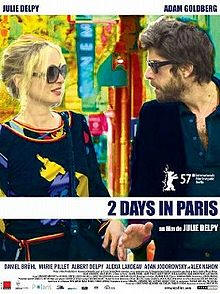
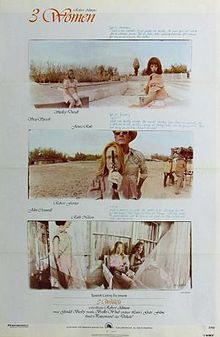
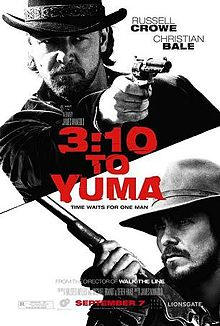
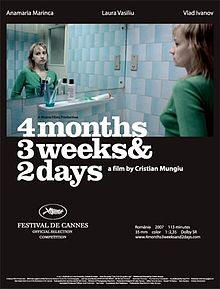


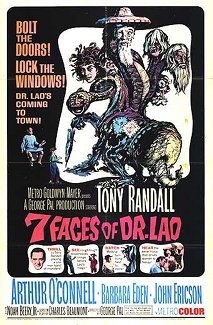

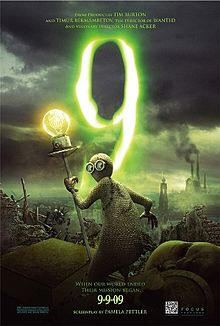
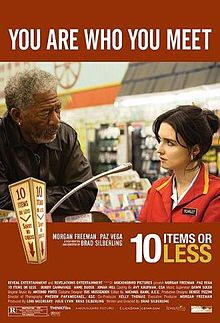

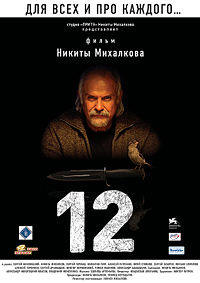
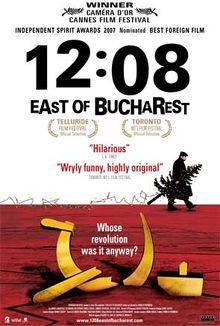







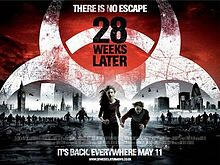
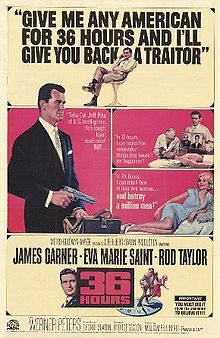


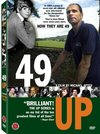
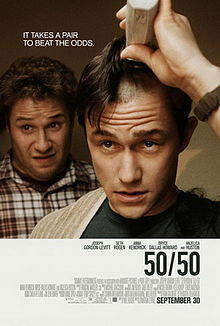



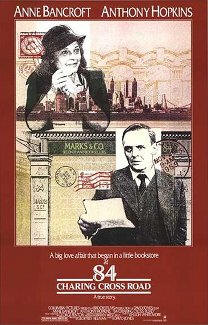
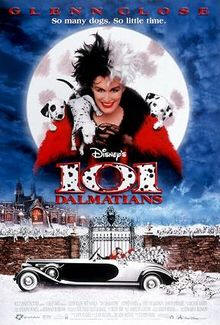
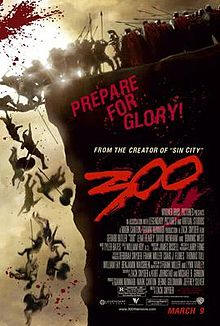
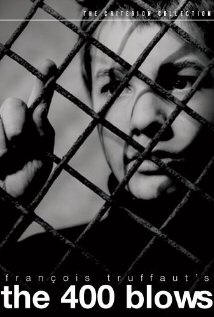
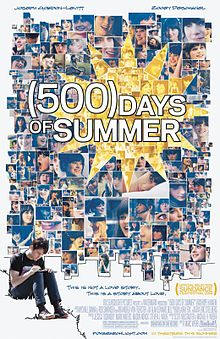
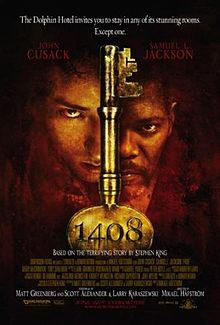

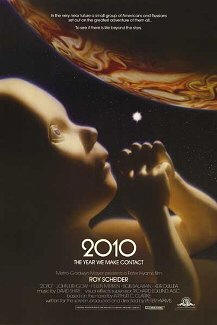
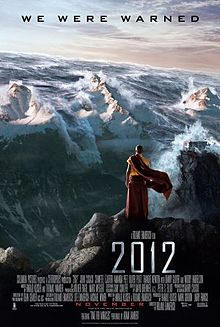



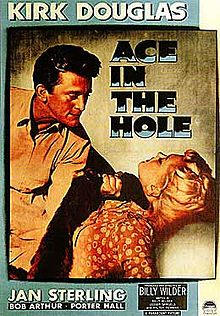

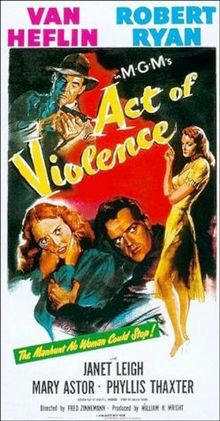


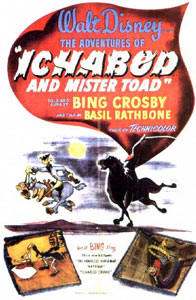
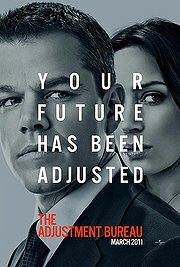
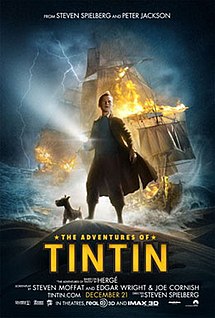
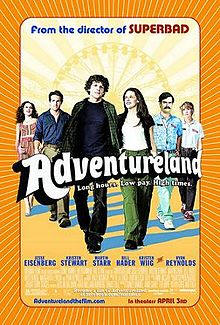
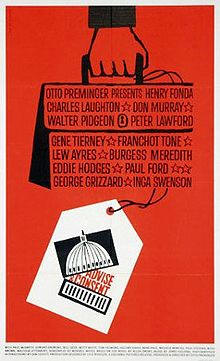
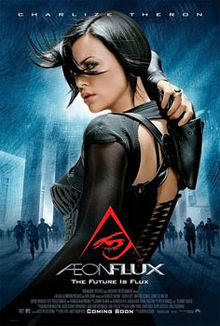






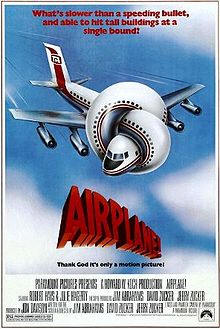



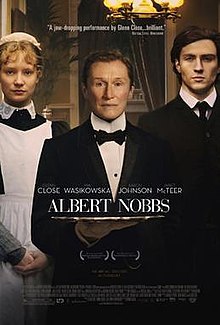



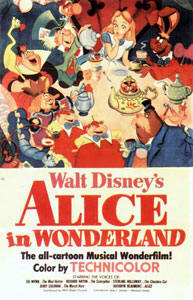
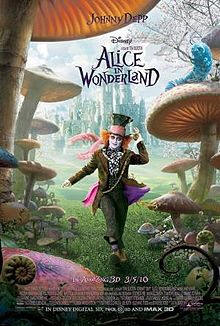

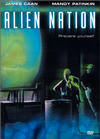

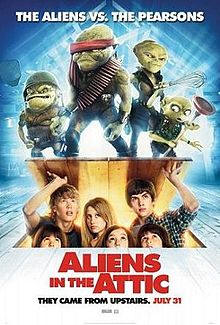
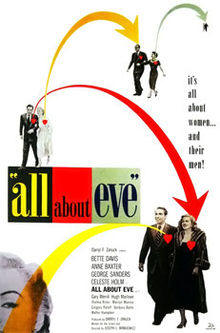
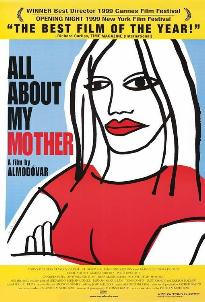
.jpg/220px-All_Of_Me_(1984_film).jpg)

